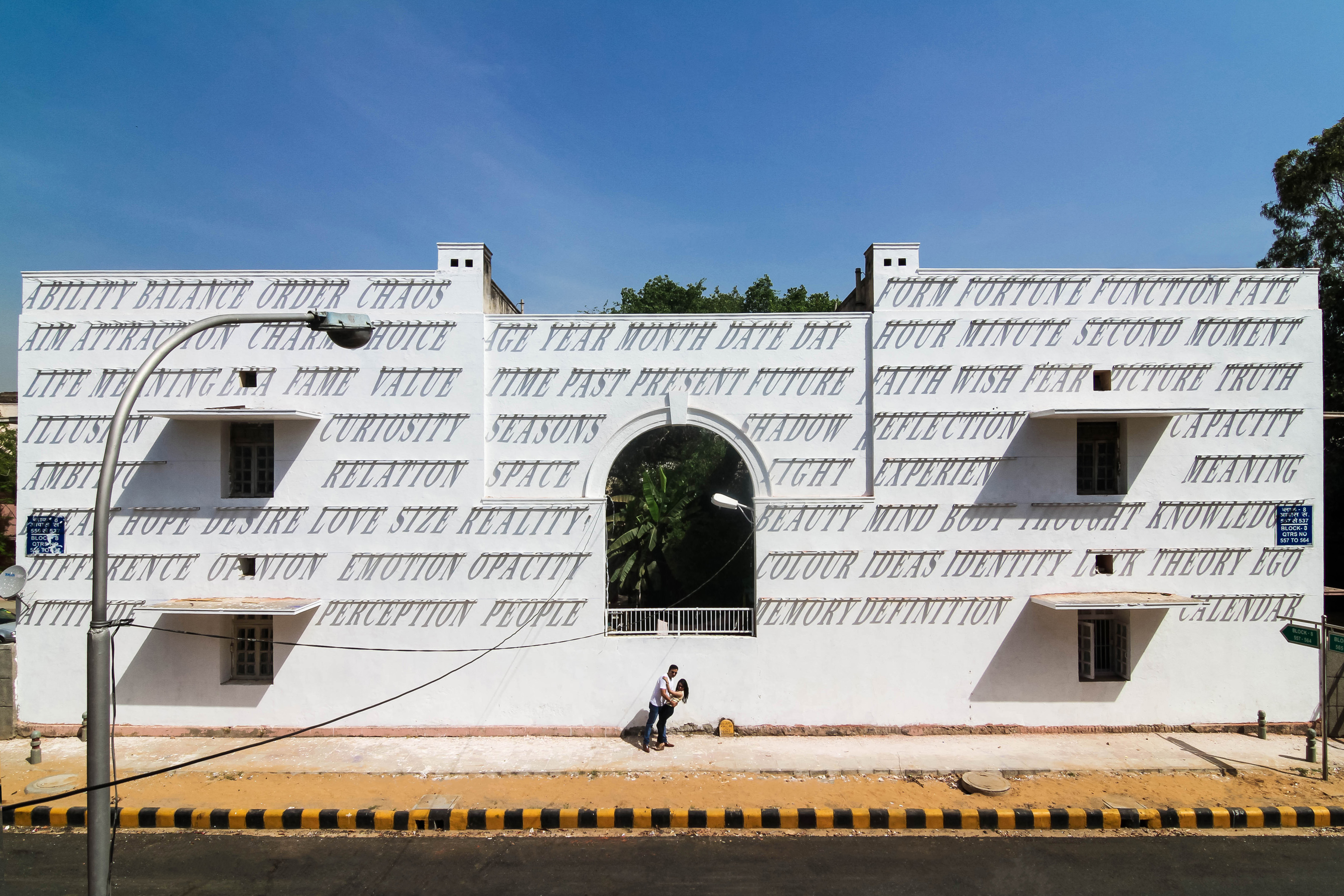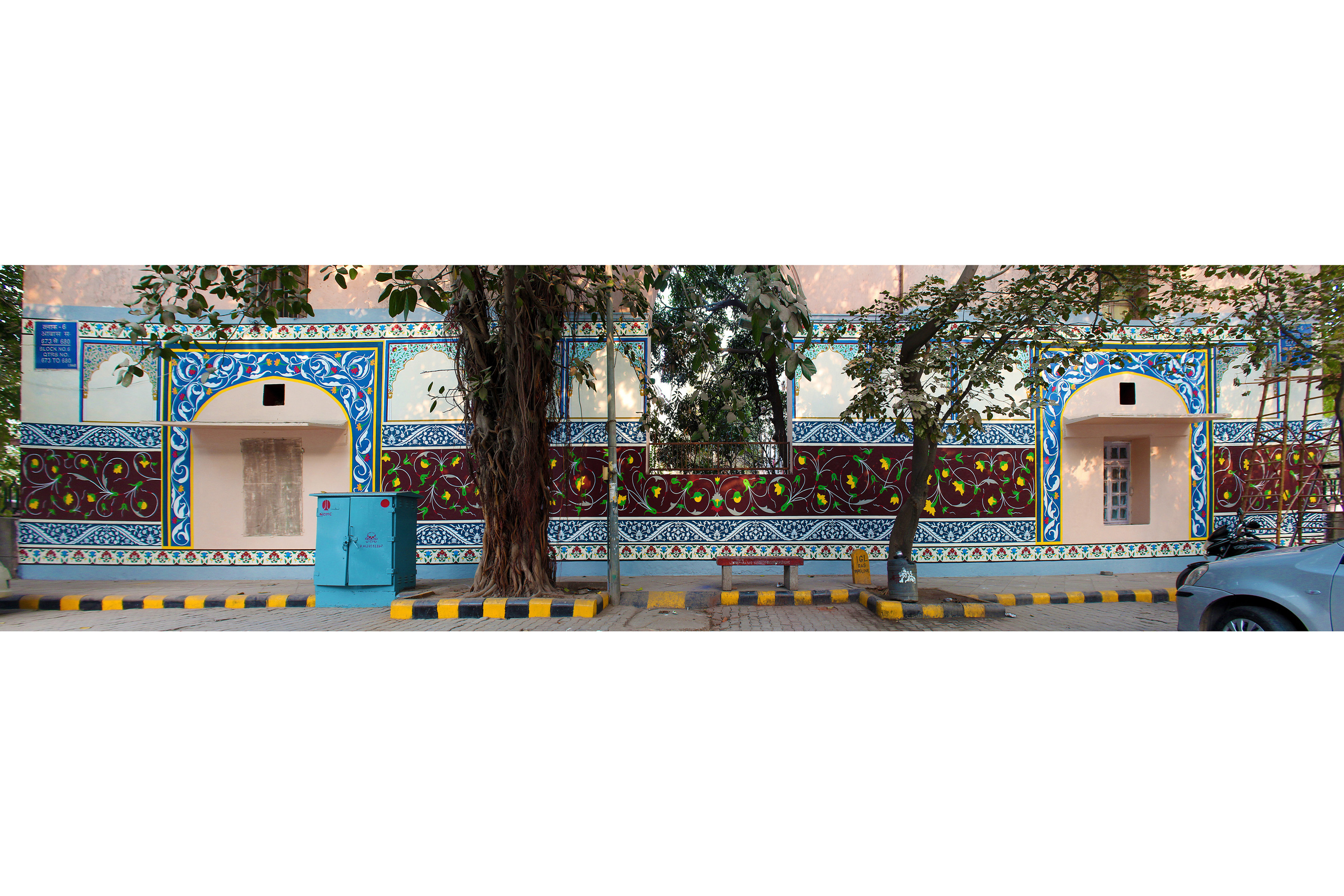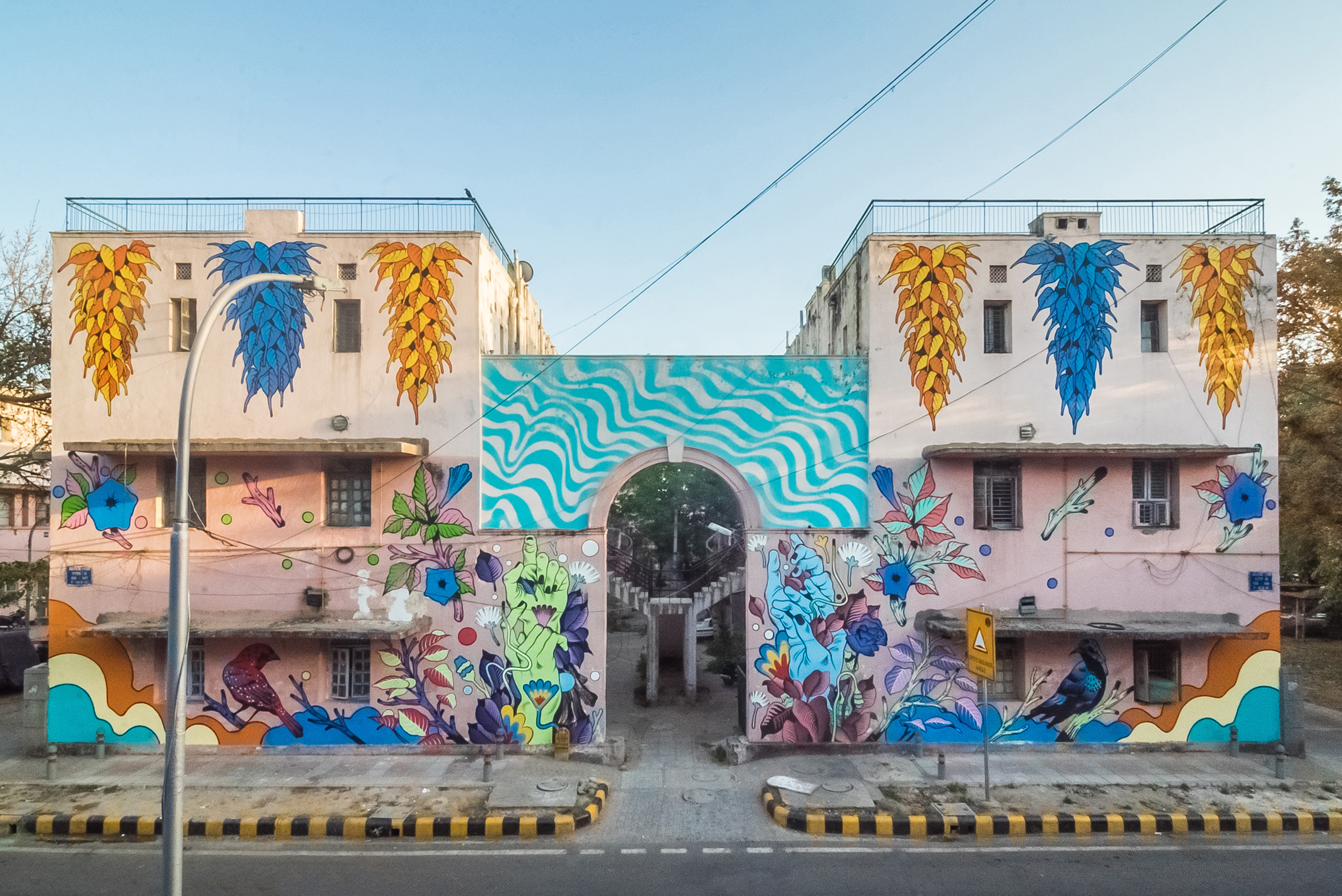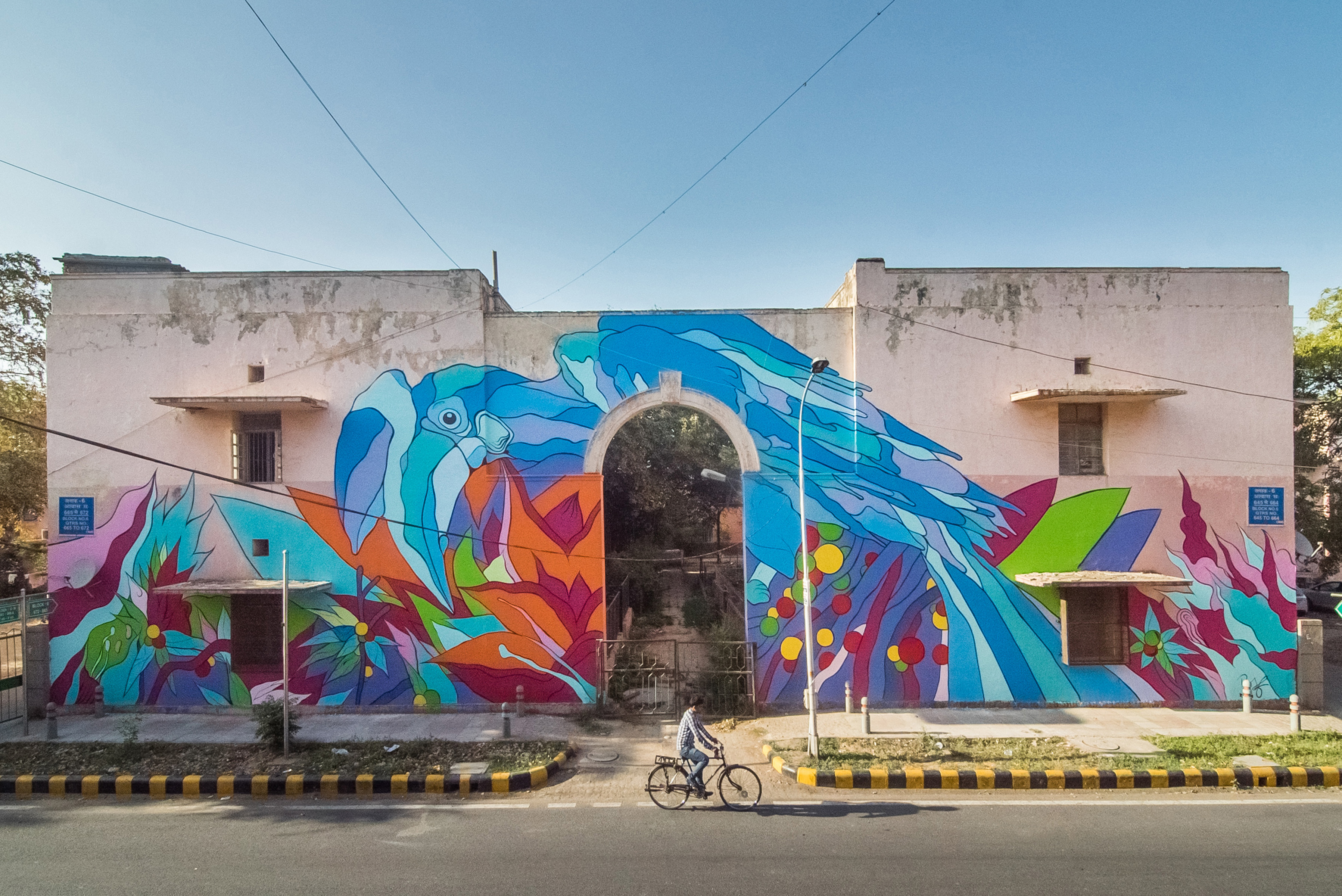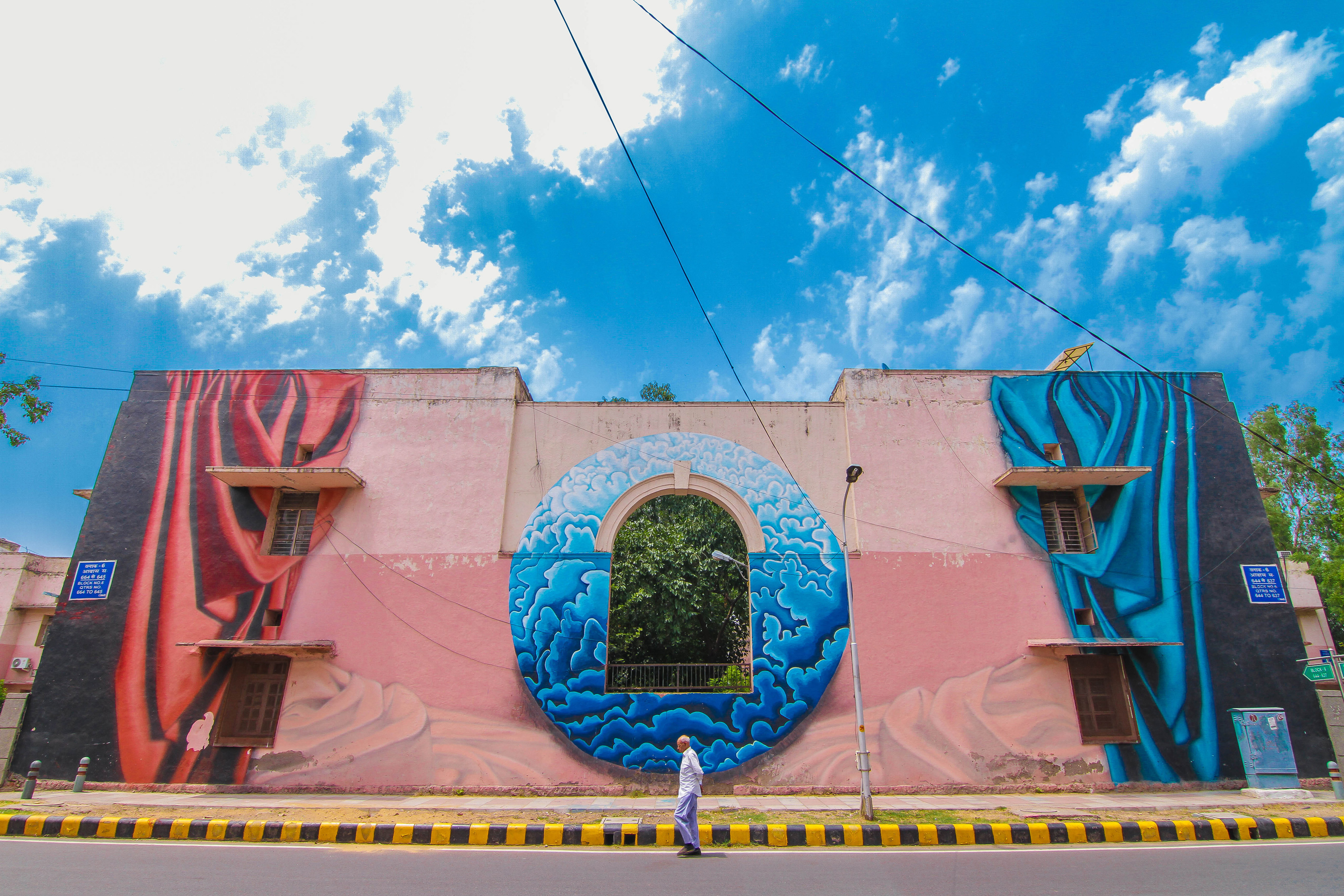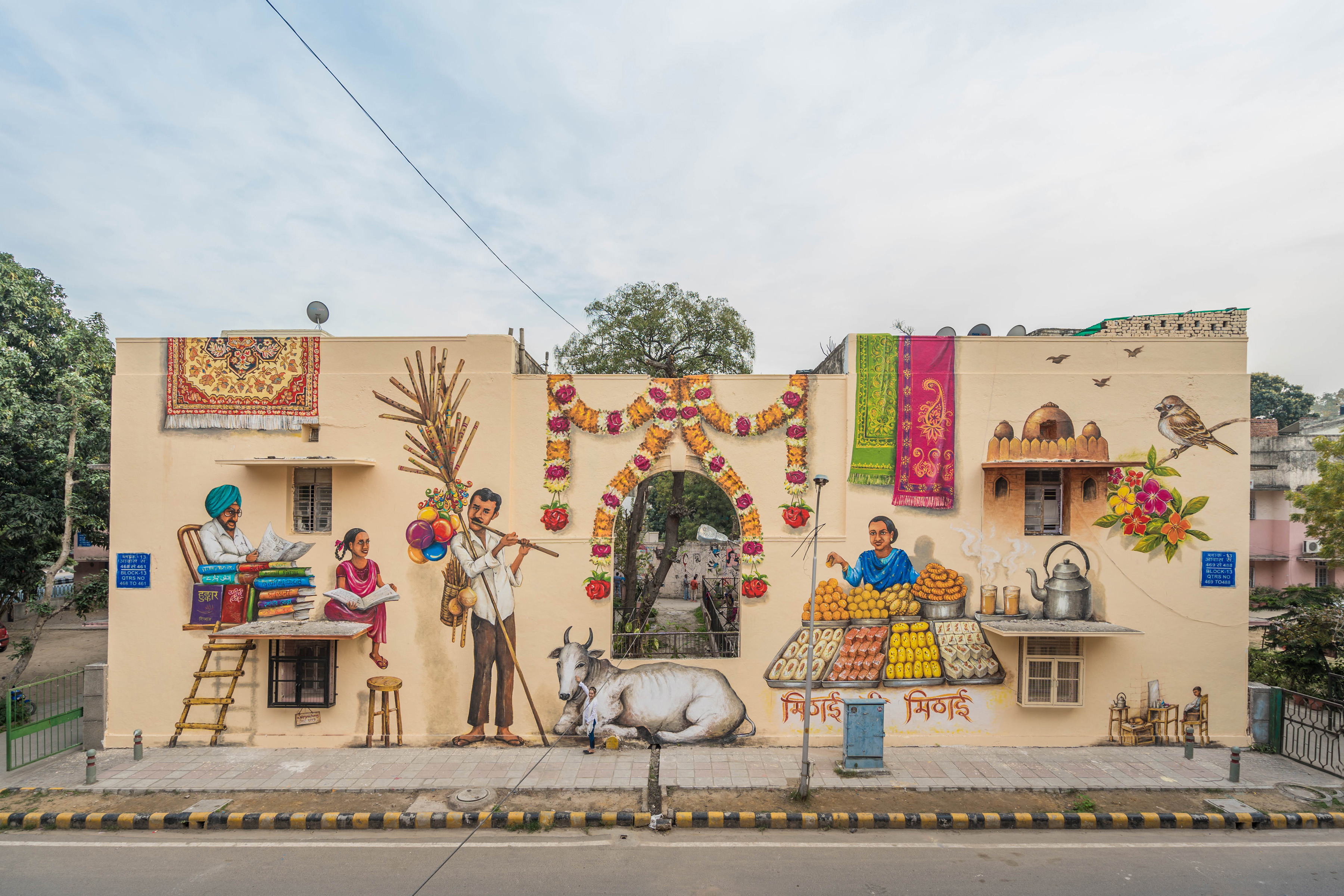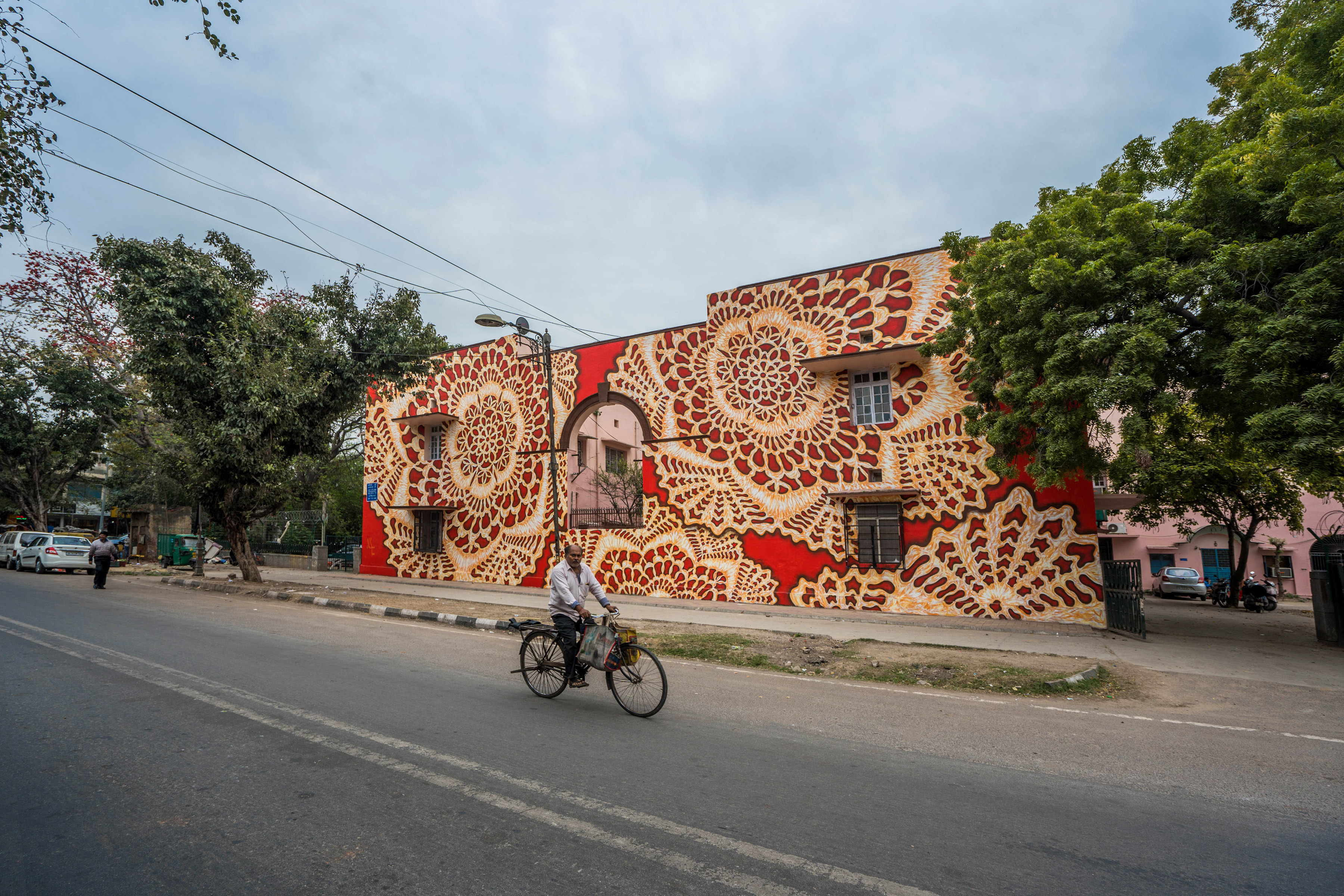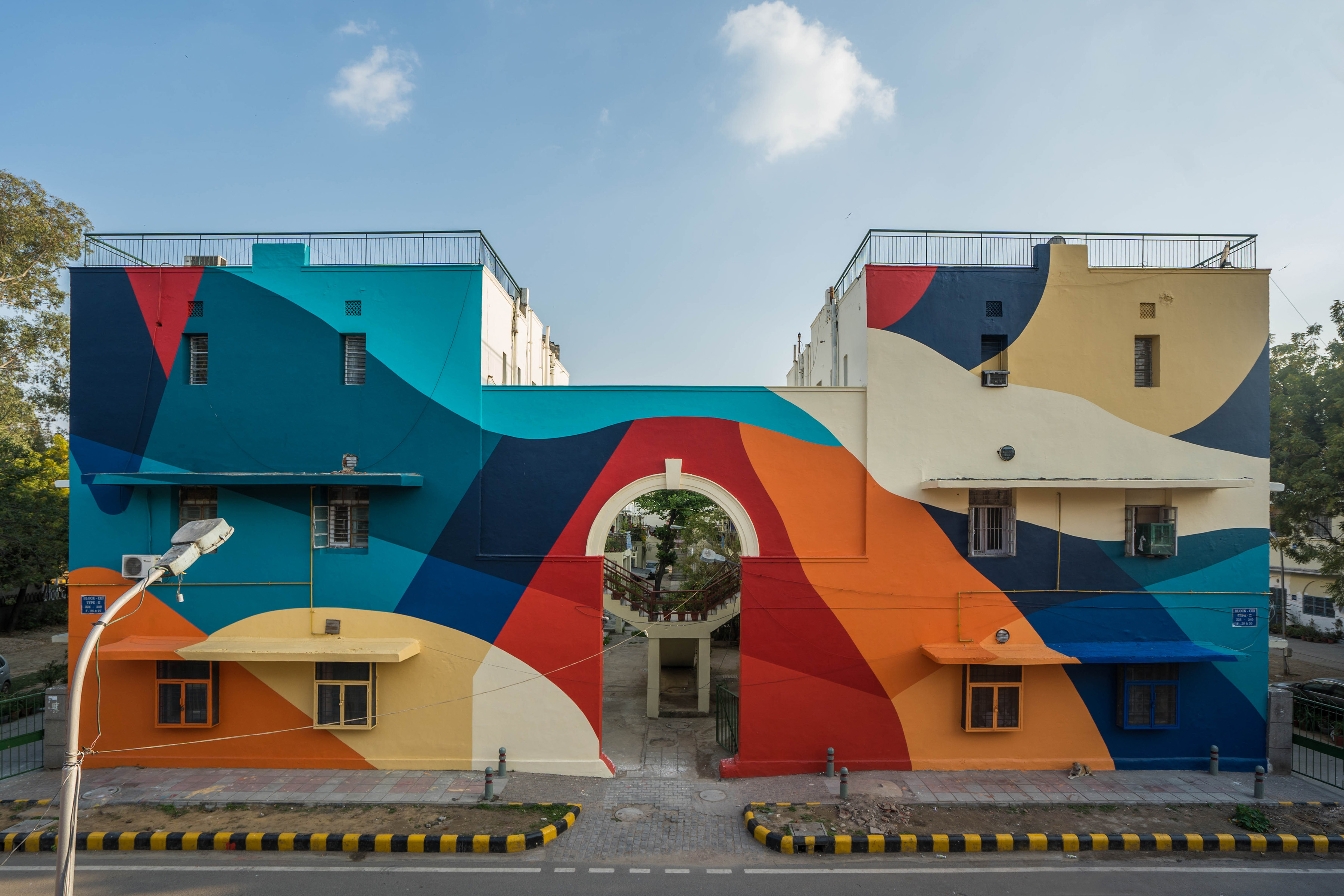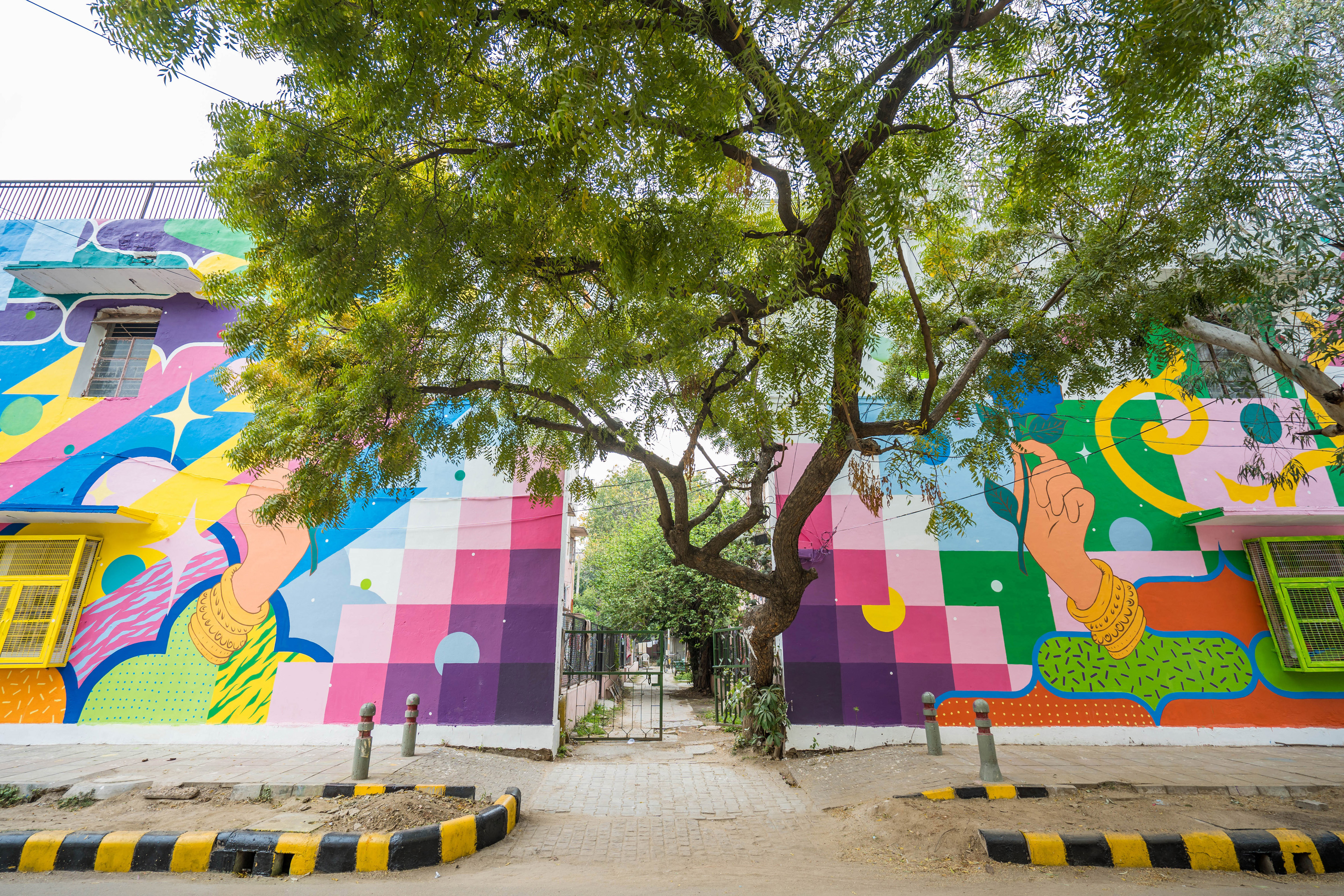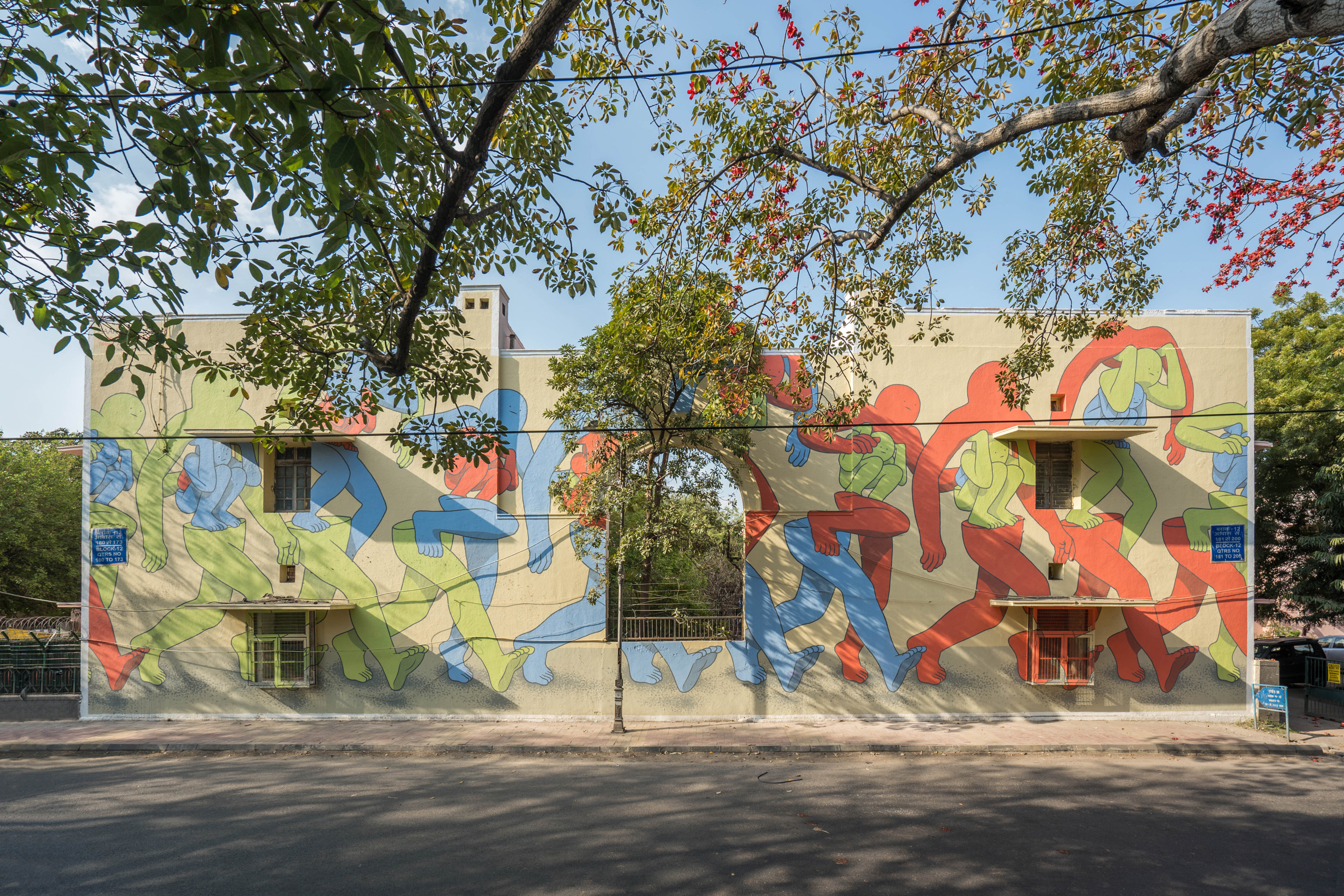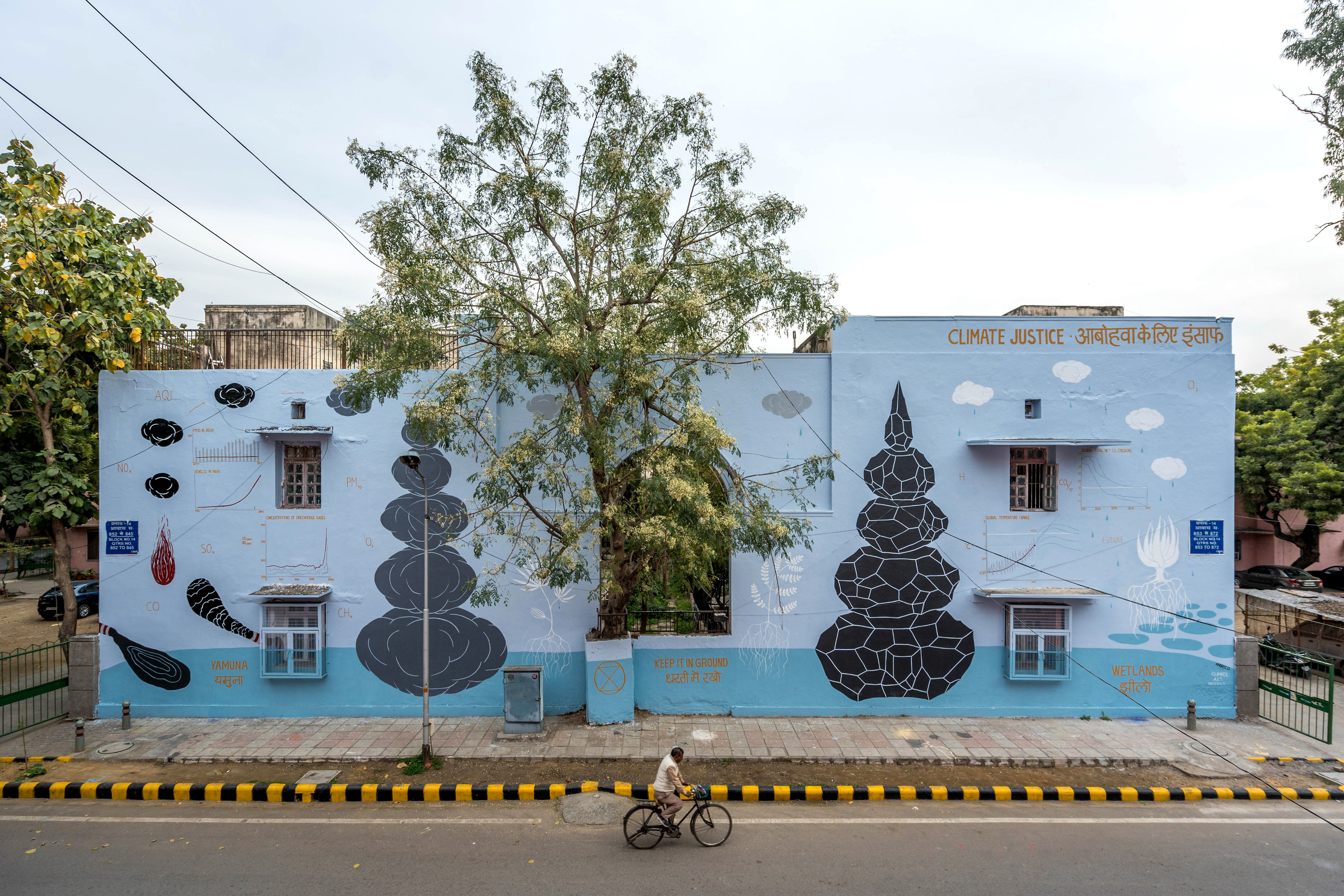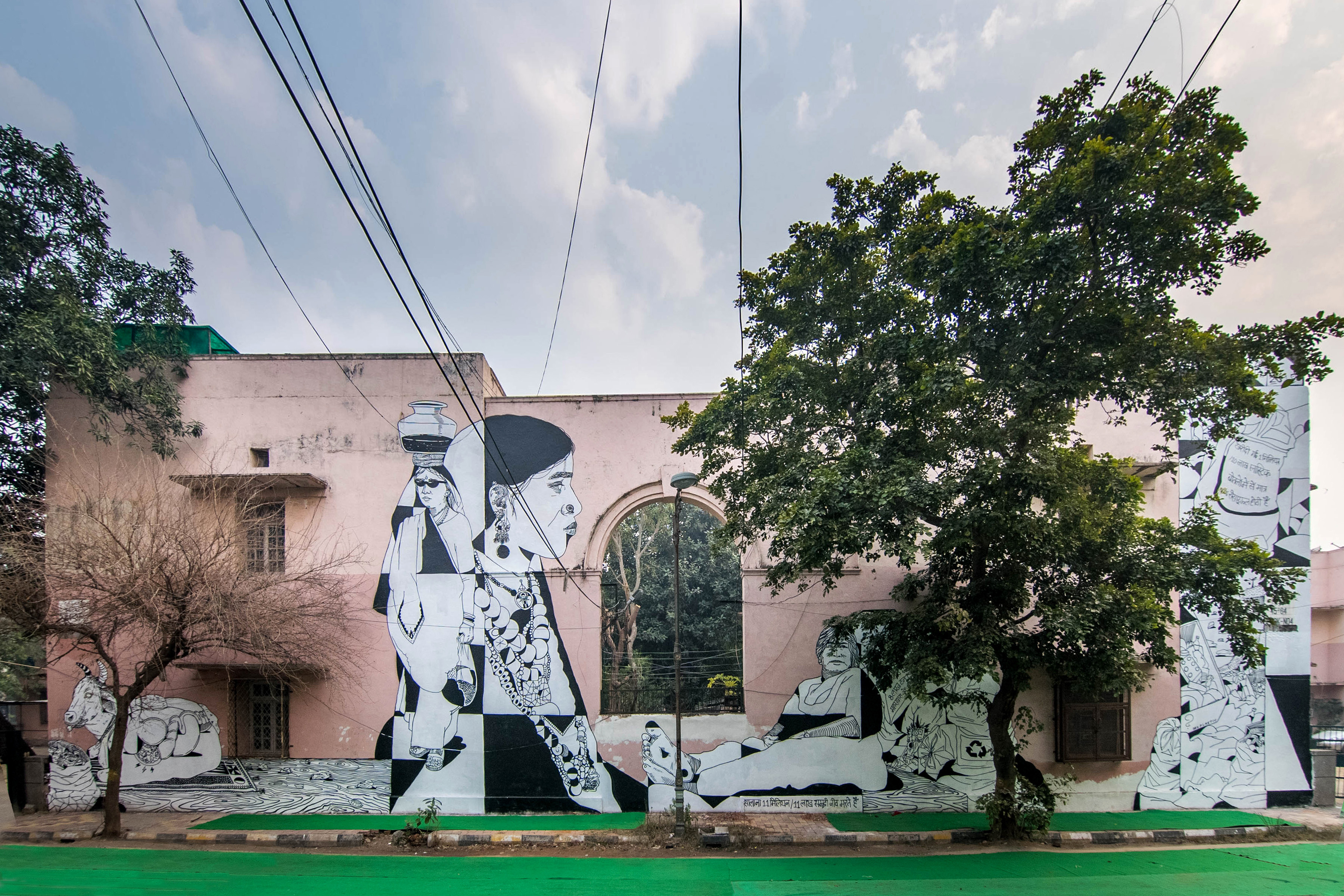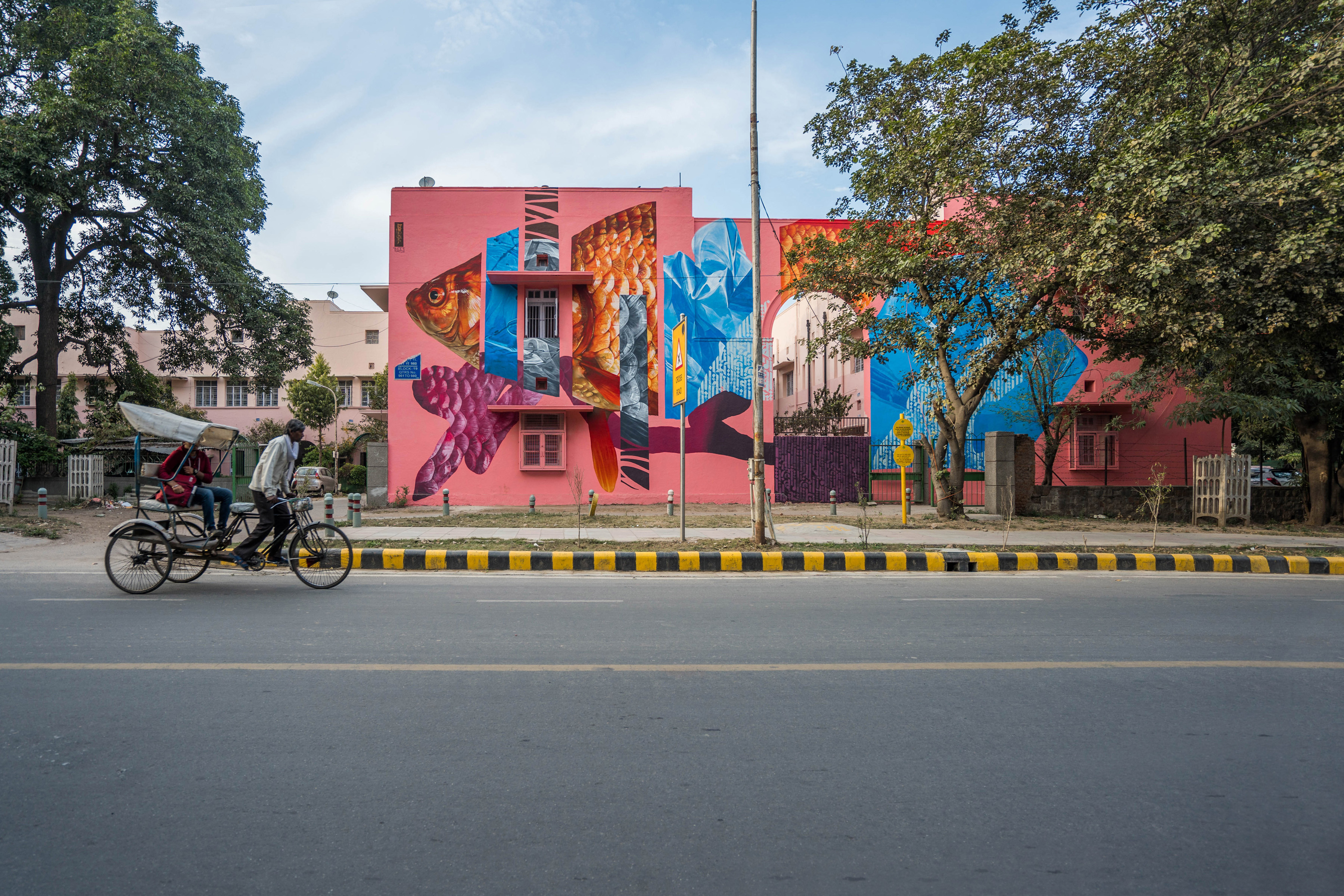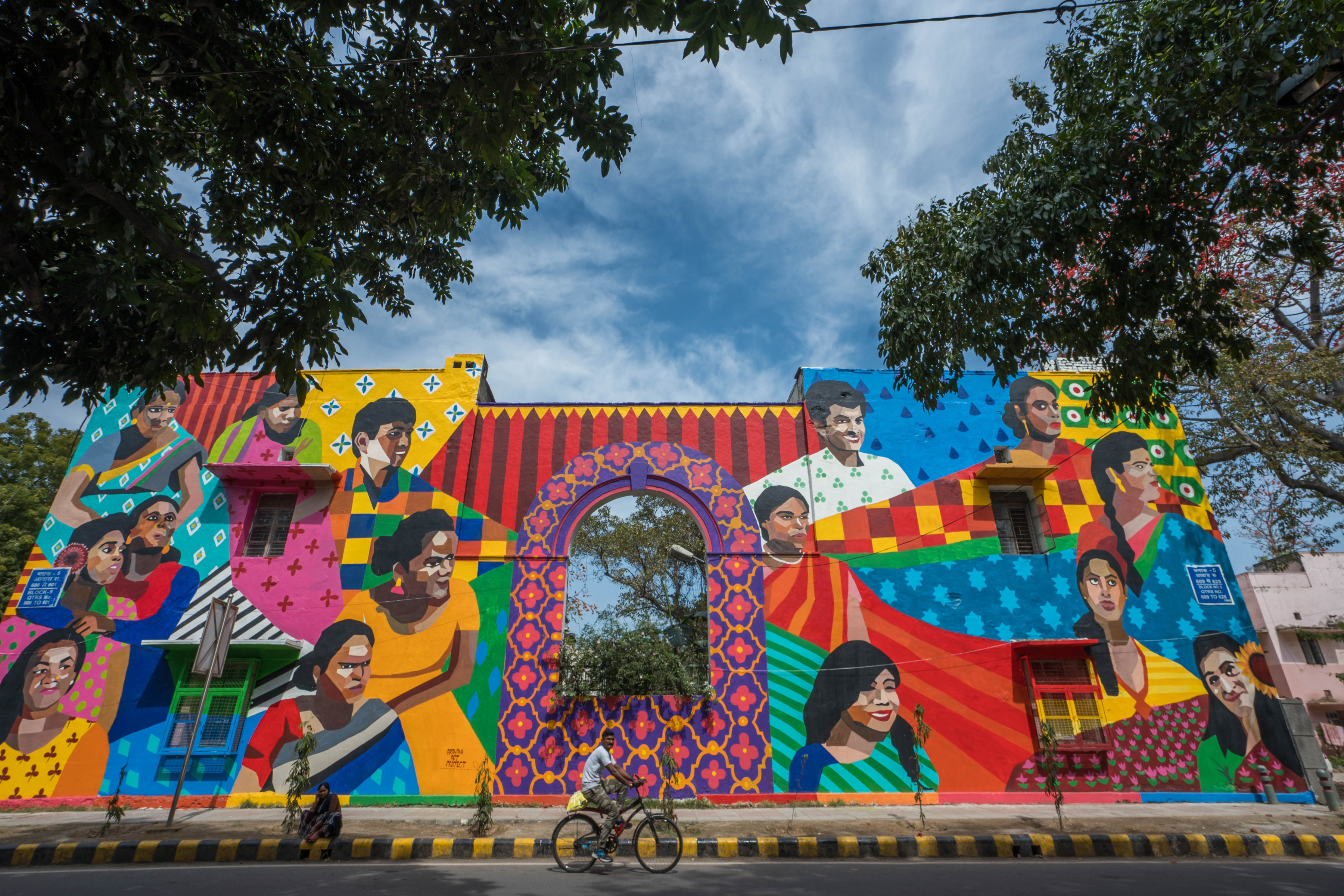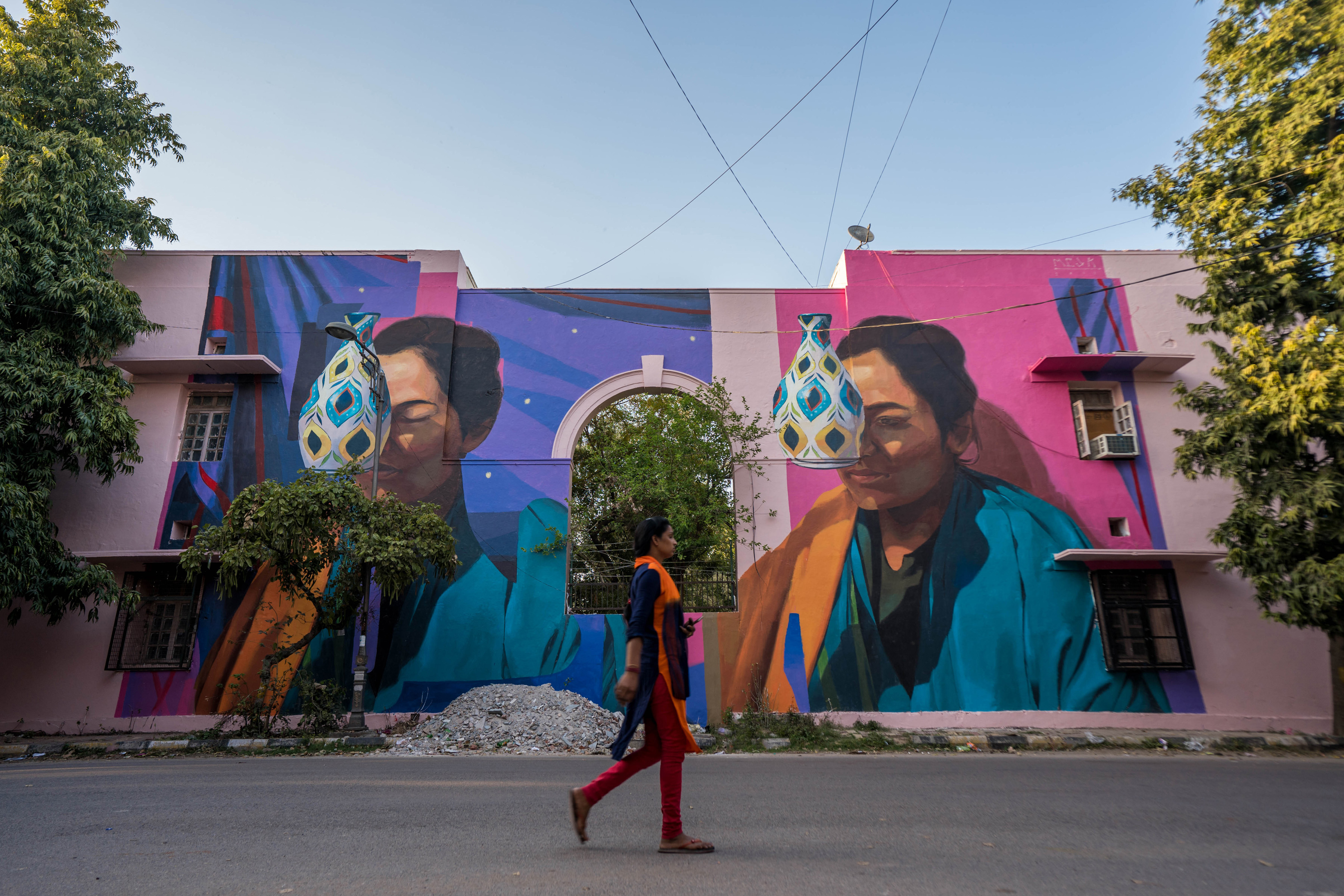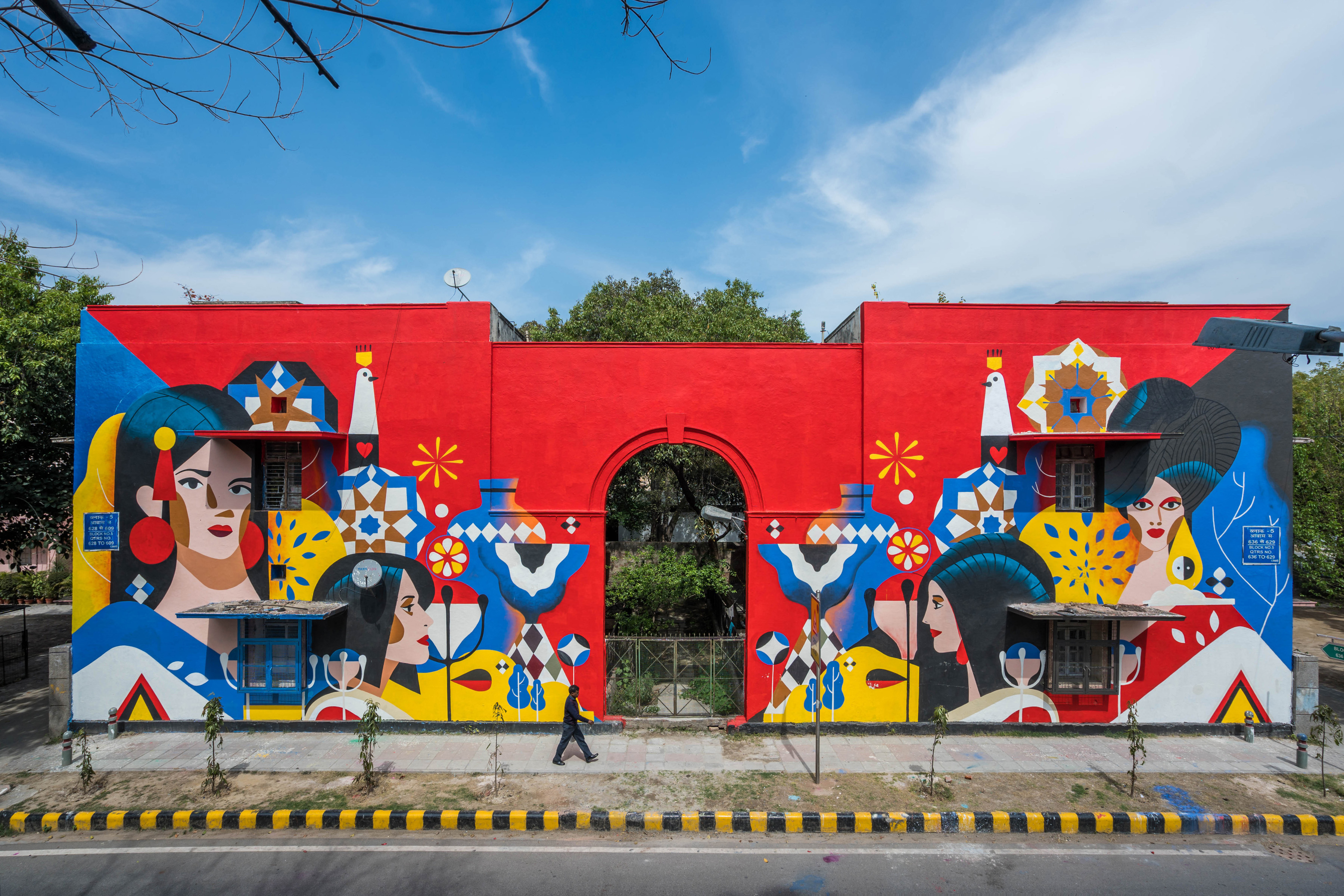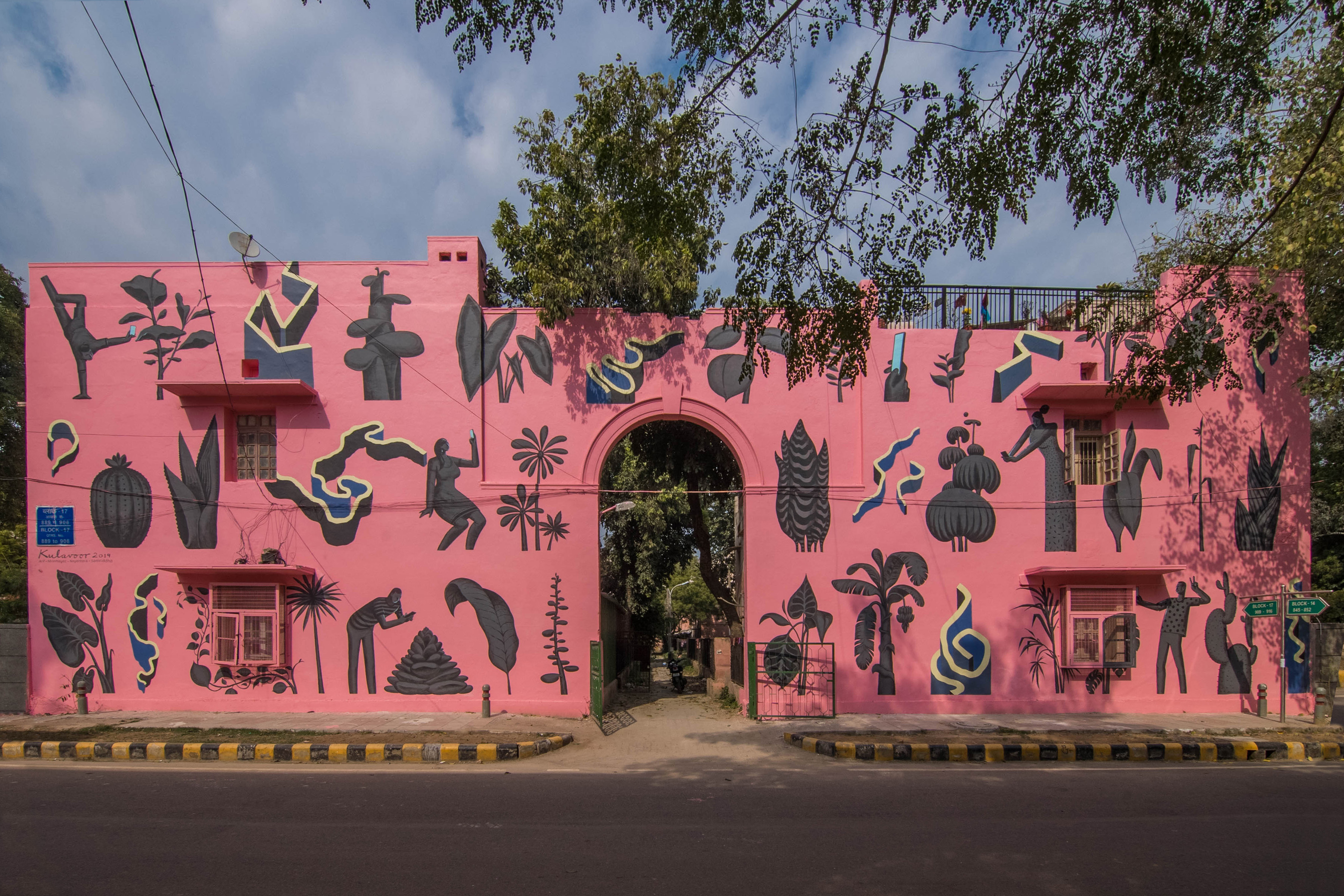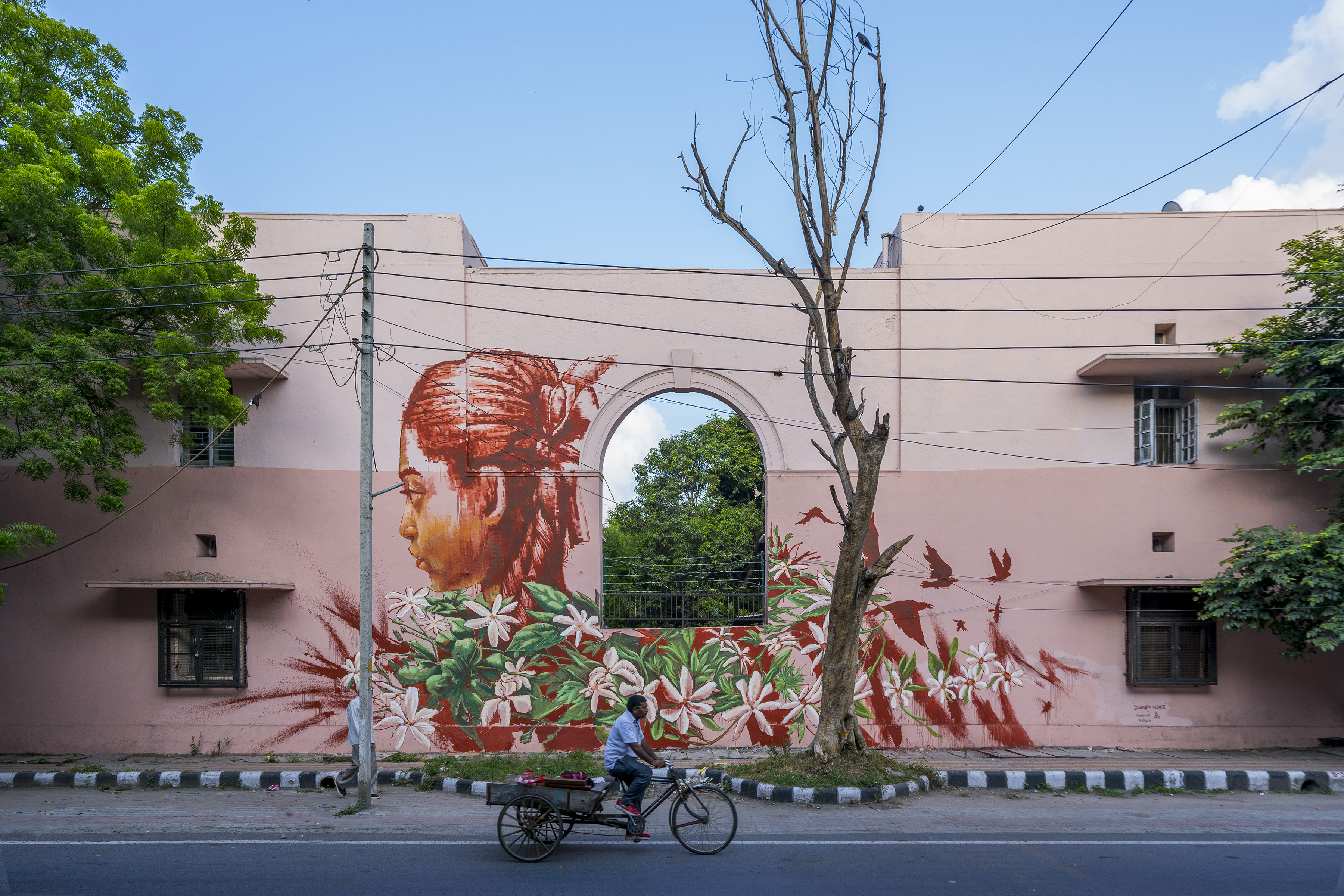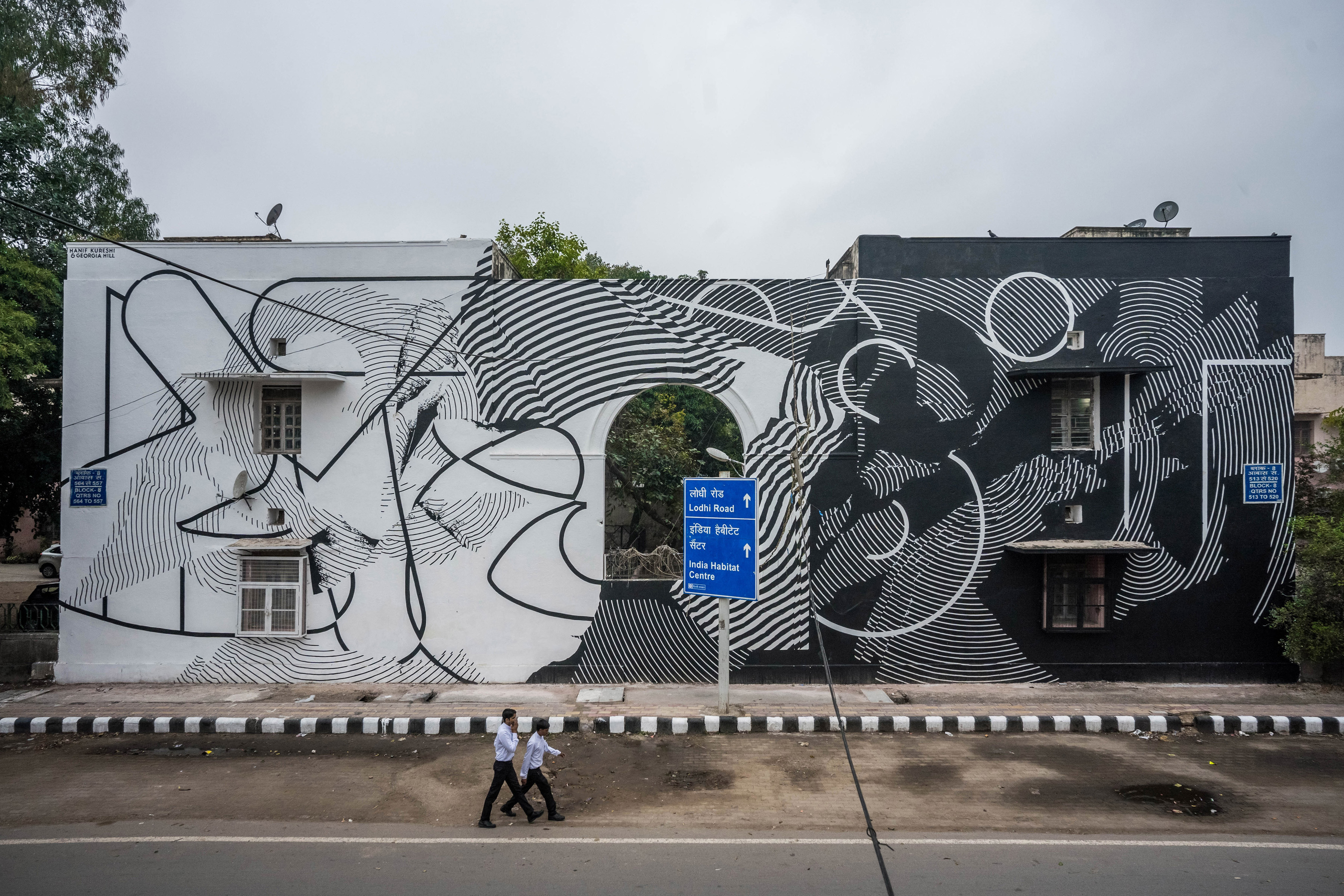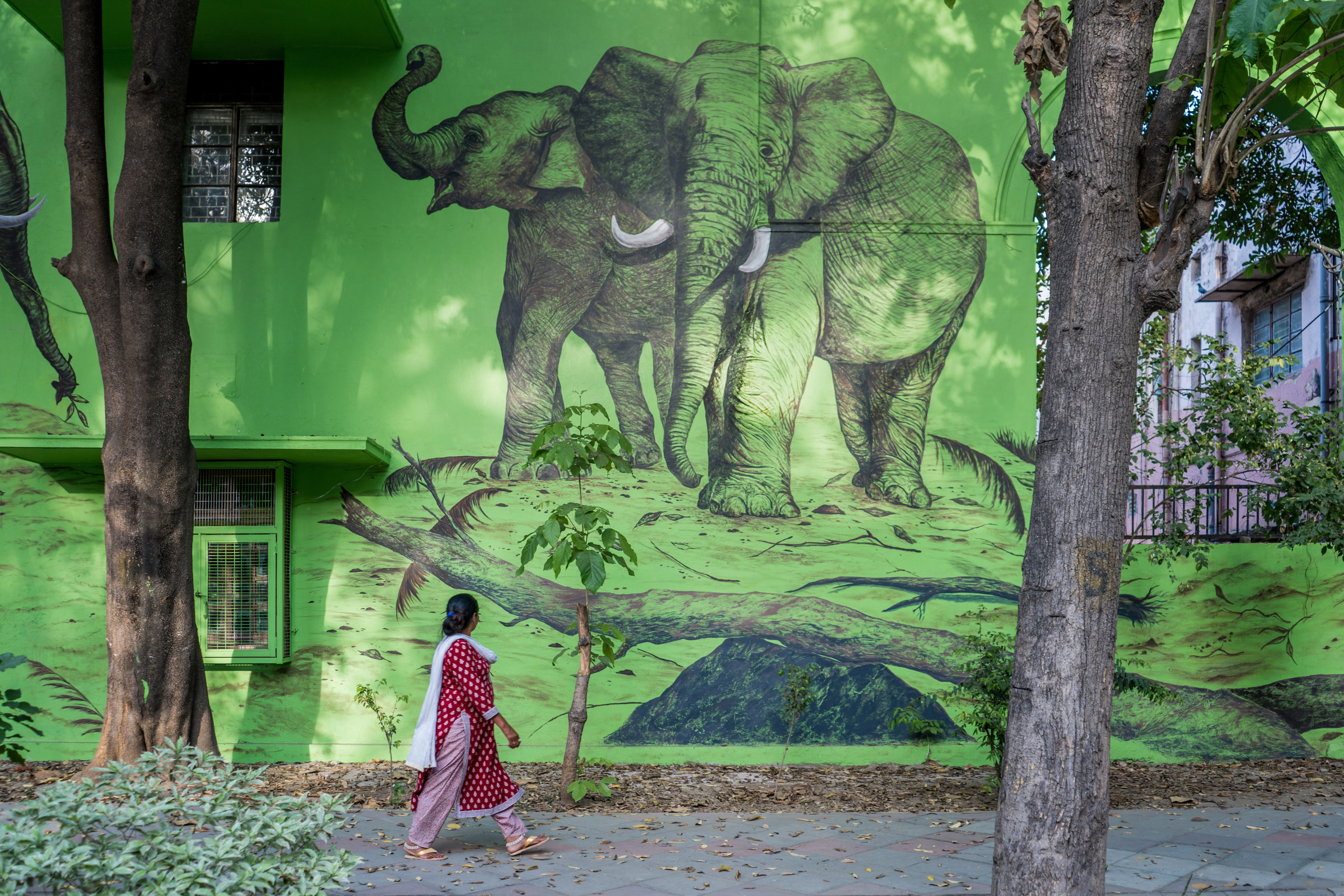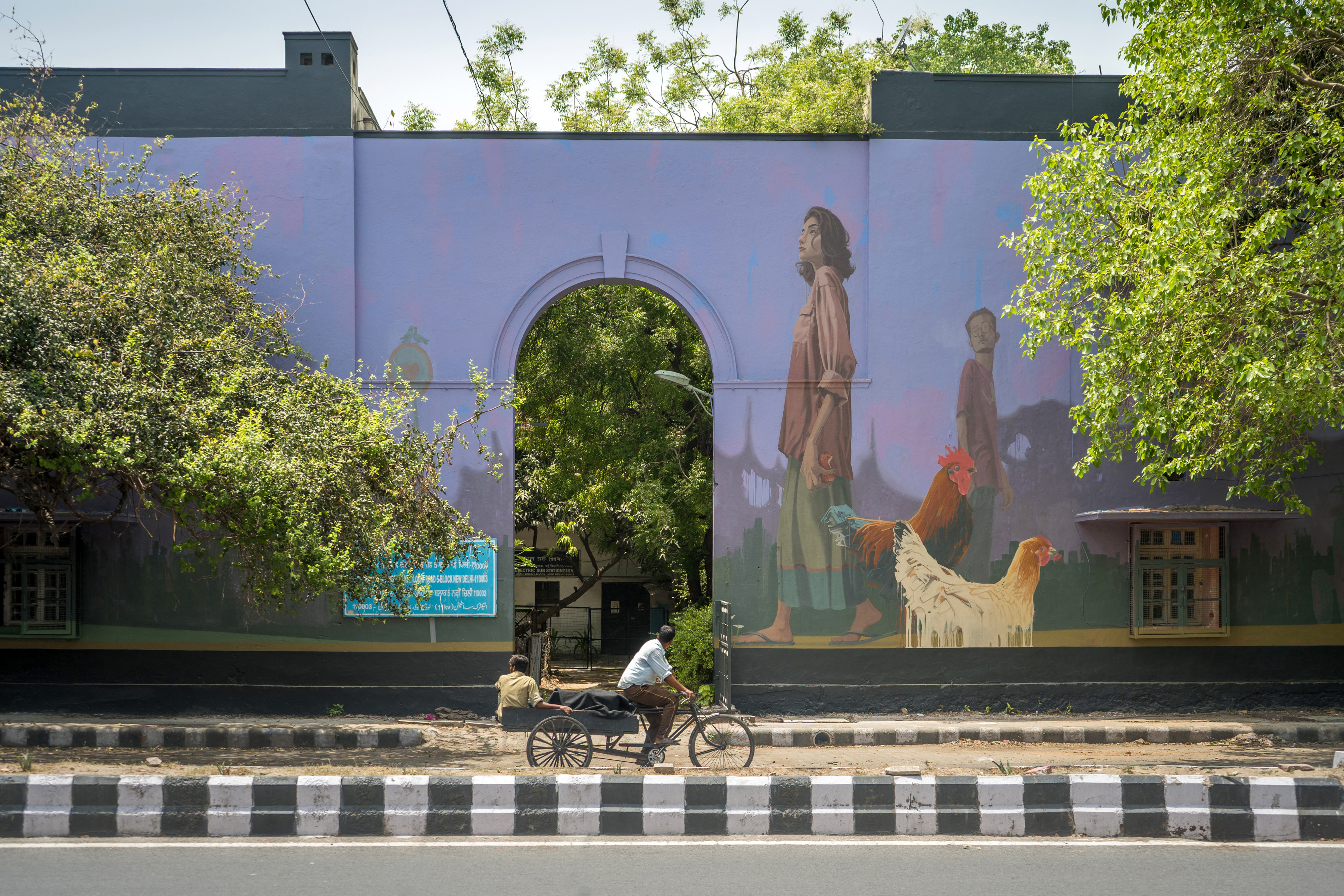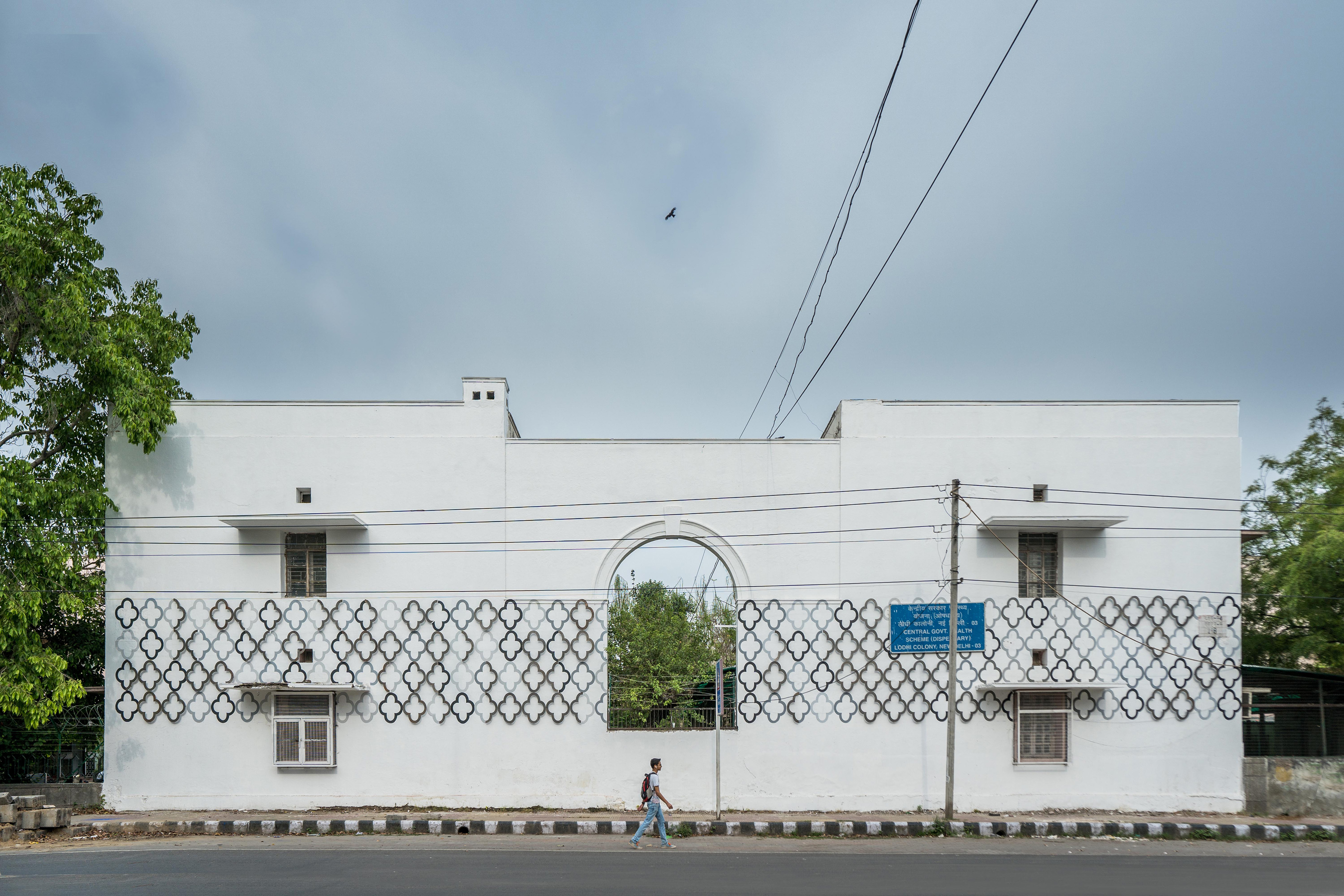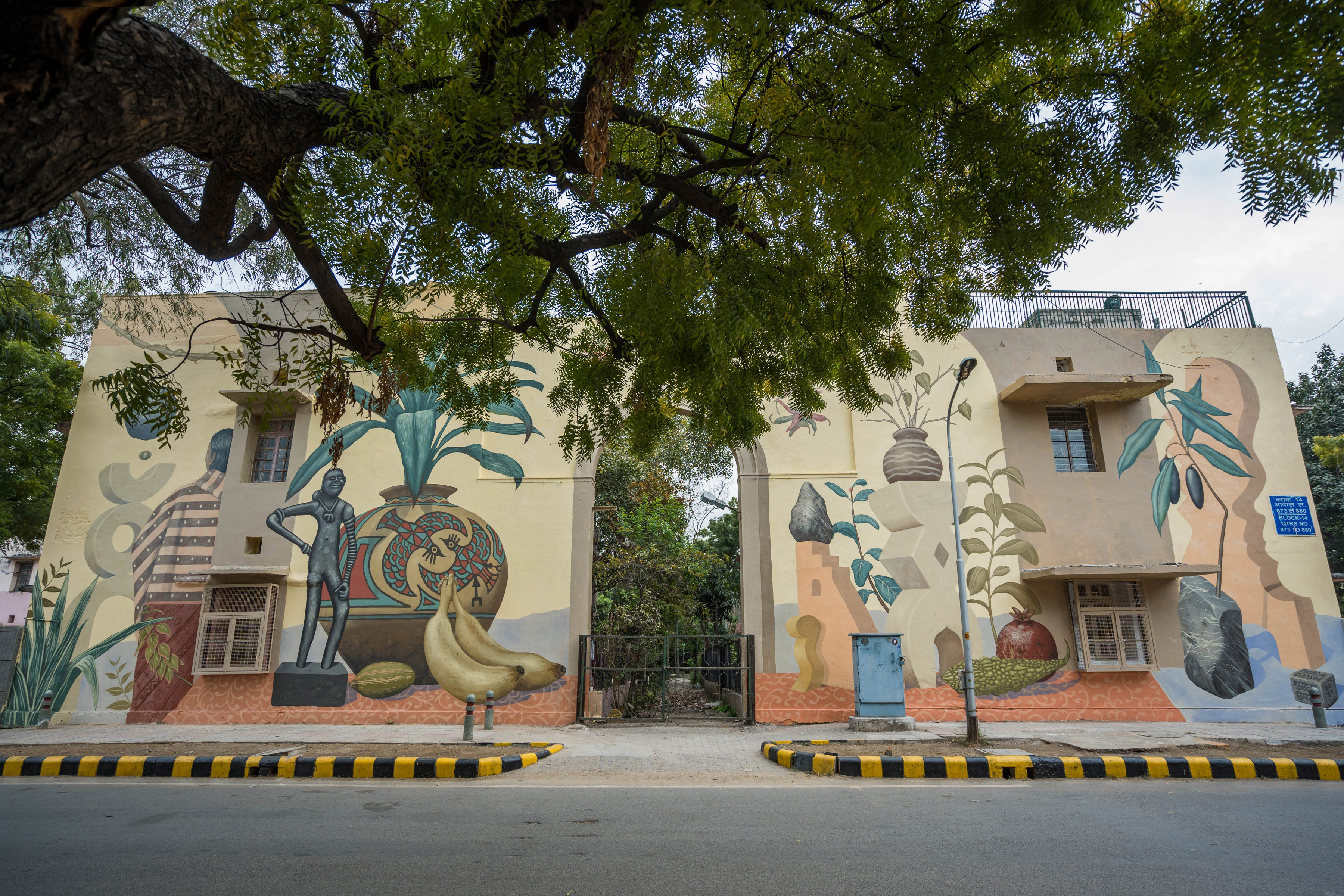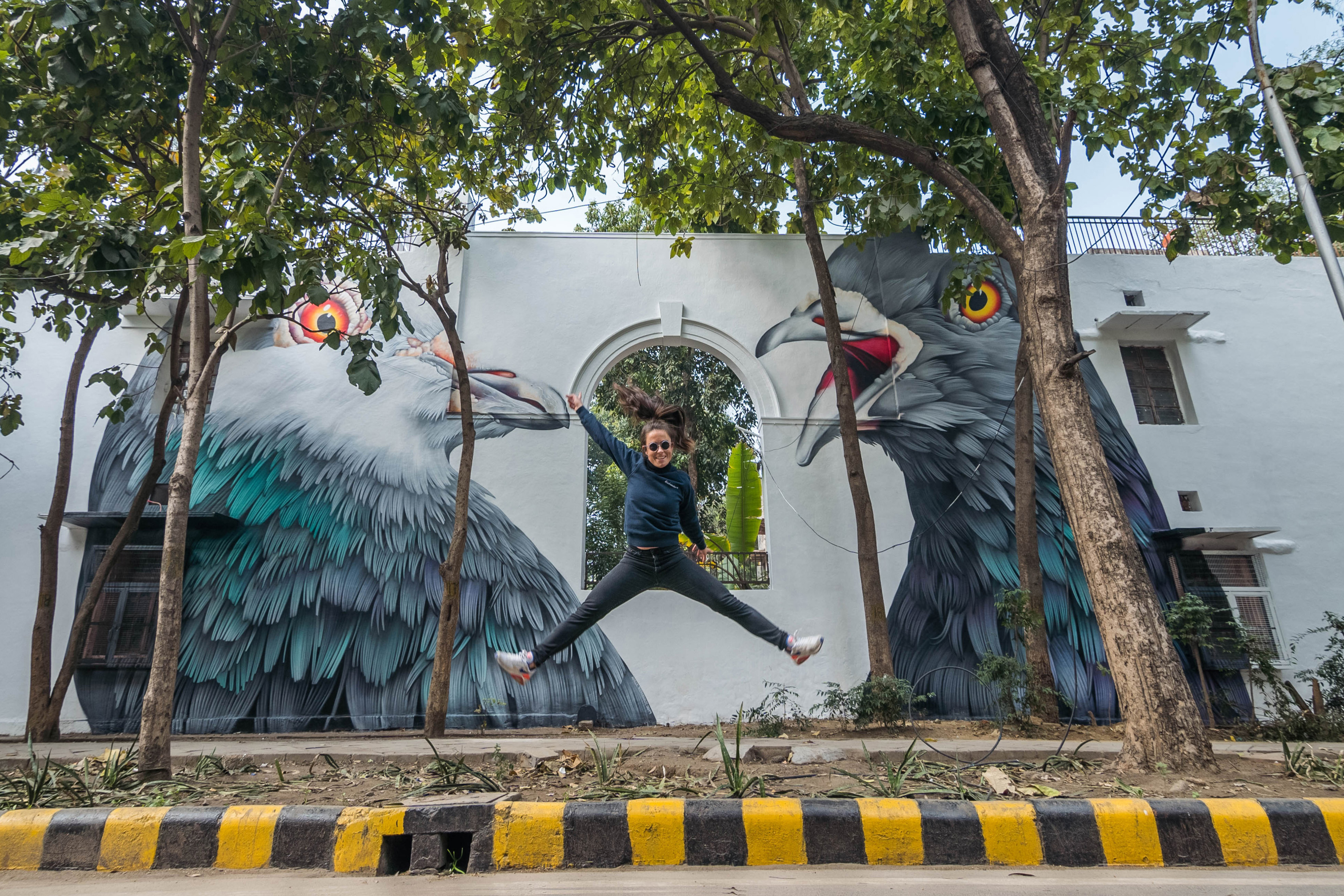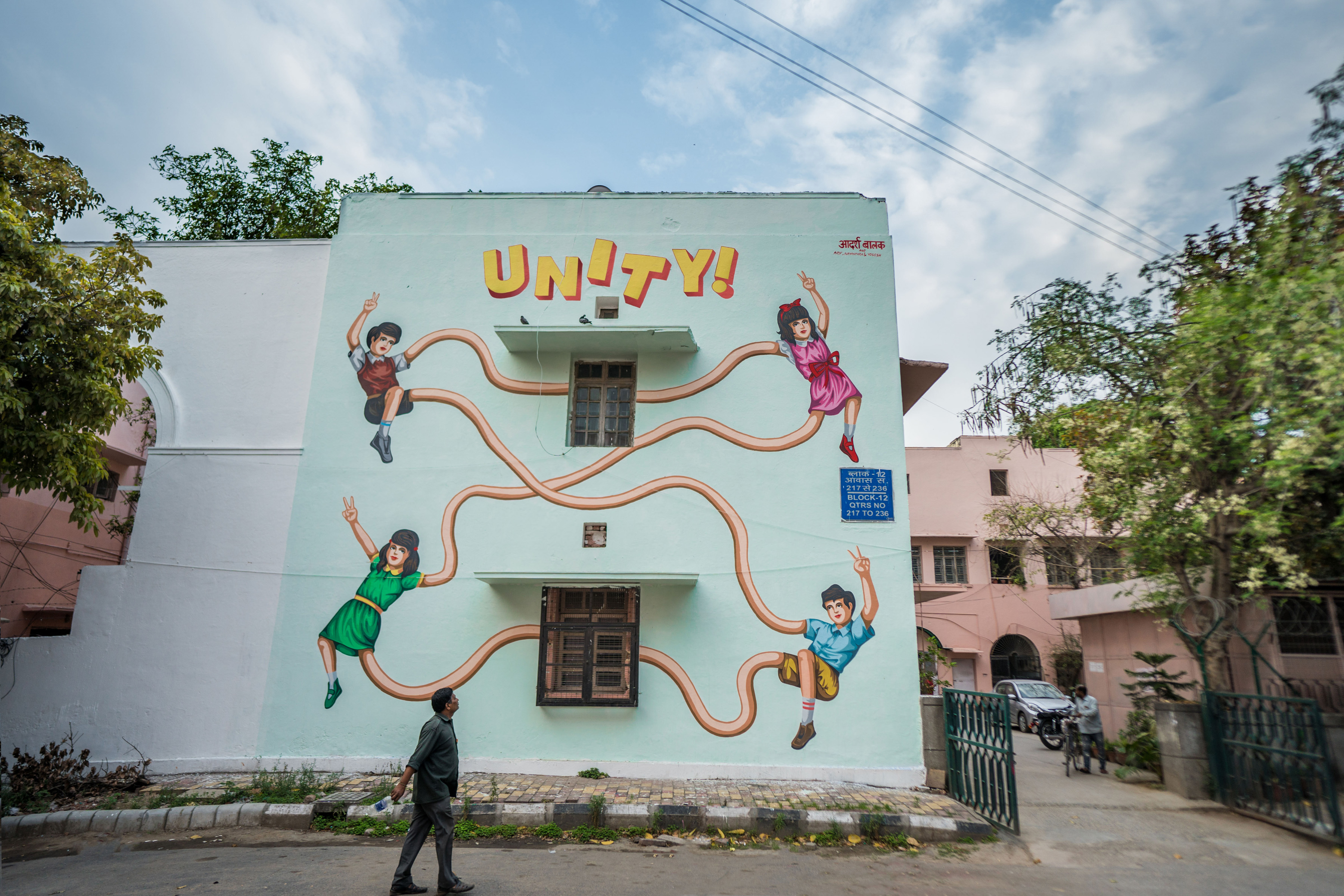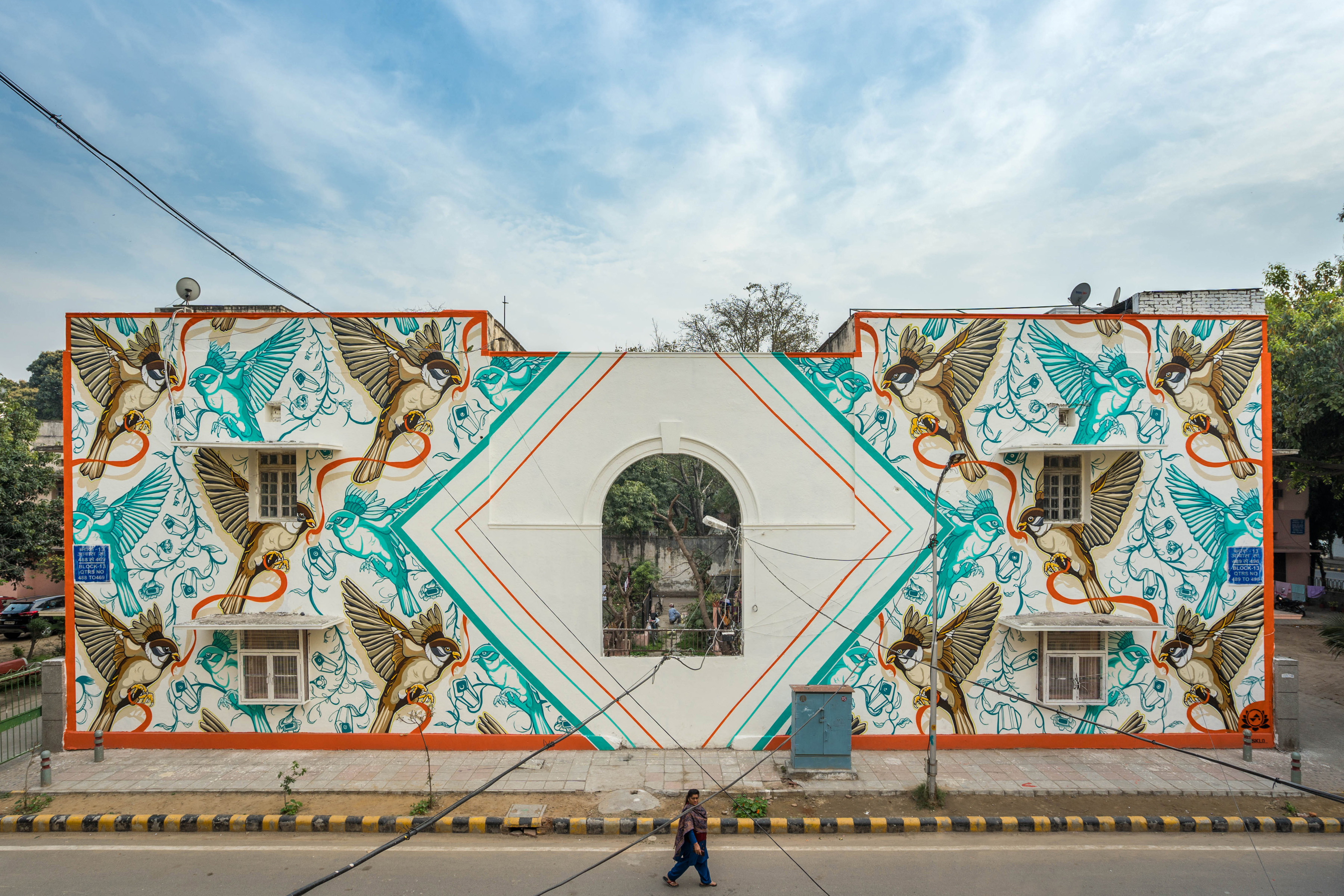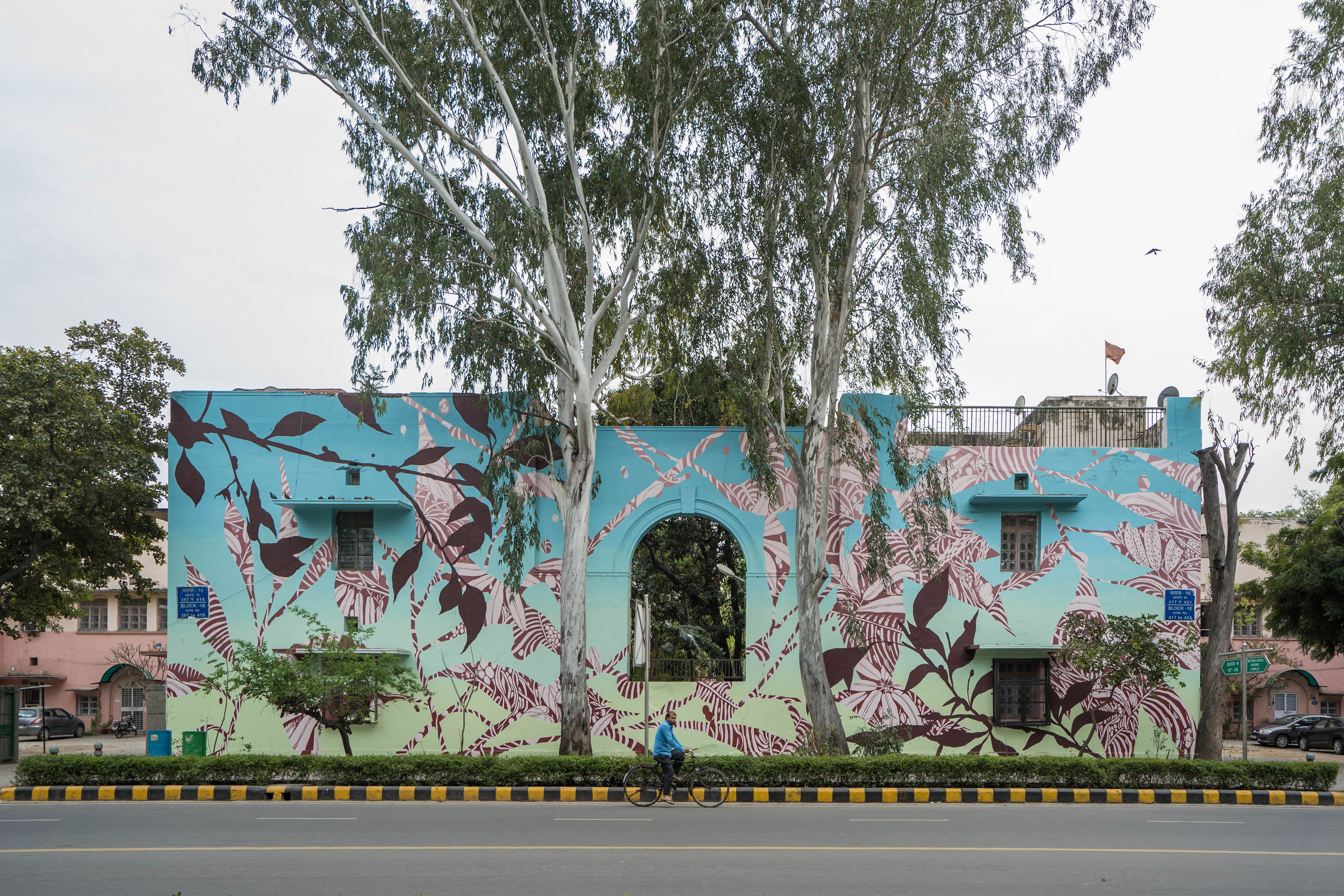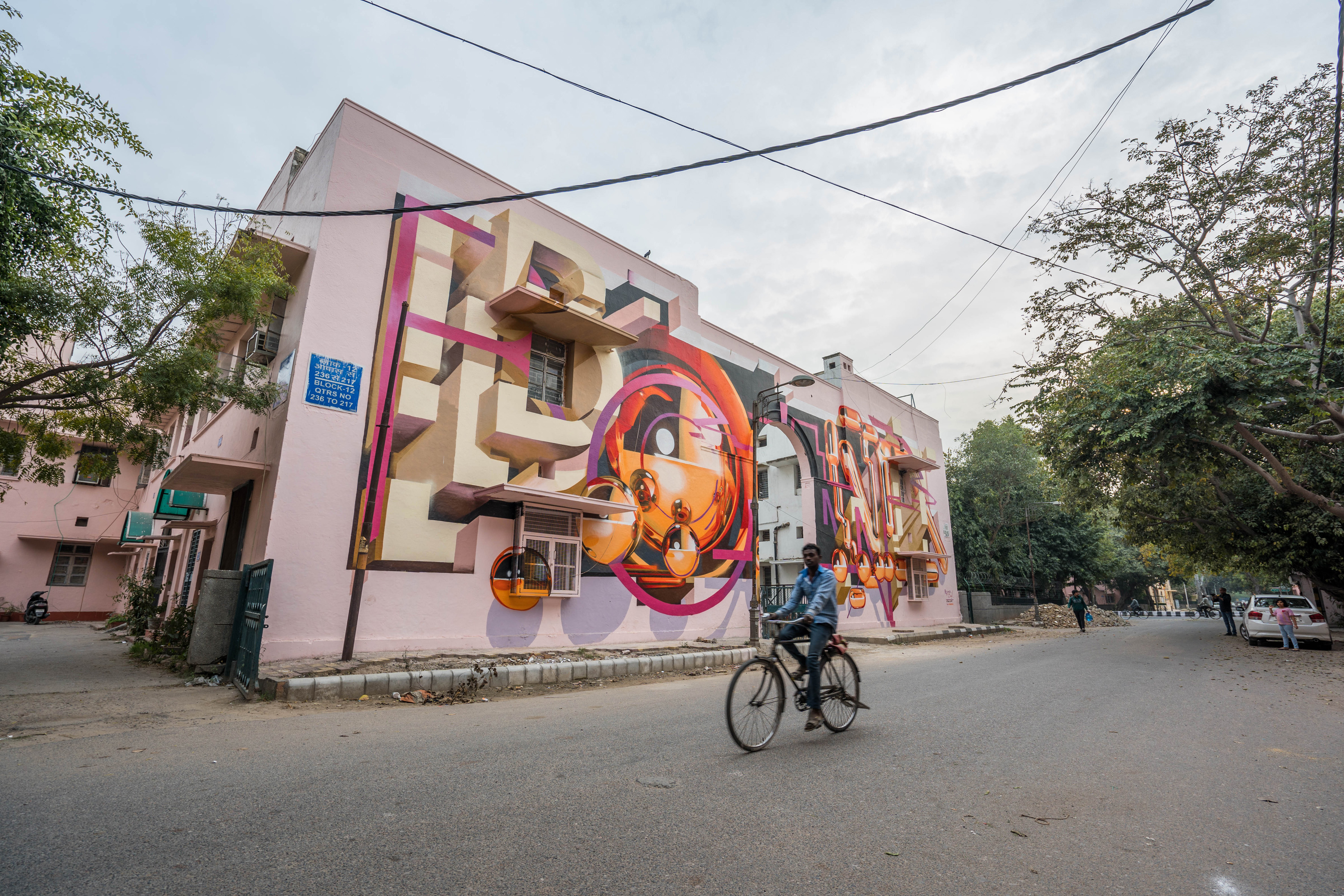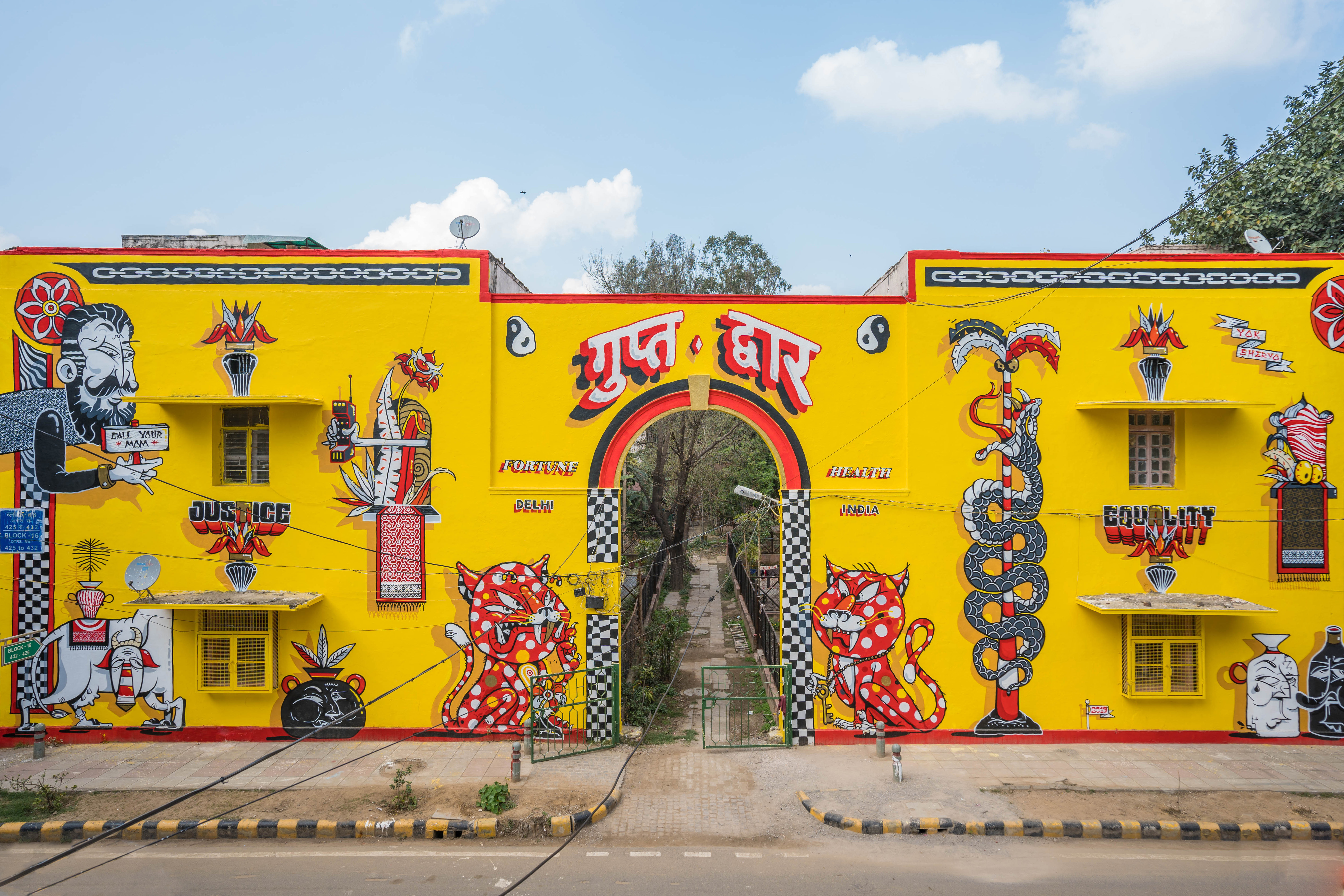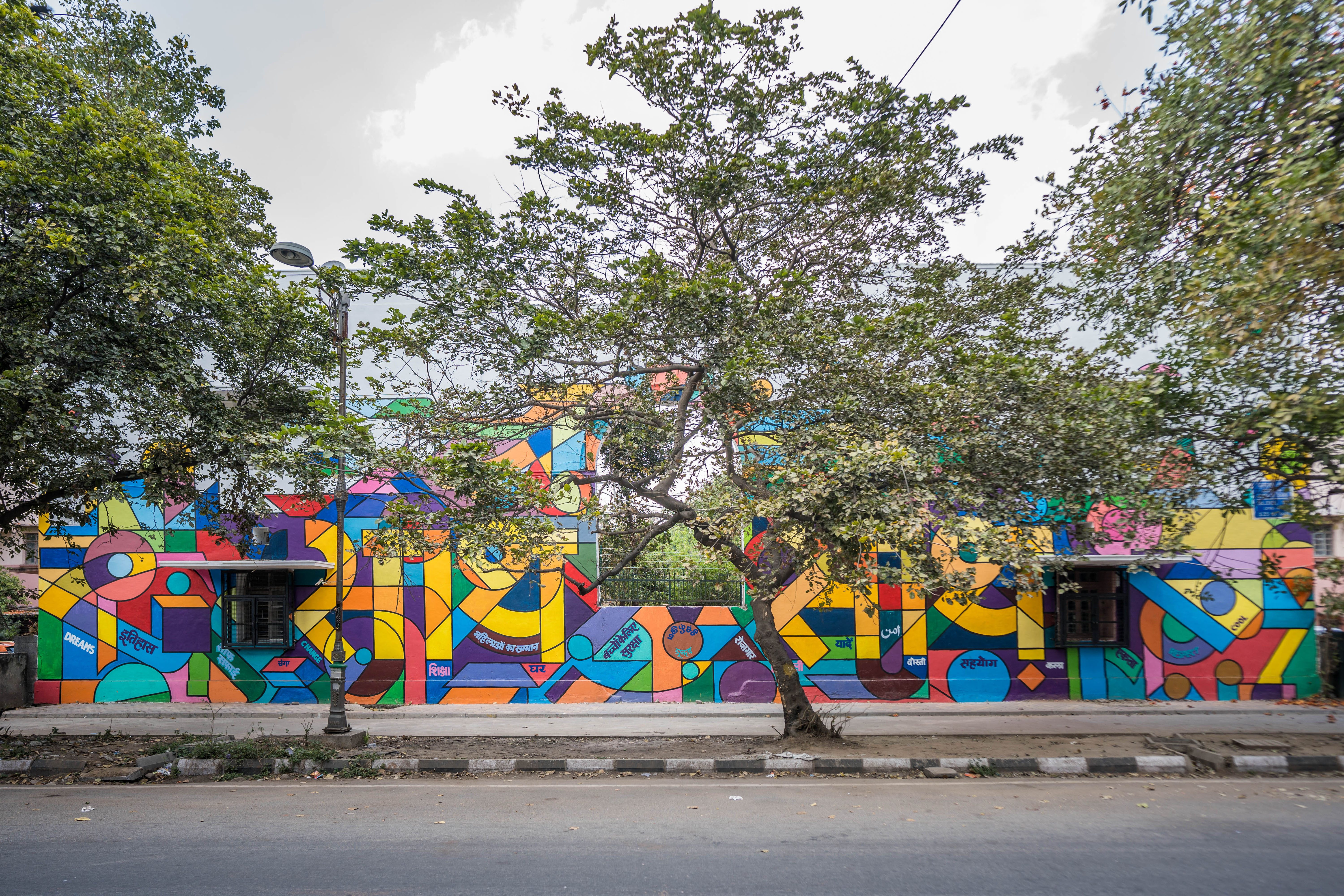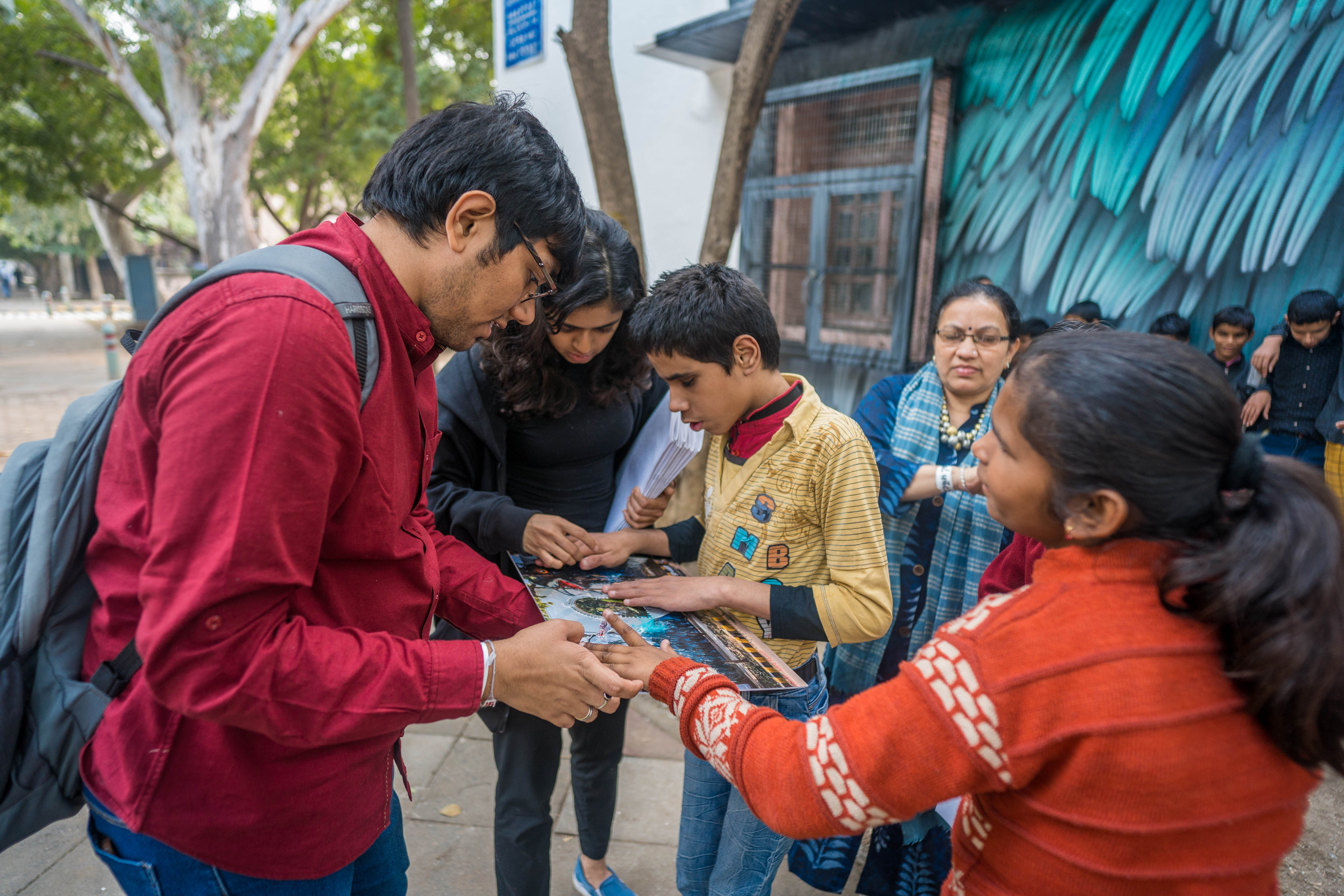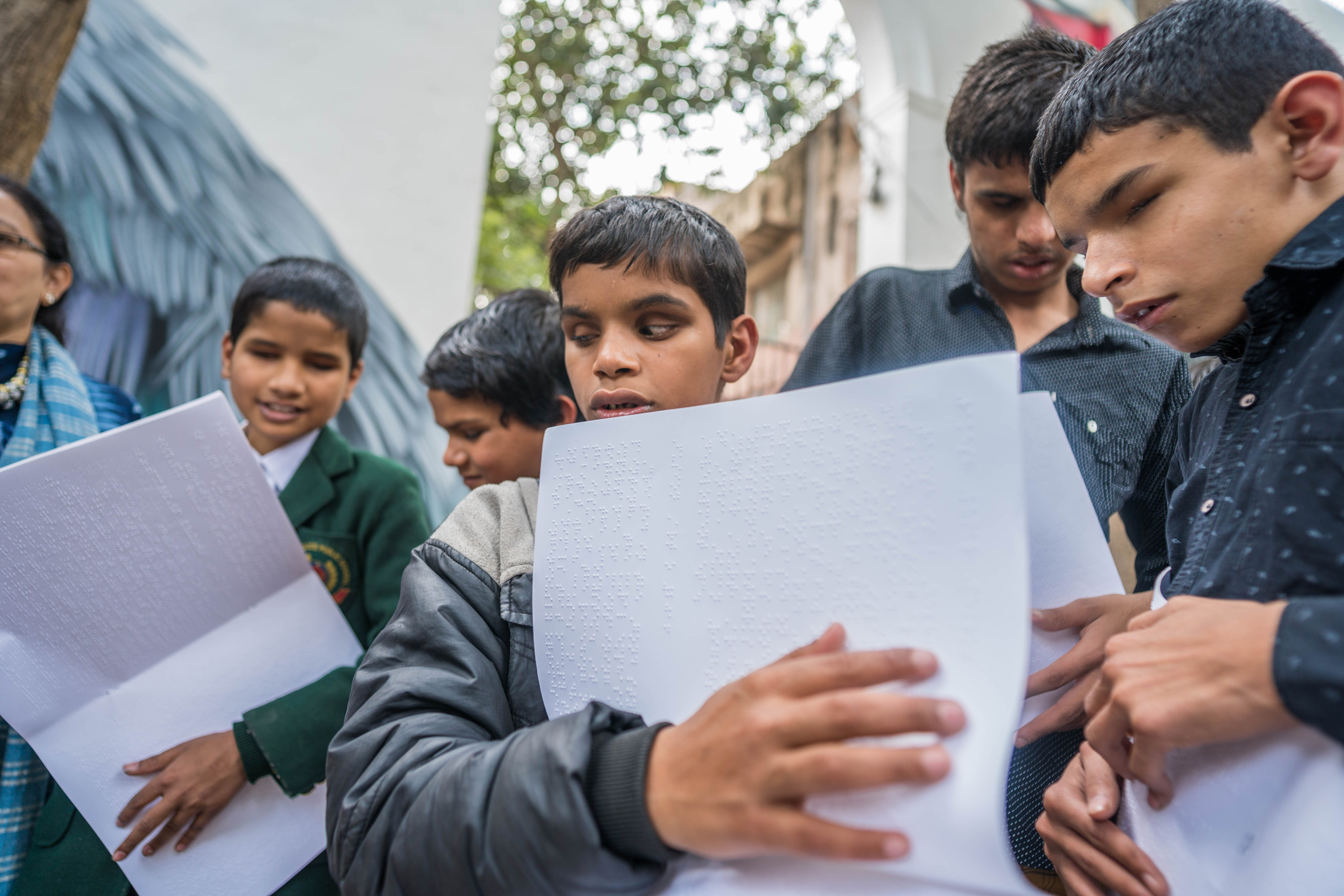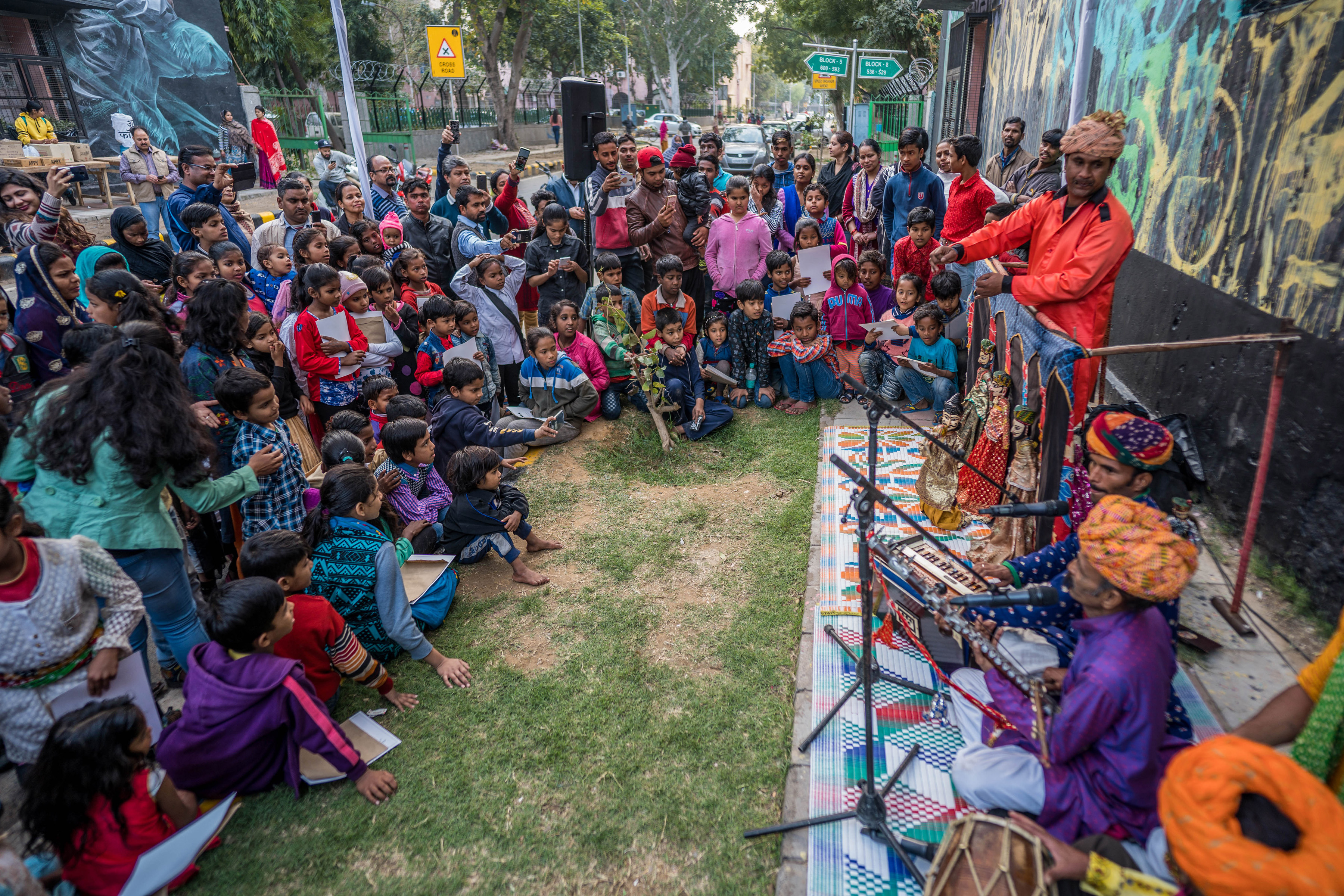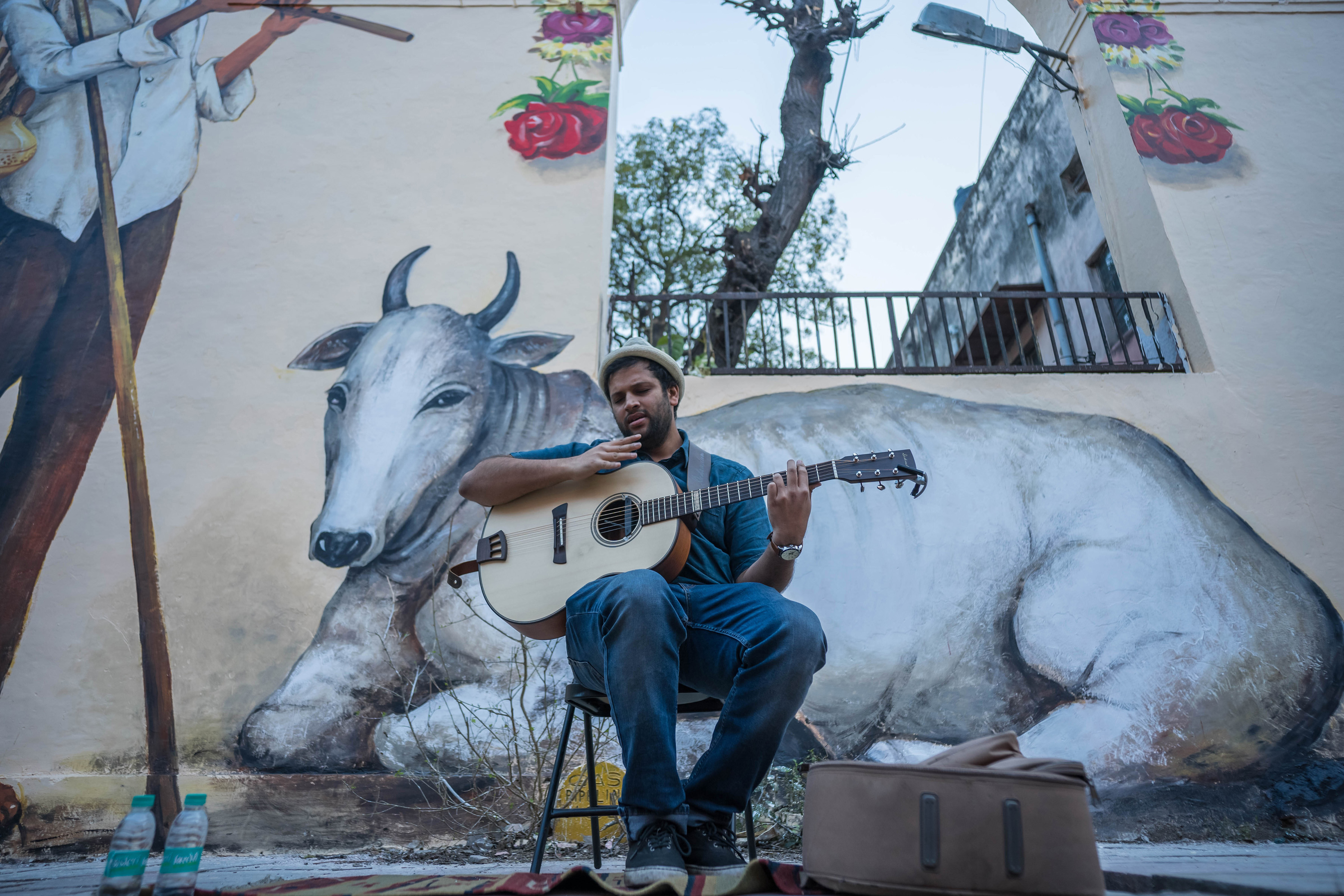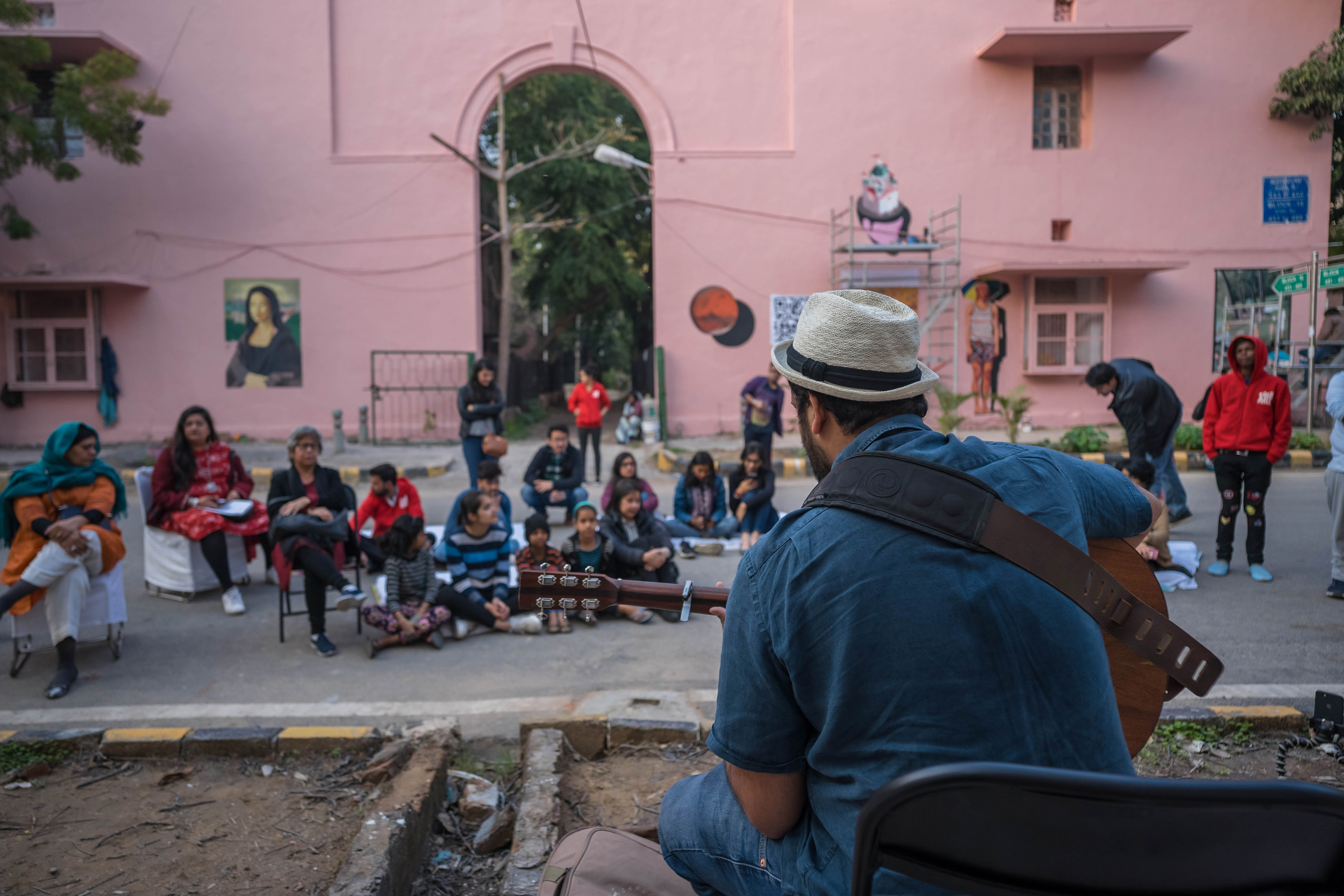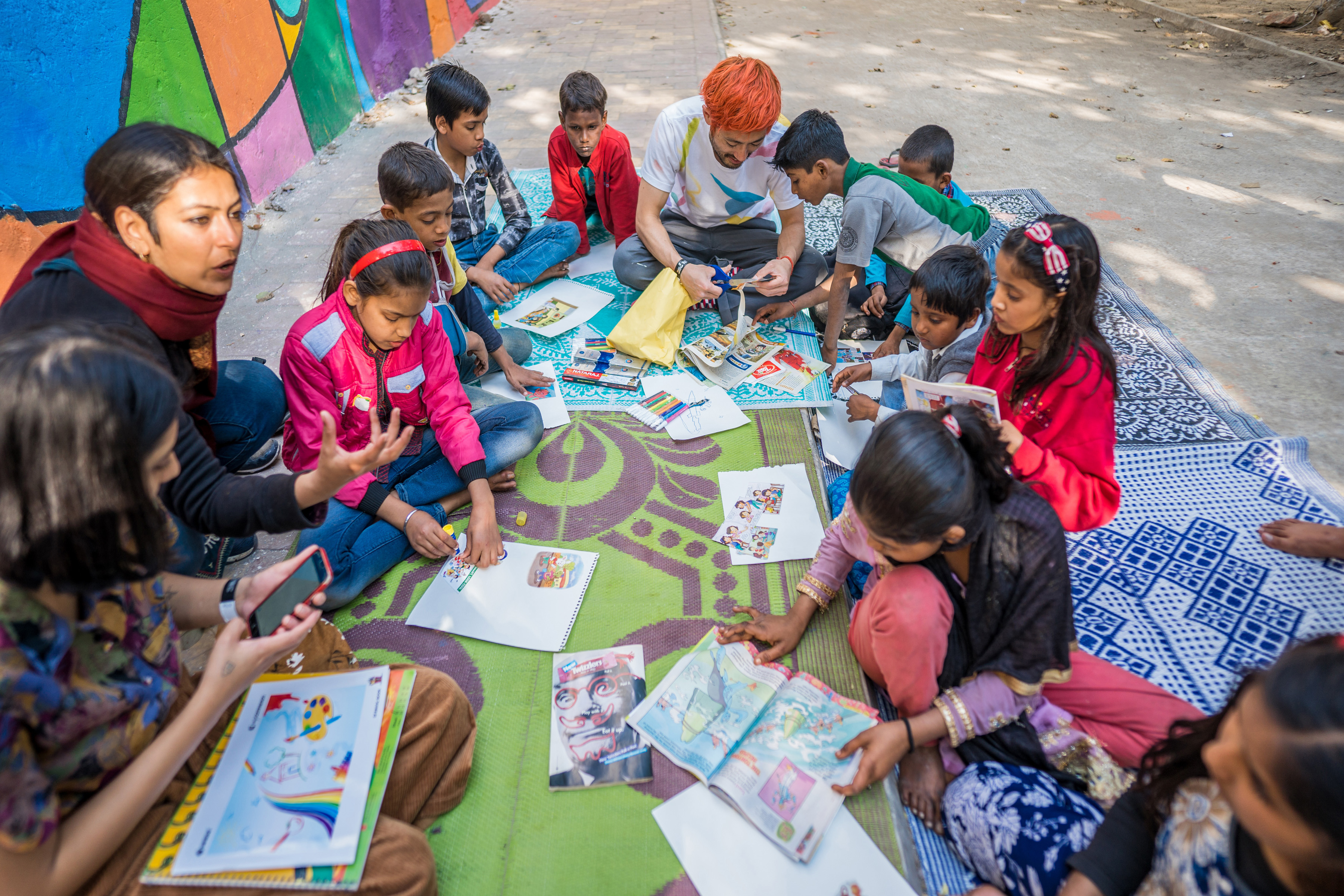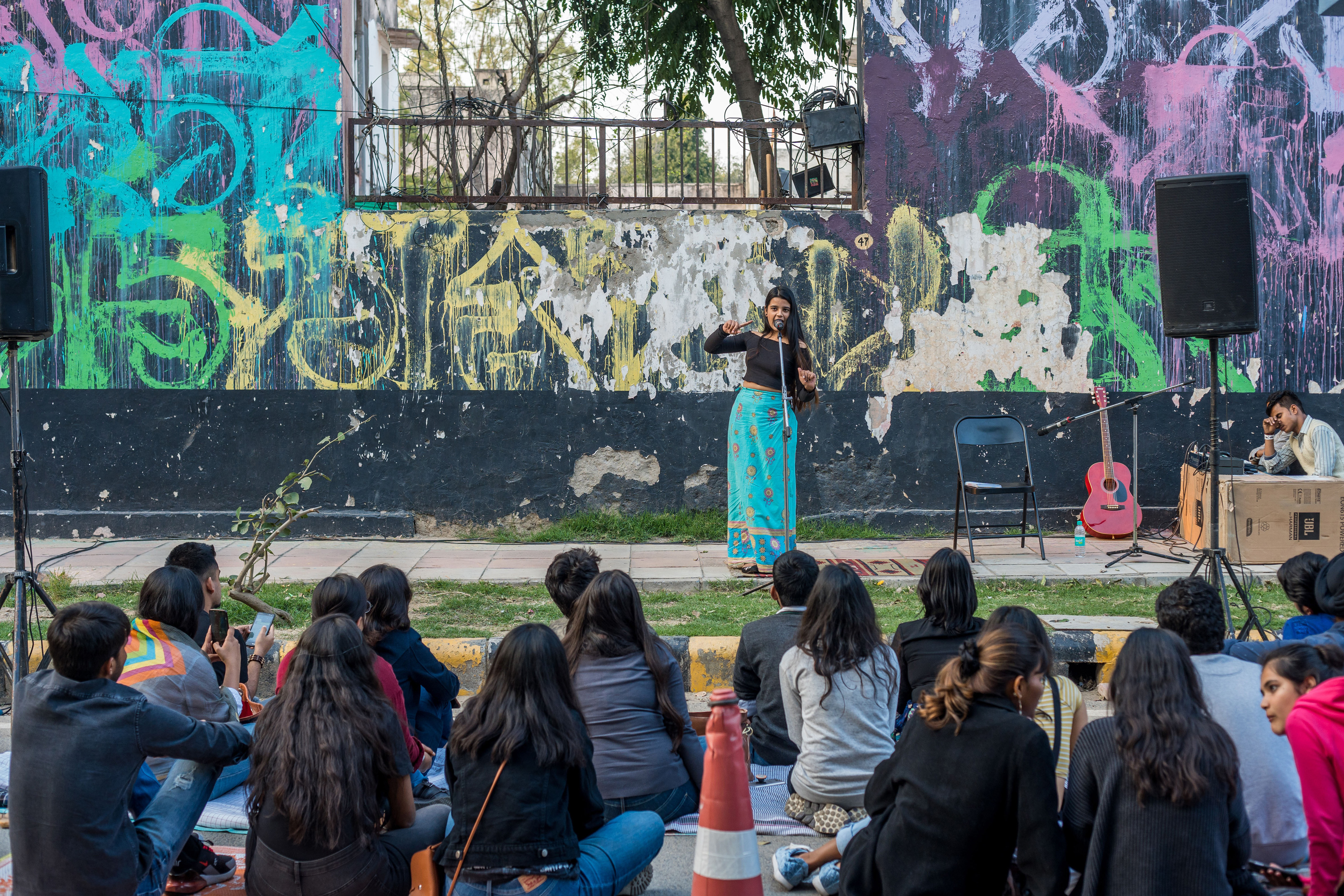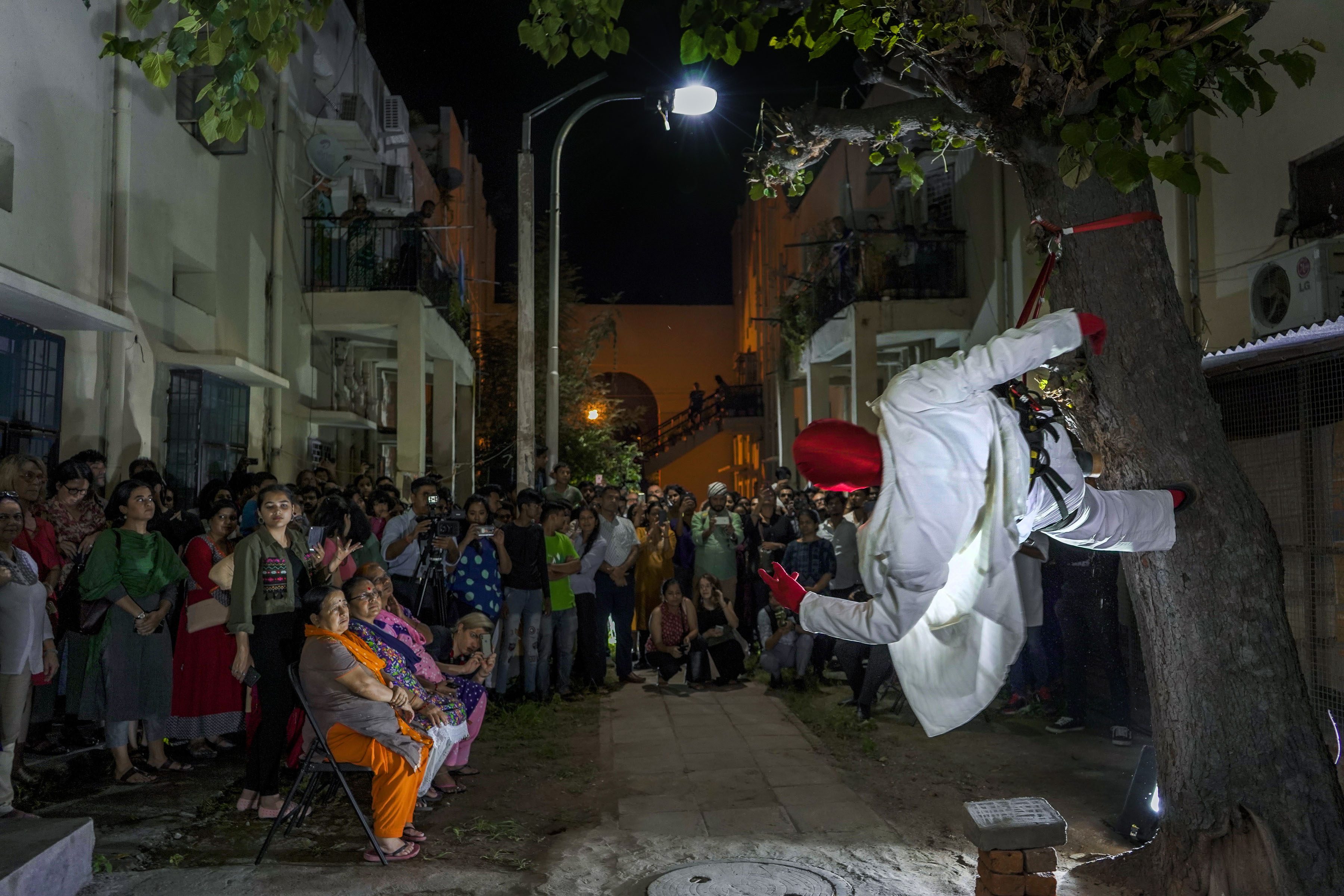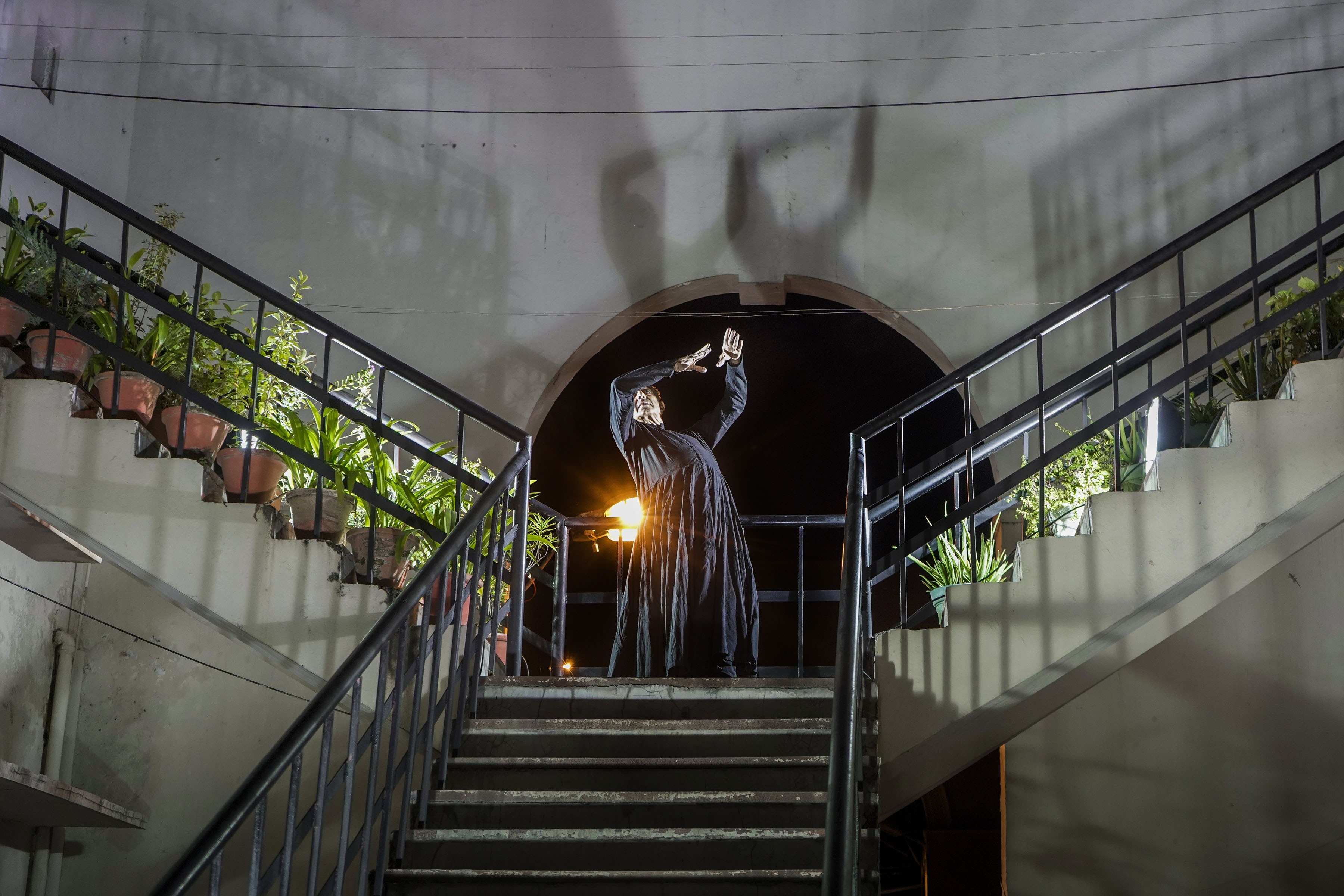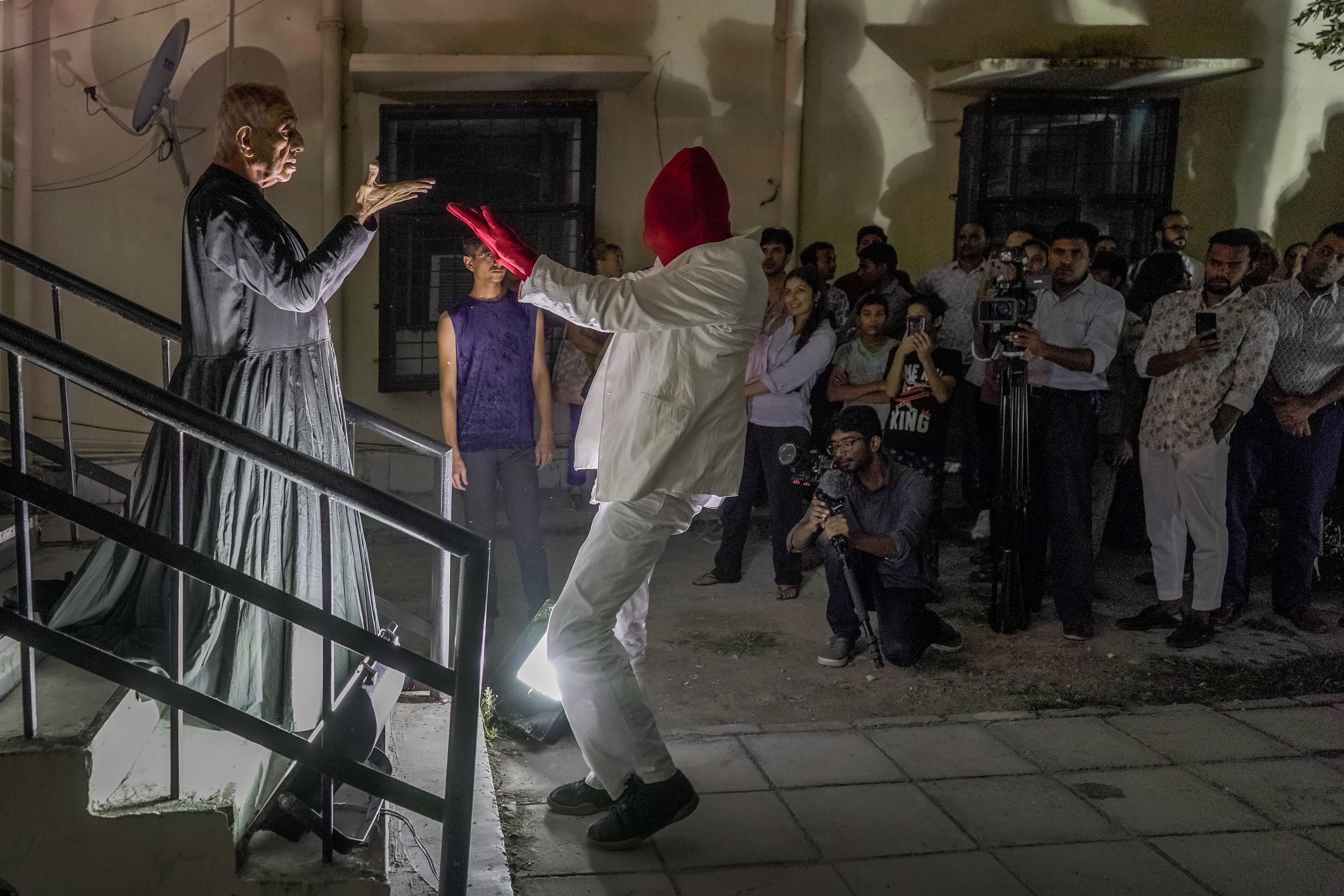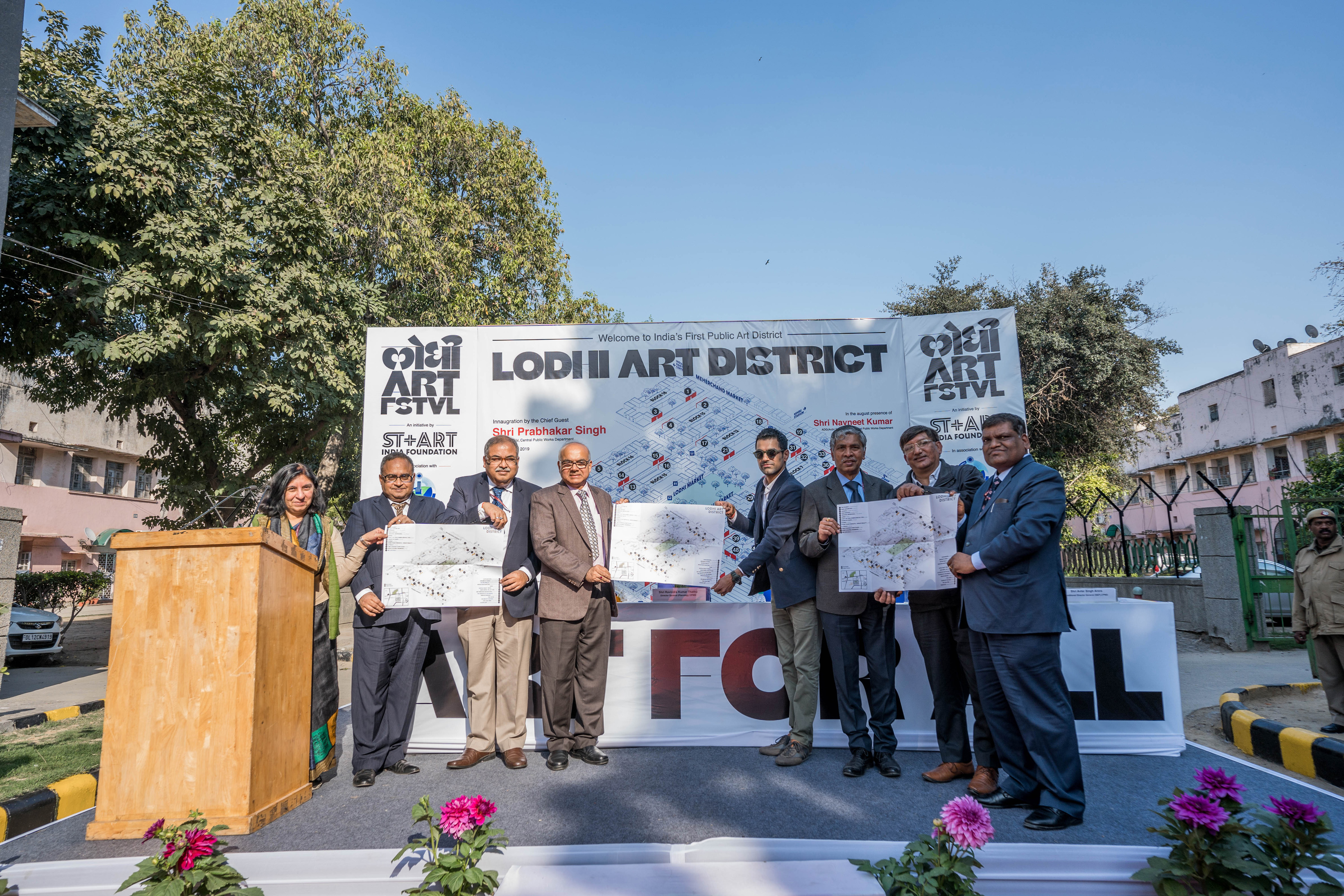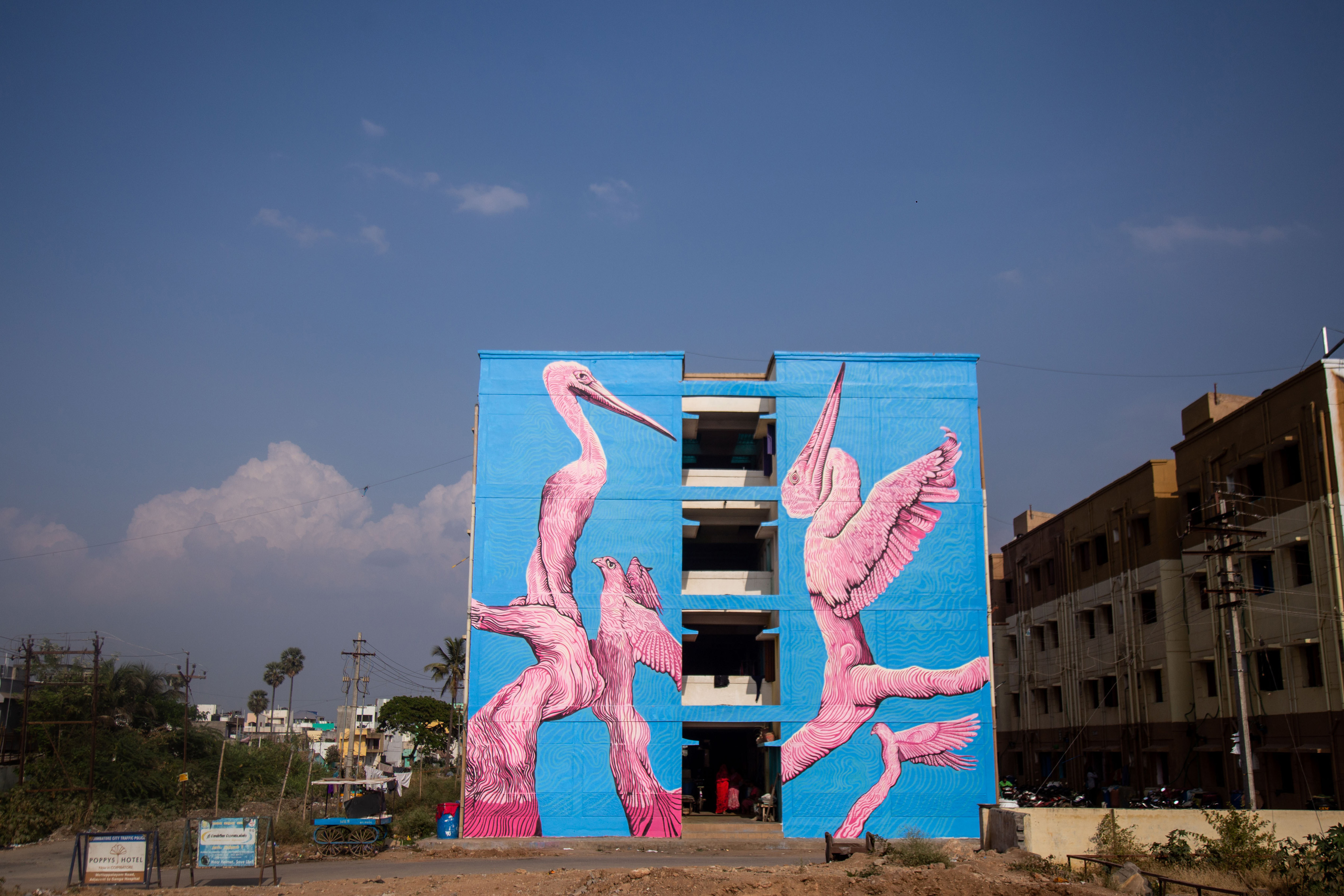In the initial months of 2015, St+art began work on India’s very first public art district. Located in the capital, Lodhi Colony is now known to the city, and the country, as Lodhi Art District. A project that began with the painting of two murals today contains sixty artworks by renowned Indian and international artists. Lodhi Art District is premised on an open-air, public walk-through gallery model.
Setting the precedent for the country’s to-be art districts, Lodhi helped us experiment, understand, and considerably build on our vision of creating art projects in public spaces. It allowed us room to come out of the conventional art gallery space and onto the streets of the cities we inhabit, making art accessible to all. It helped us shape the definition of what a public art district could look like and be, giving us a model to be replicated with suitable contextual modifications in other cities of the country. As of today, St+art has created six art districts designed as open-air art galleries, with the aim to reimagine neighbourhoods in cities through urban art.
The reasons for choosing Lodhi Colony as the location for the country’s first art district are plenty. Not only is the colony centrally located, easily accessible and within walking distance from major landmarks such as Lodhi Garden, Nehru Stadium, and India Habitat Centre, but it is also pedestrian-friendly. With its large sidewalks and well-spaced buildings, the colony is an anomaly in the topology of the city, which hardly has any walking culture.
More so, the buildings are symmetrically placed on the broad streets, allowing the viewer to have a great visual experience of every art piece. The concrete structures also adorn interesting elements like arches and windows, which in turn play with the artwork similar to the rich and diverse greenery that characterises the area. The walls of the colony are also devoid of any visual noise, such as hoardings and large signboards.
Over the years, the project has built a sense of community pride in residents, encouraged the maintenance of the neighbourhood, enhanced its visual identity, while also putting it on the global map. In a city with limited public spaces, Lodhi Art District is now open to everyone under the motto of 'Art for All'.
The Lodhi Art District began to take shape a year prior to St+art’s 2016 Delhi Festival. The idea of exploring Lodhi Colony as a potential space for doing a larger intervention had been planted in 2015 with the help of 2 artists - Lady Aiko from Japan, and DALeast from China.
The walls painted by Lady Aiko and DALeast in 2015 gave an understanding of the scope of larger projects in the neighbourhood, and also an insight into the response of the local community, which was mostly positive.
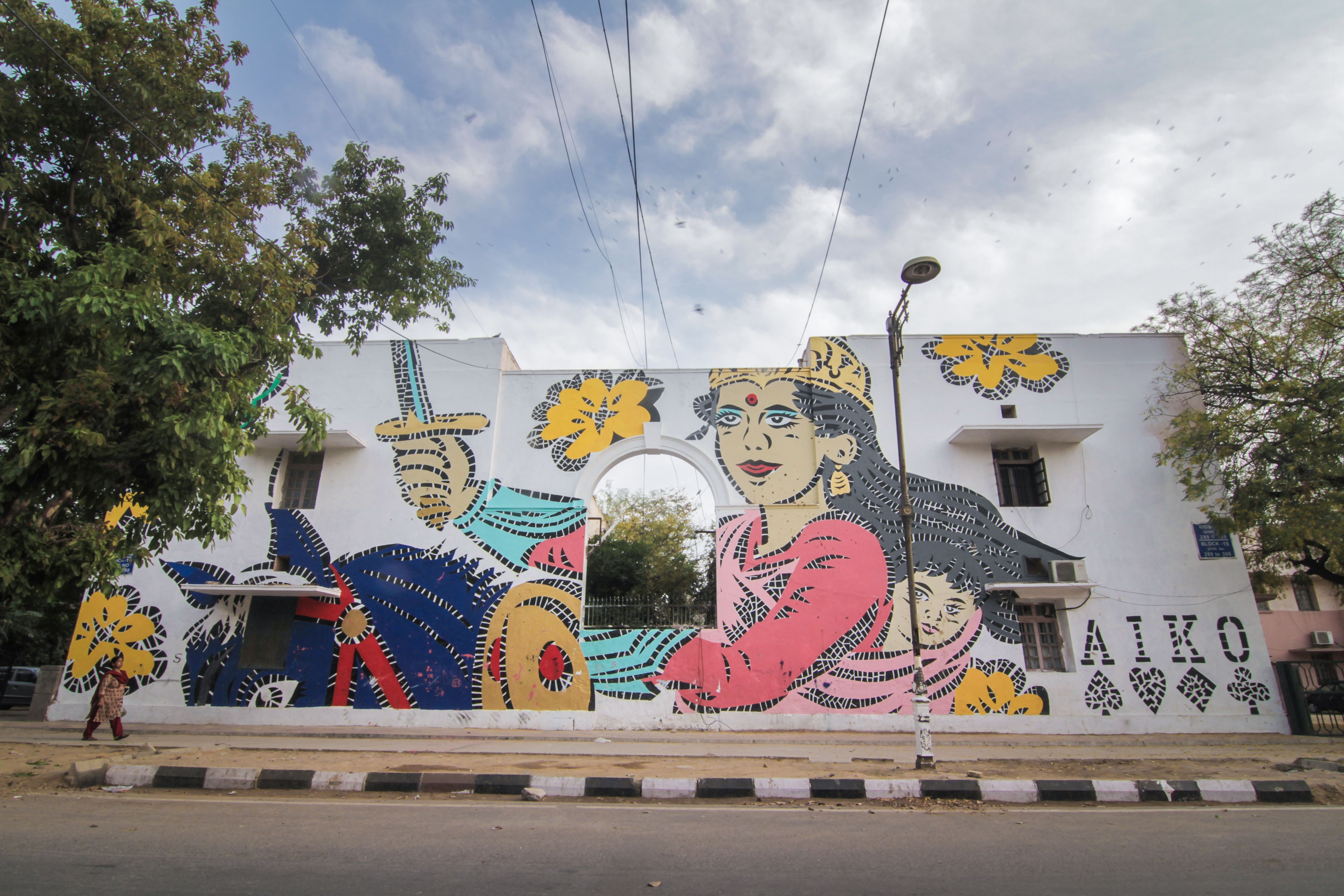
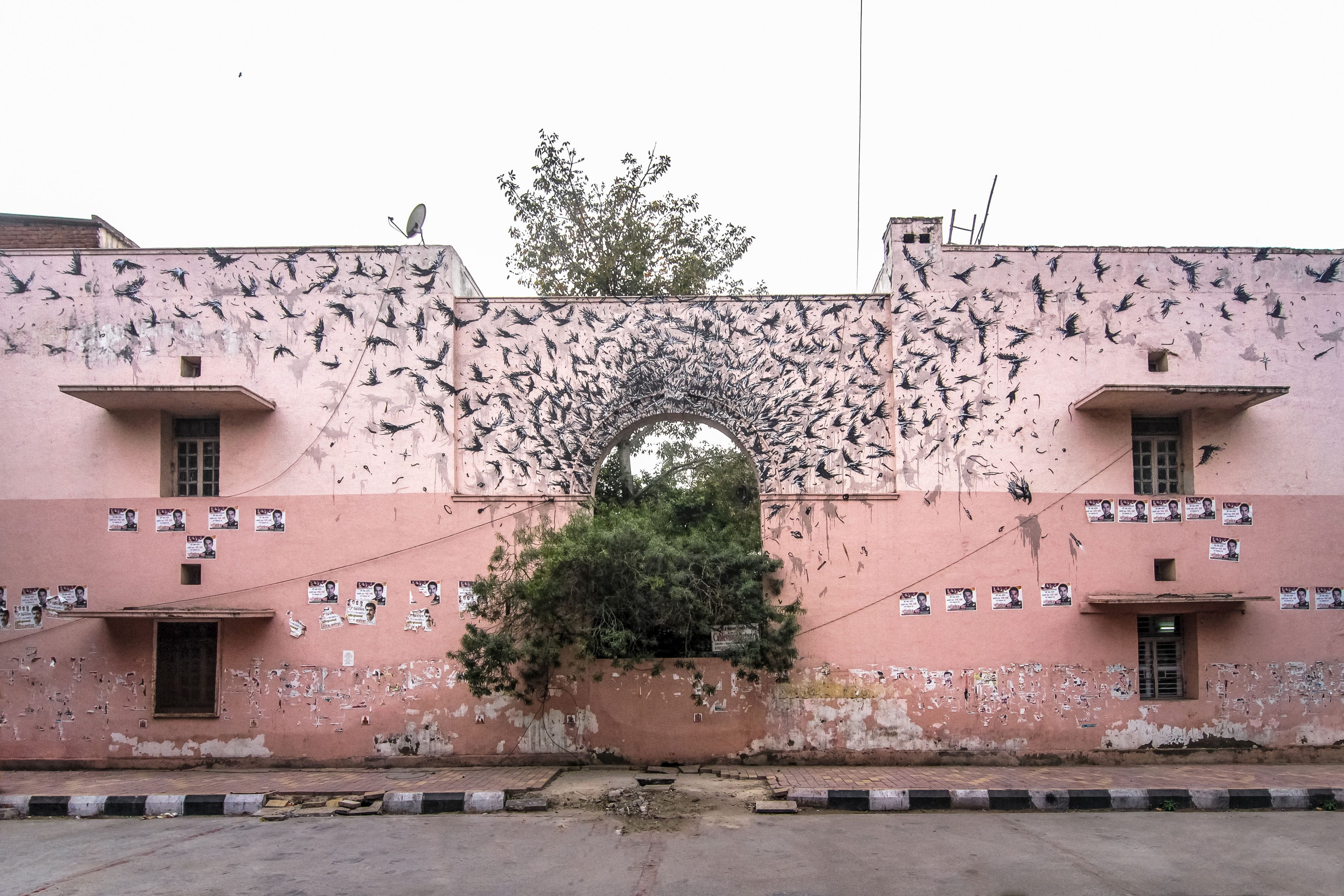
In 2016, we began the mammoth task of creating twenty-six artworks across ten blocks of Lodhi Colony that would showcase some of the best artists and most diverse styles of the global urban art movement, while also providing a platform for traditional Indian art forms.
In the 2016 edition of St+art Delhi, thirty of the best street artists from across the world were invited to create artworks in this colony, simultaneously establishing it as an open-air, public art gallery.
The artists brought diverse stories and themes to the district - from talking about identity issues and gender politics to shedding light on climate problems. Staying true to the traditional nature of urban art, a lot of the artists used architecture and location as their muse.
Some works went beyond visual art and involved various communities in the most intimate and delicate ways.
As a result, amongst others, the project encouraged other creative individuals to express themselves. On any given day, you can find people recording videos against the artworks, doing photoshoots, conducting independently-led tours, or just clicking selfies. Throughout the course of creating the murals, the ground crew kept expanding - first with kids from the surrounding slums, who often follow the artists becoming their impromptu assistants, to gradually the elders of the colony and shop owners, who would often be found conversing with or bringing chai to the crew. People from different parts of the city and various colleges also came to be part of the reverie.
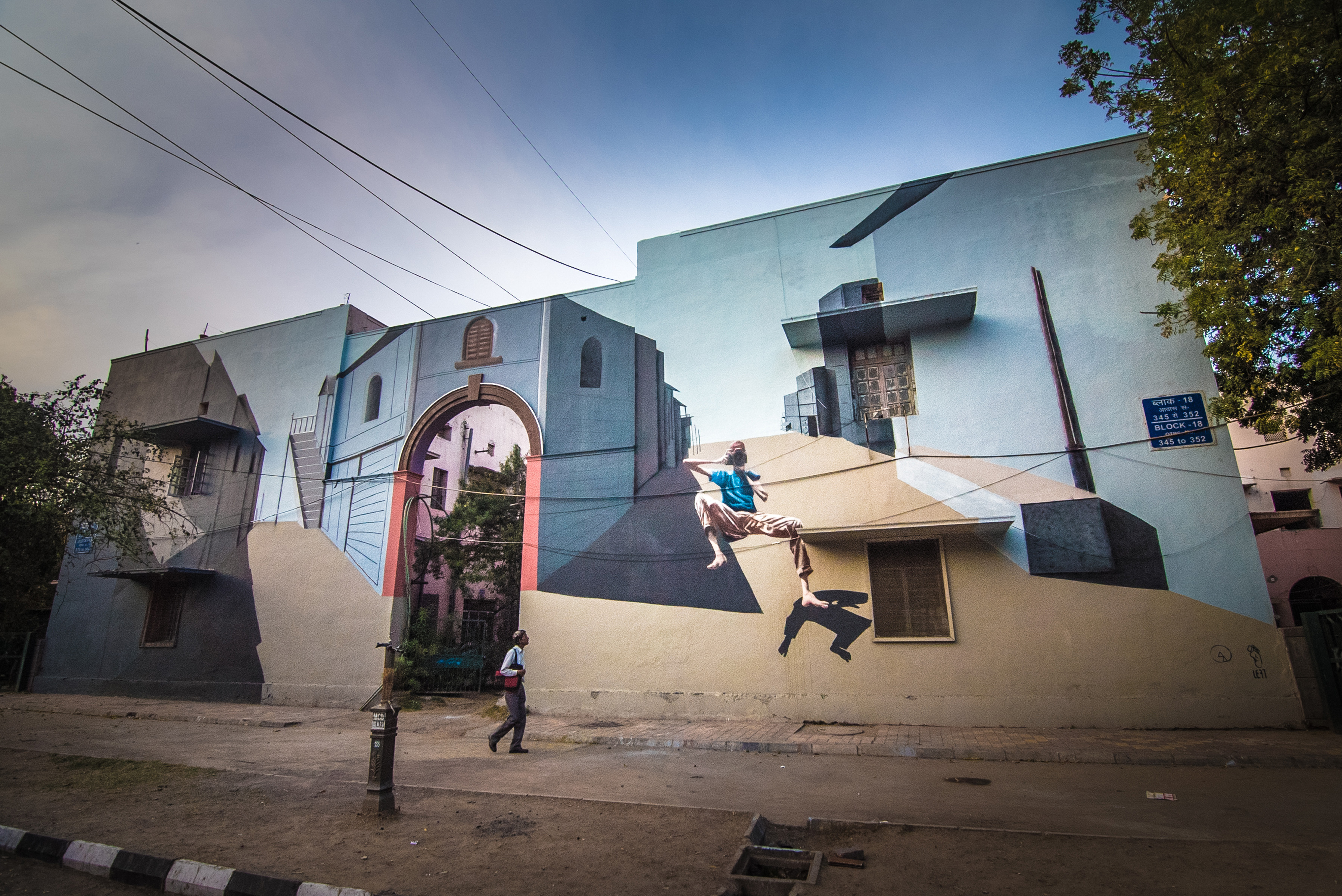
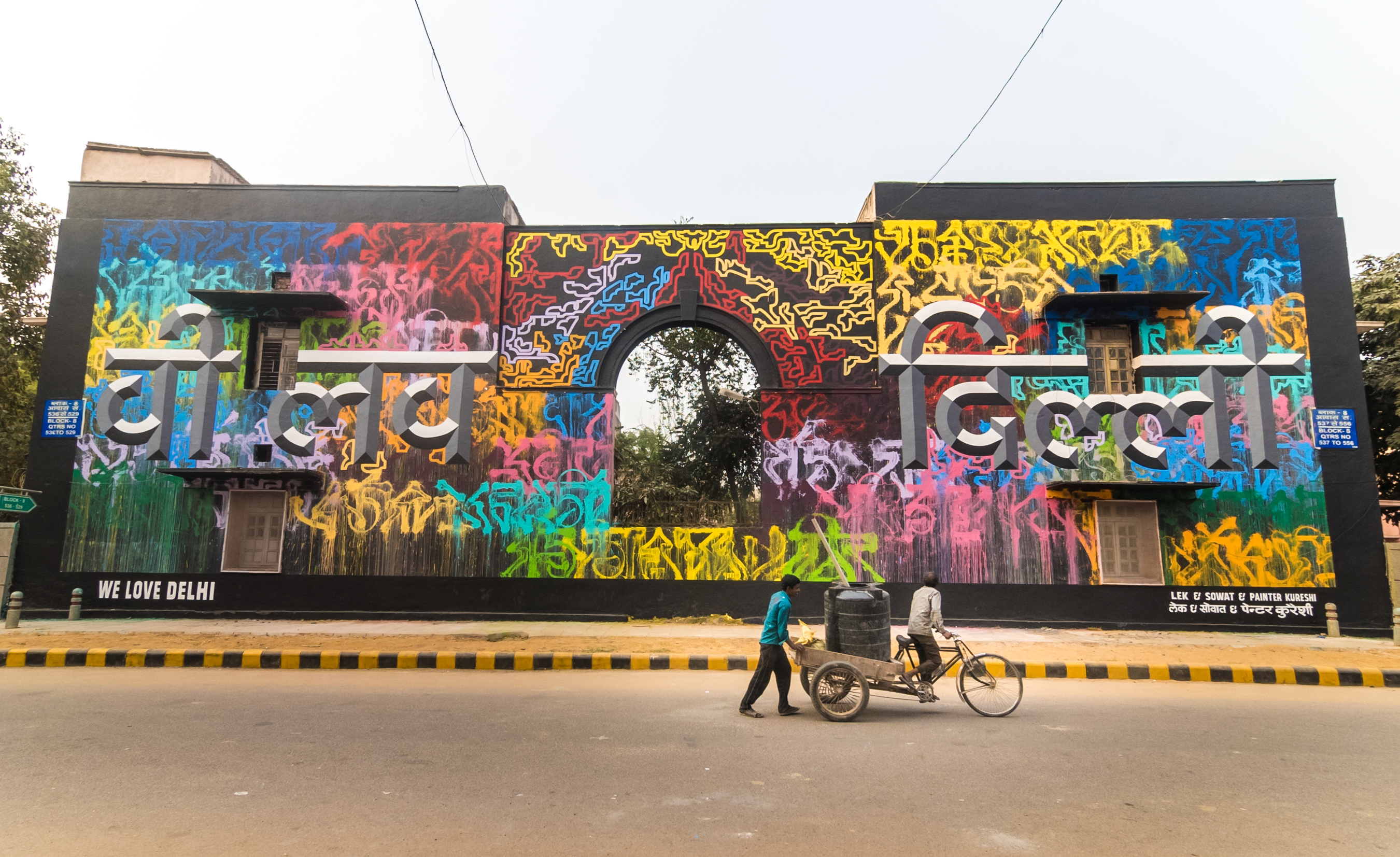
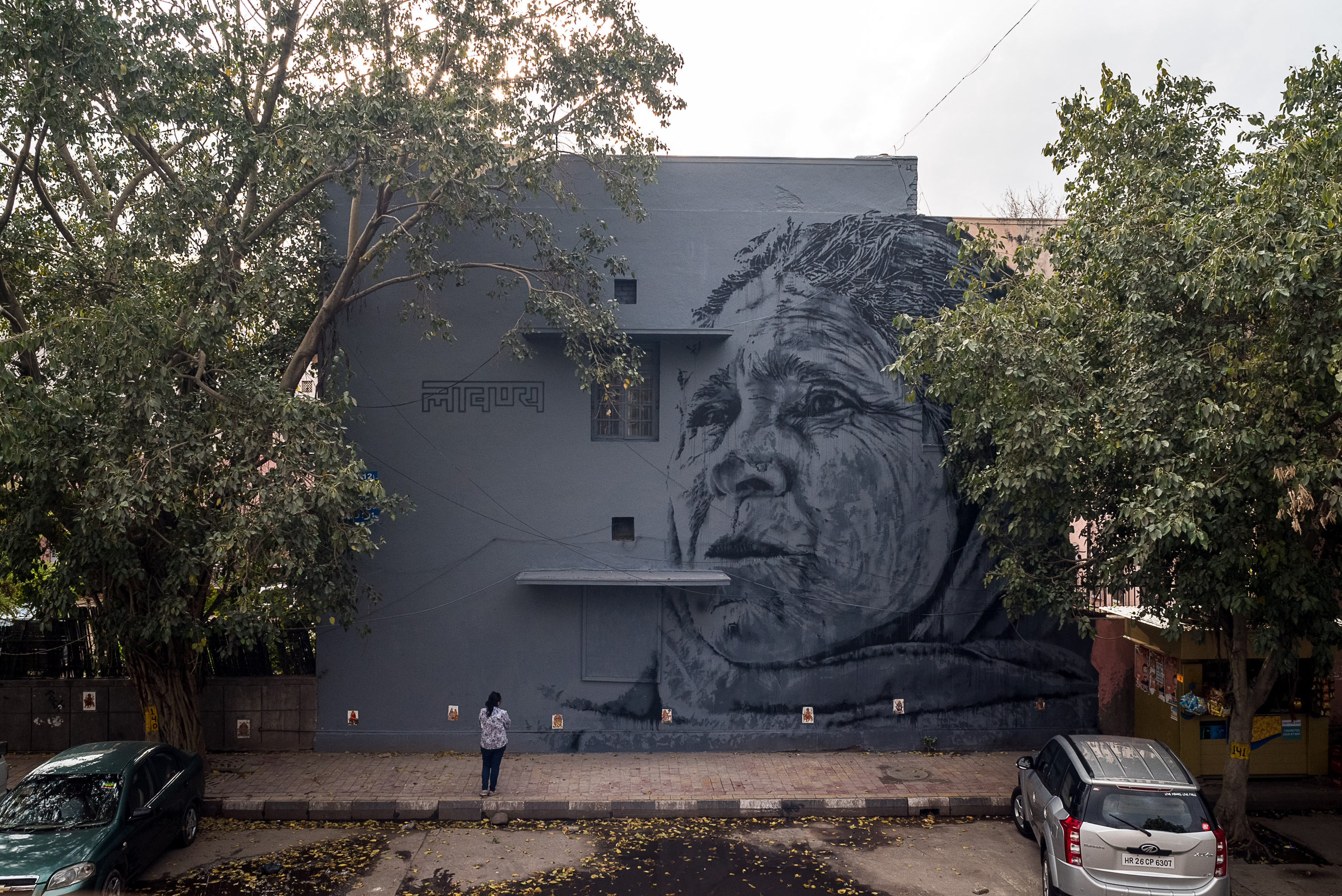
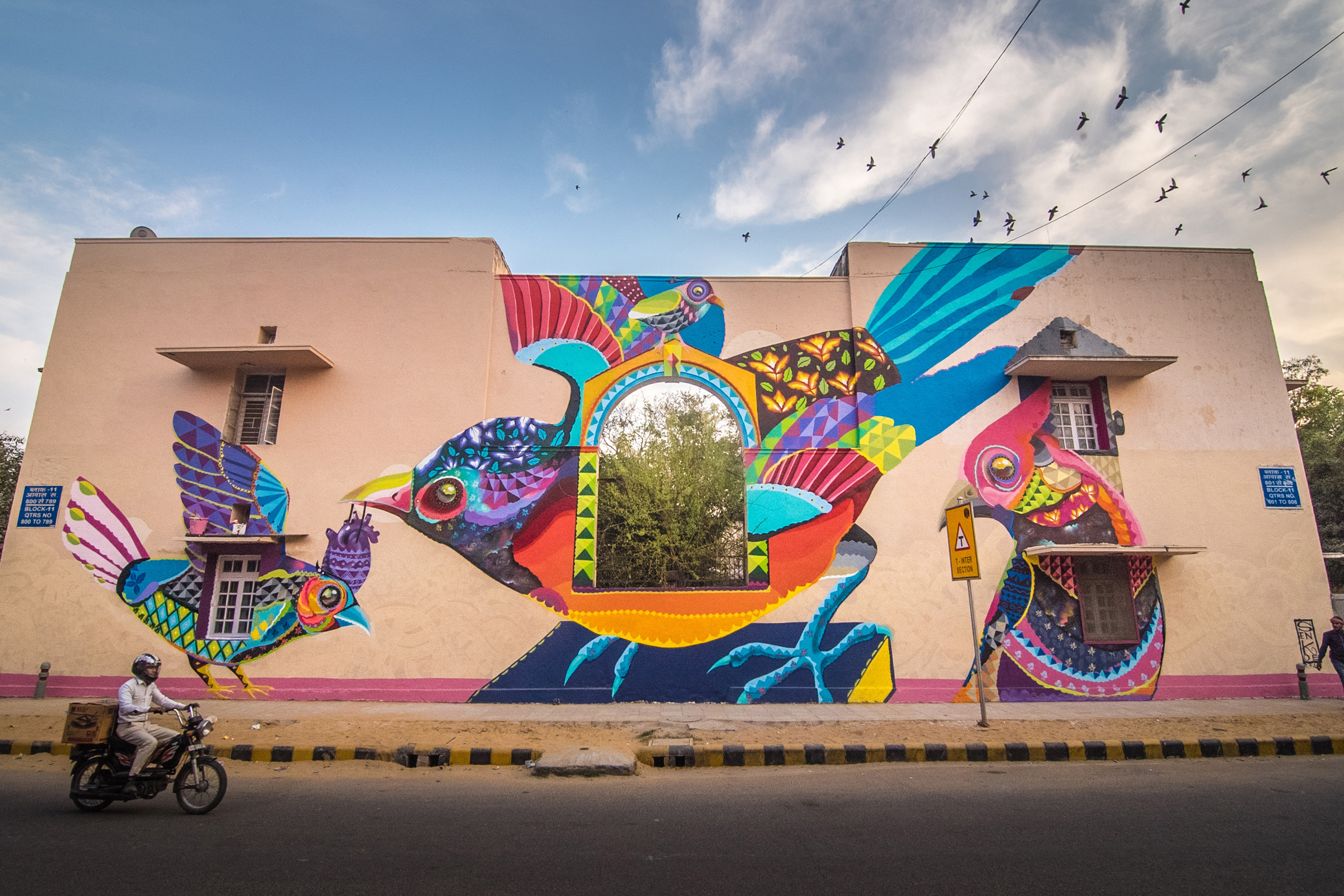
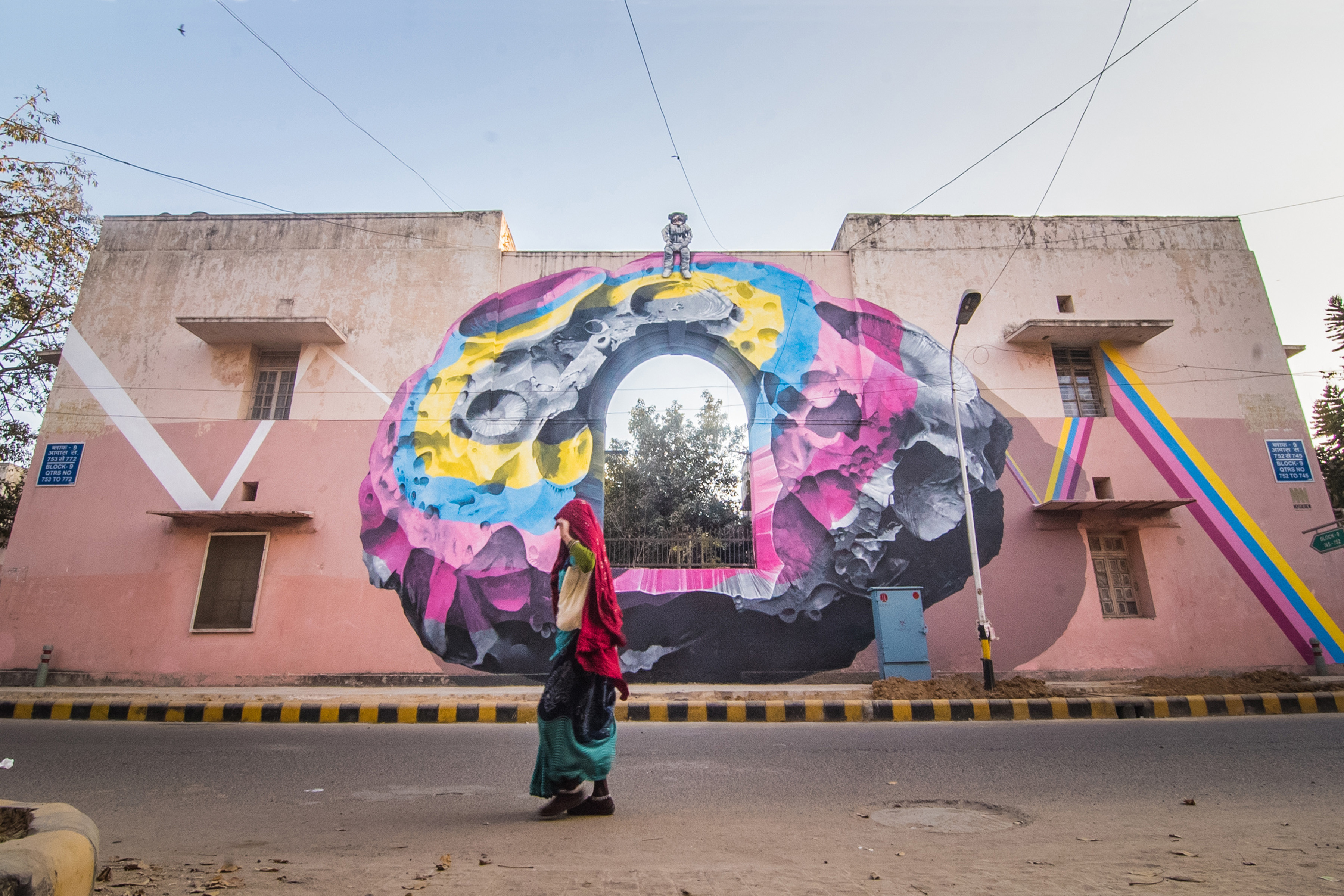
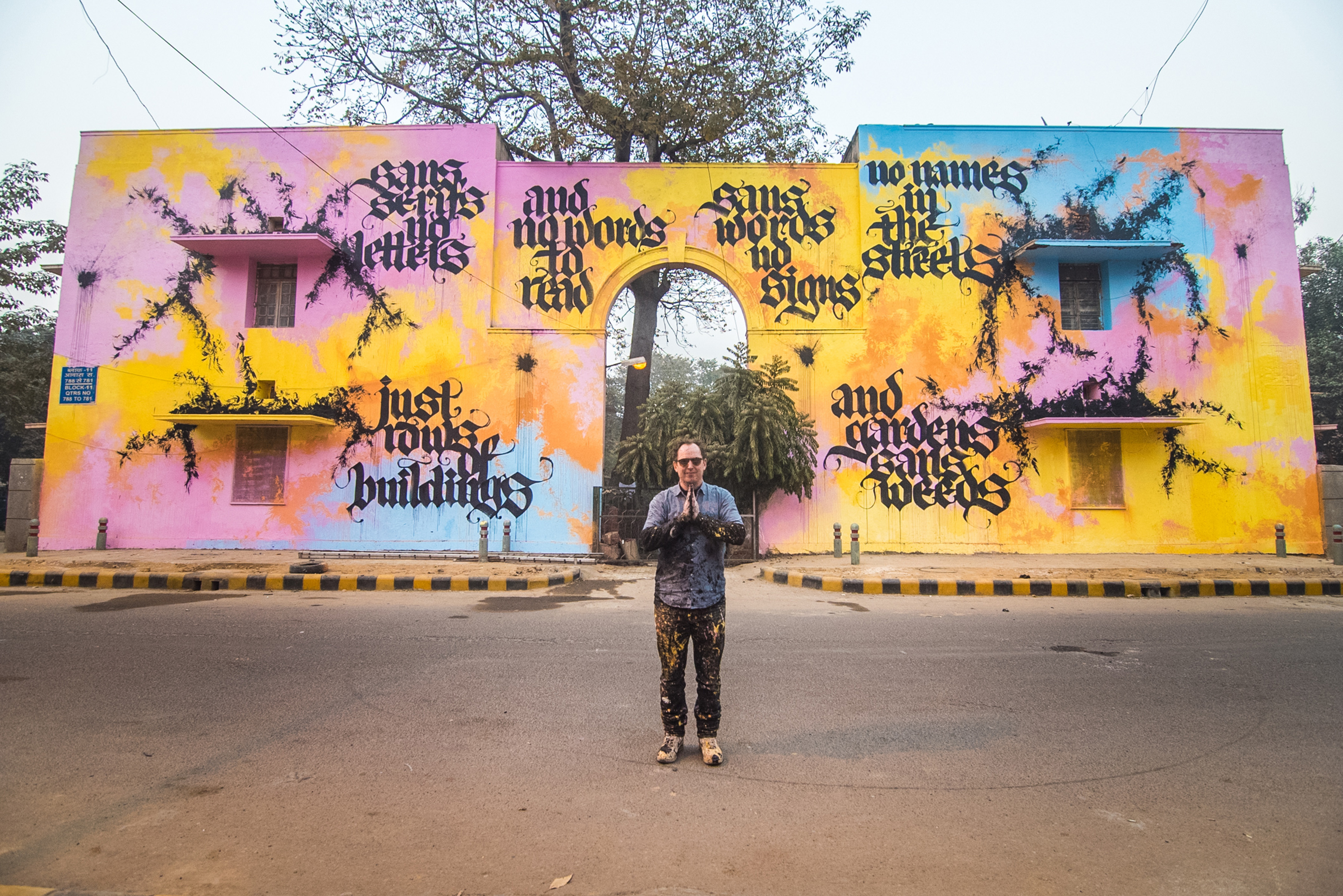
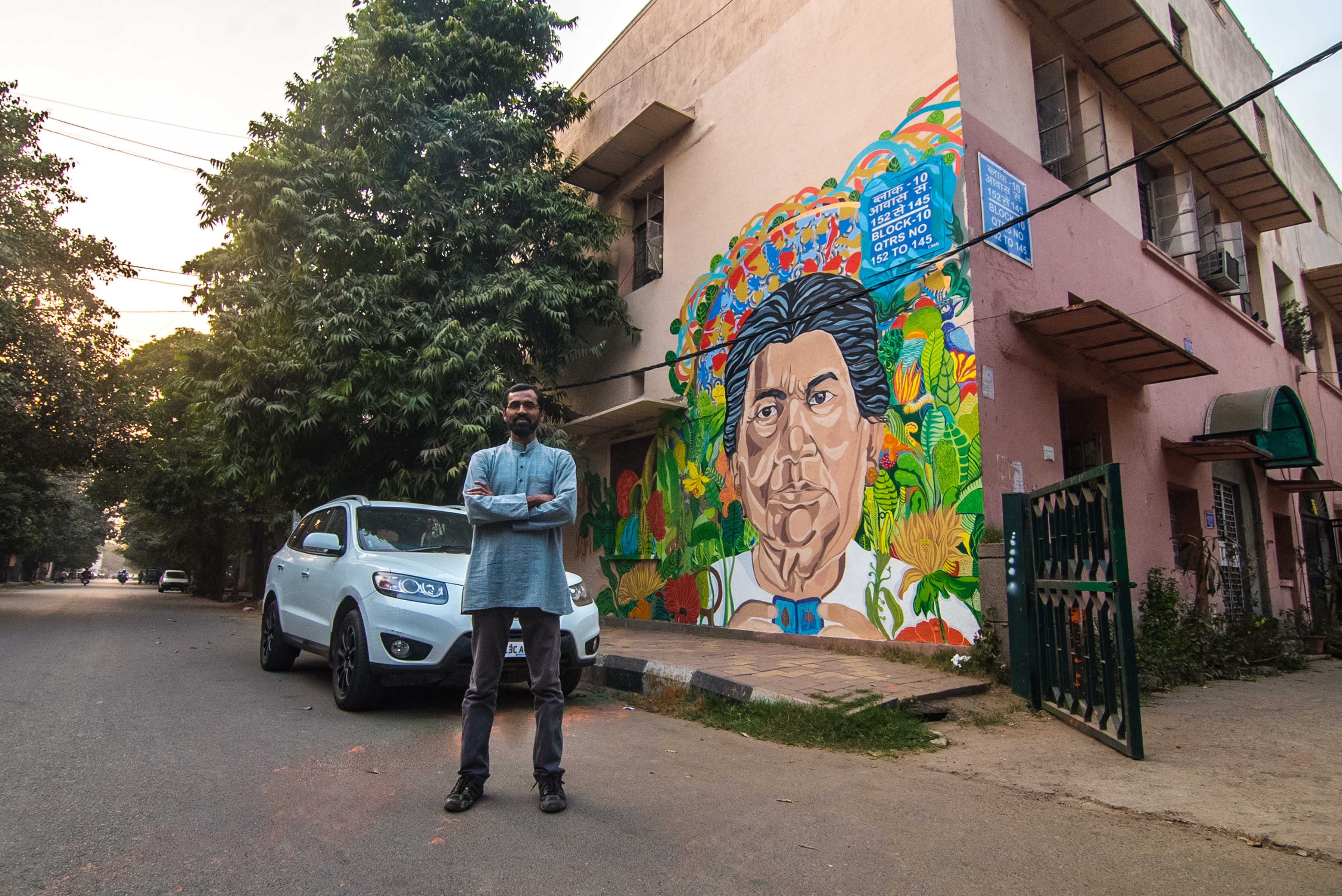
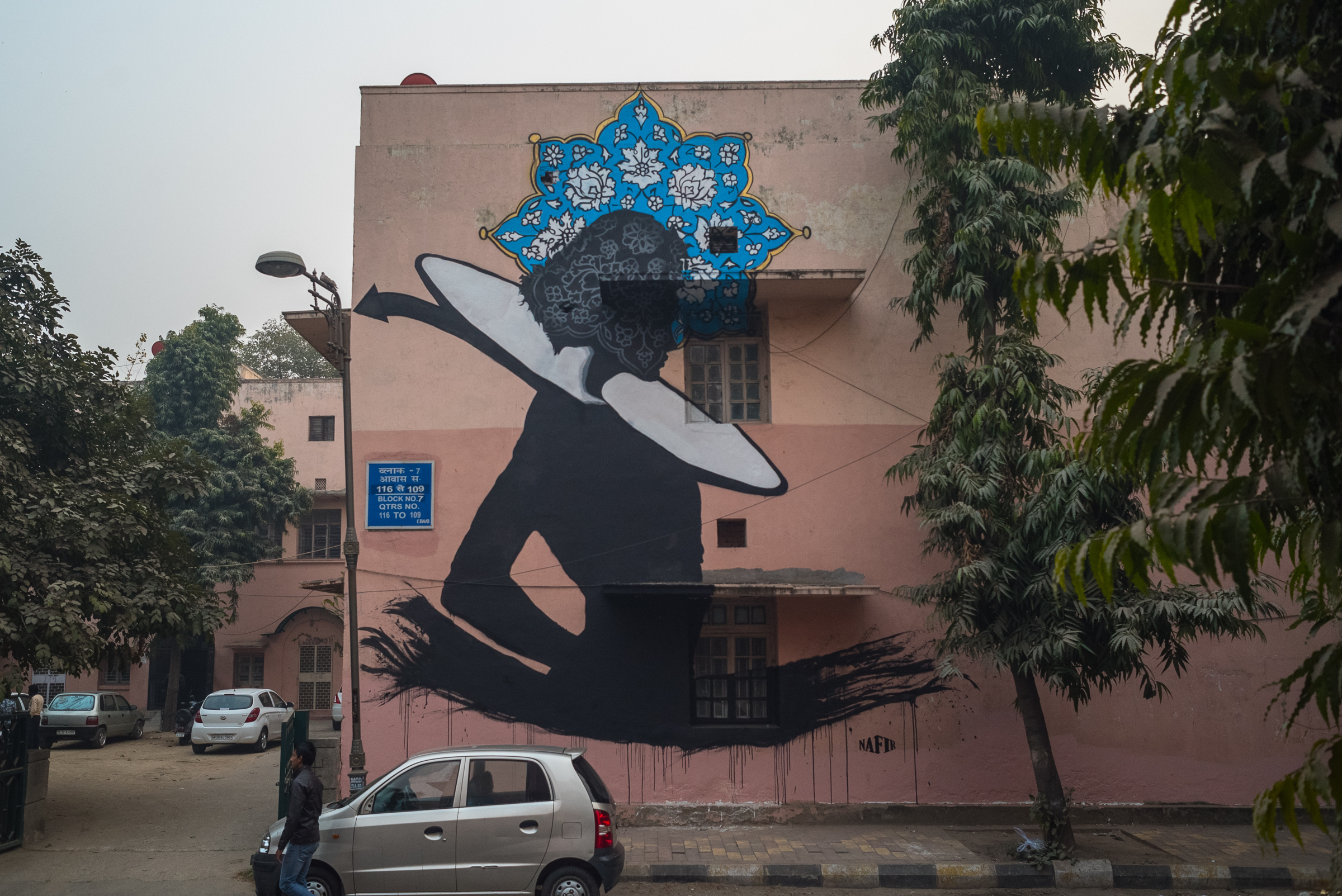
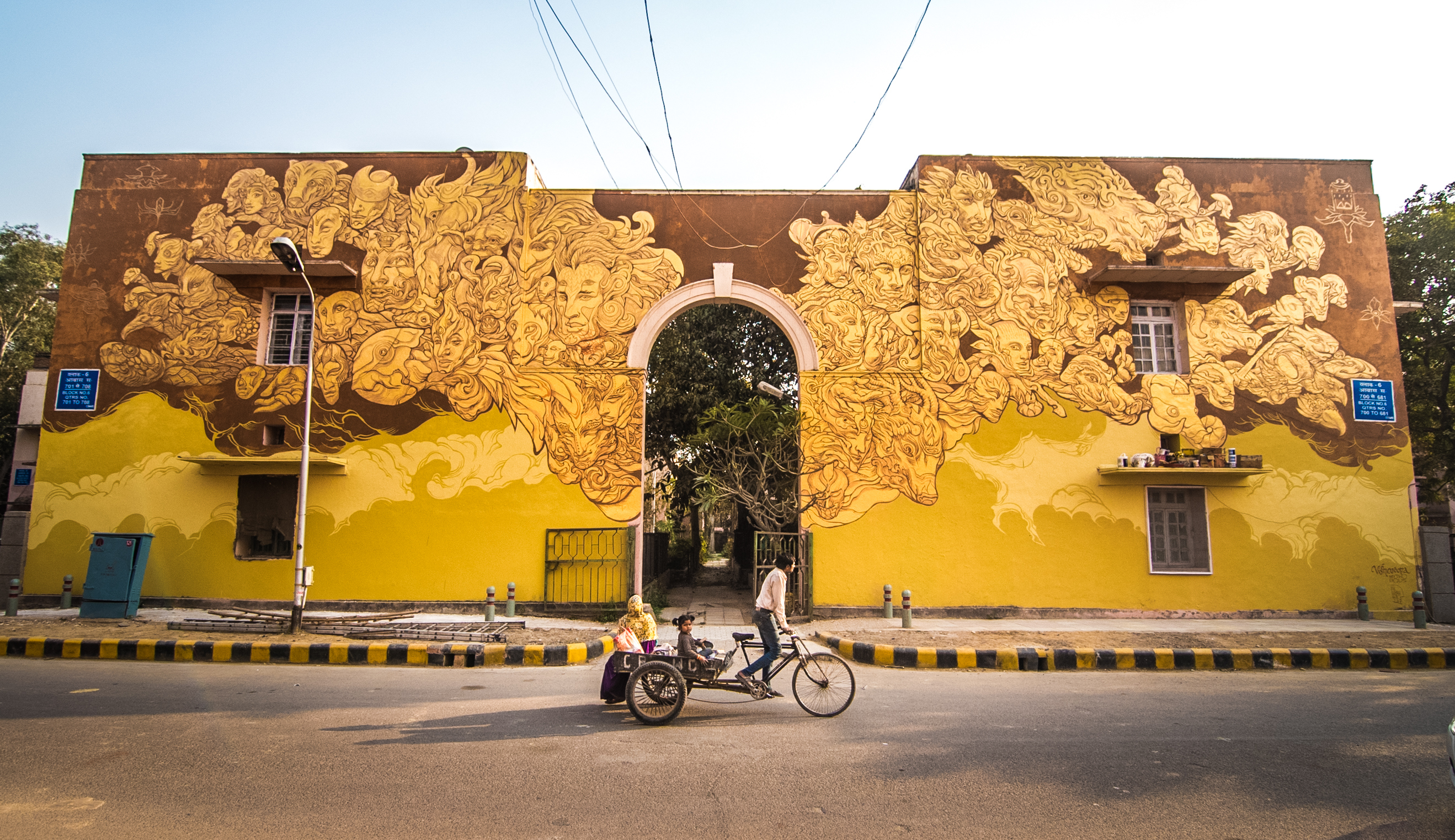
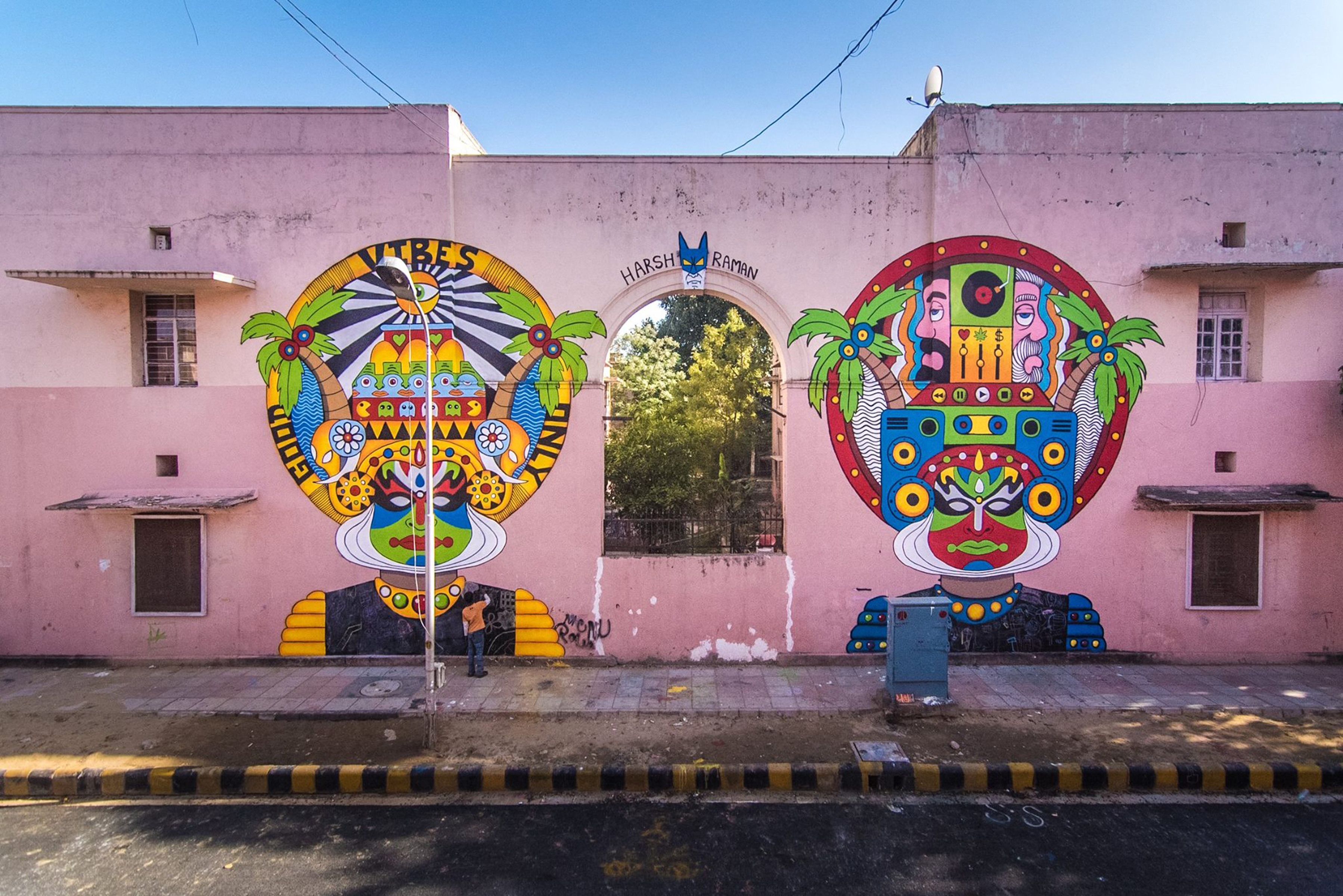
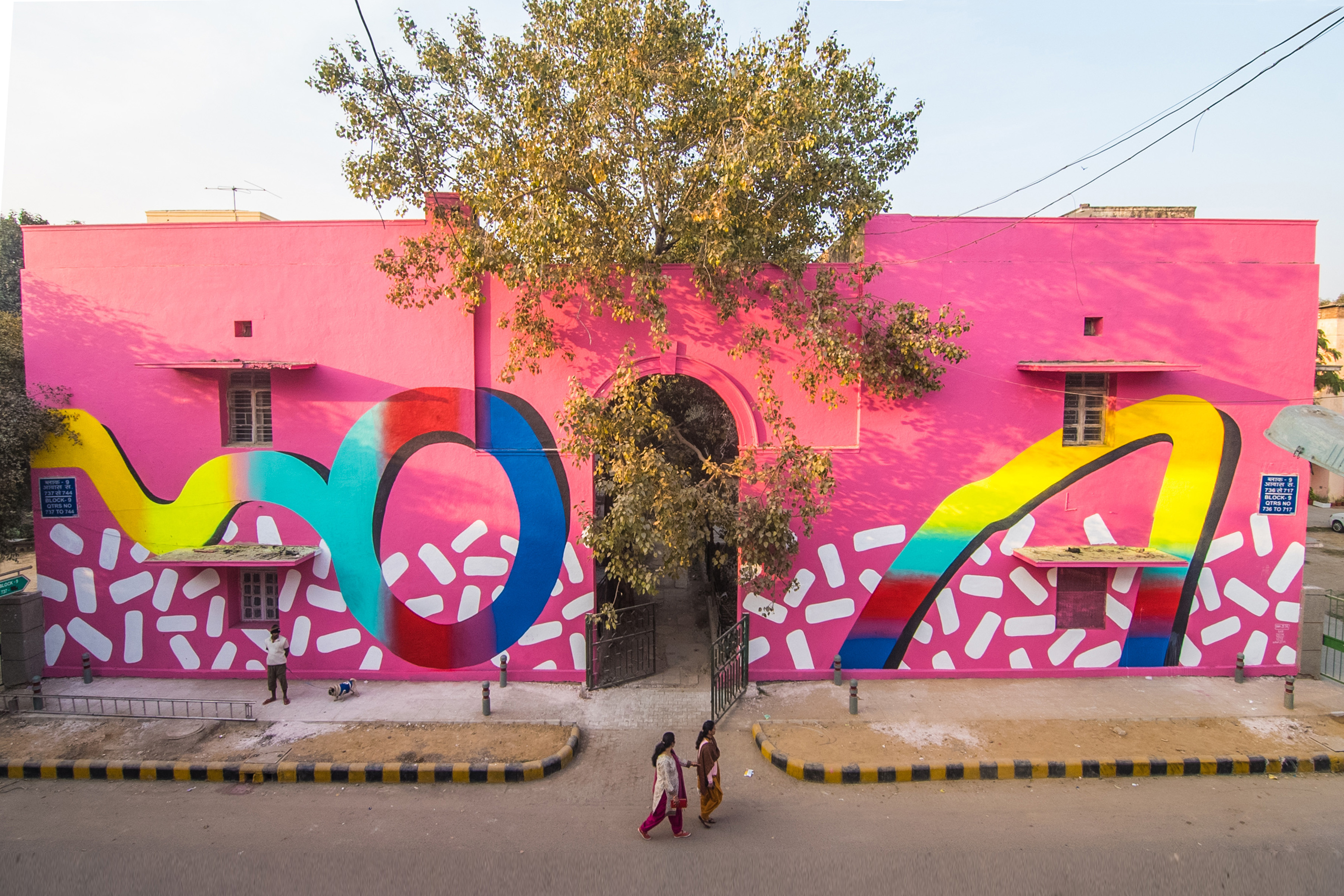
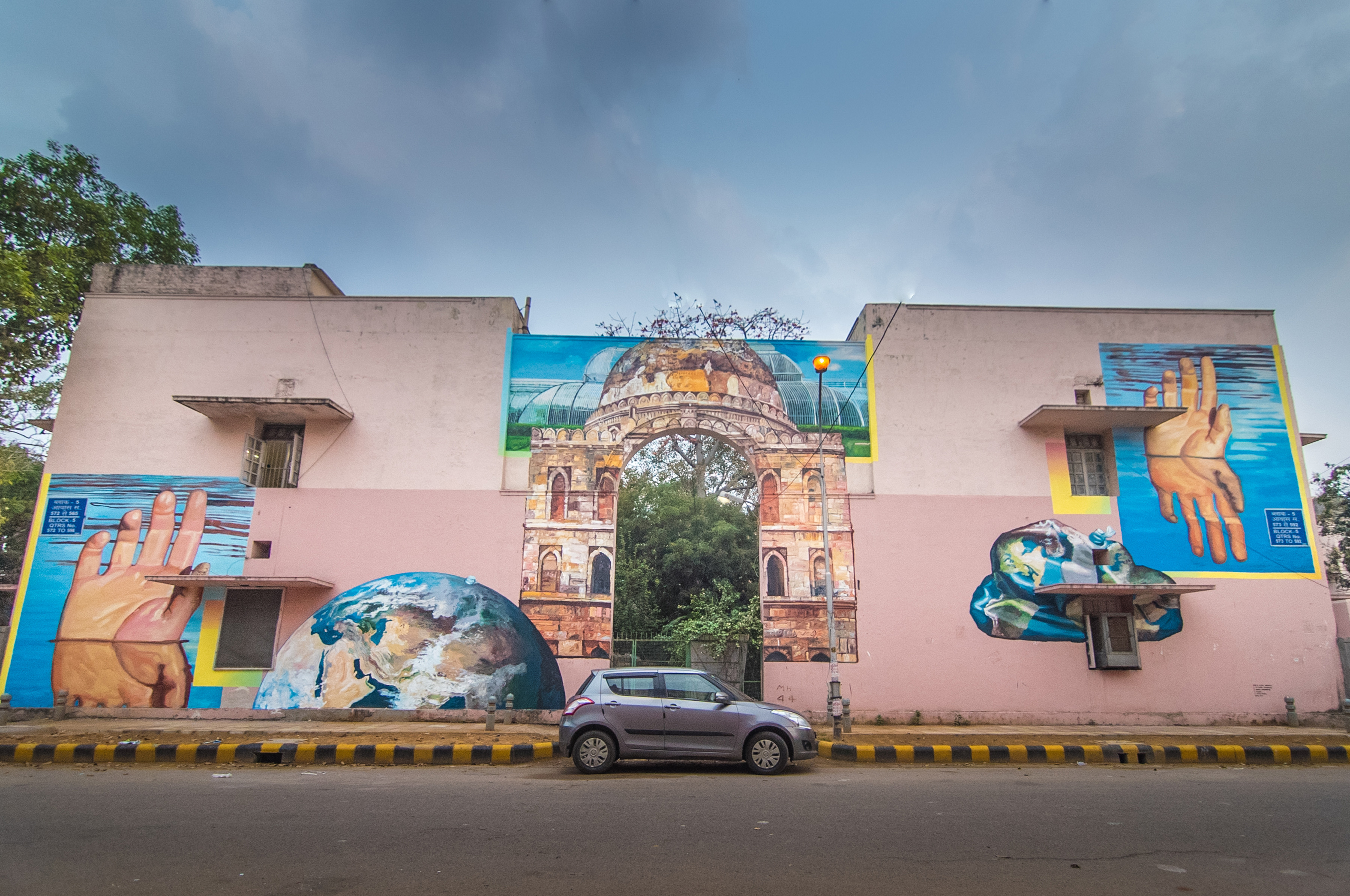
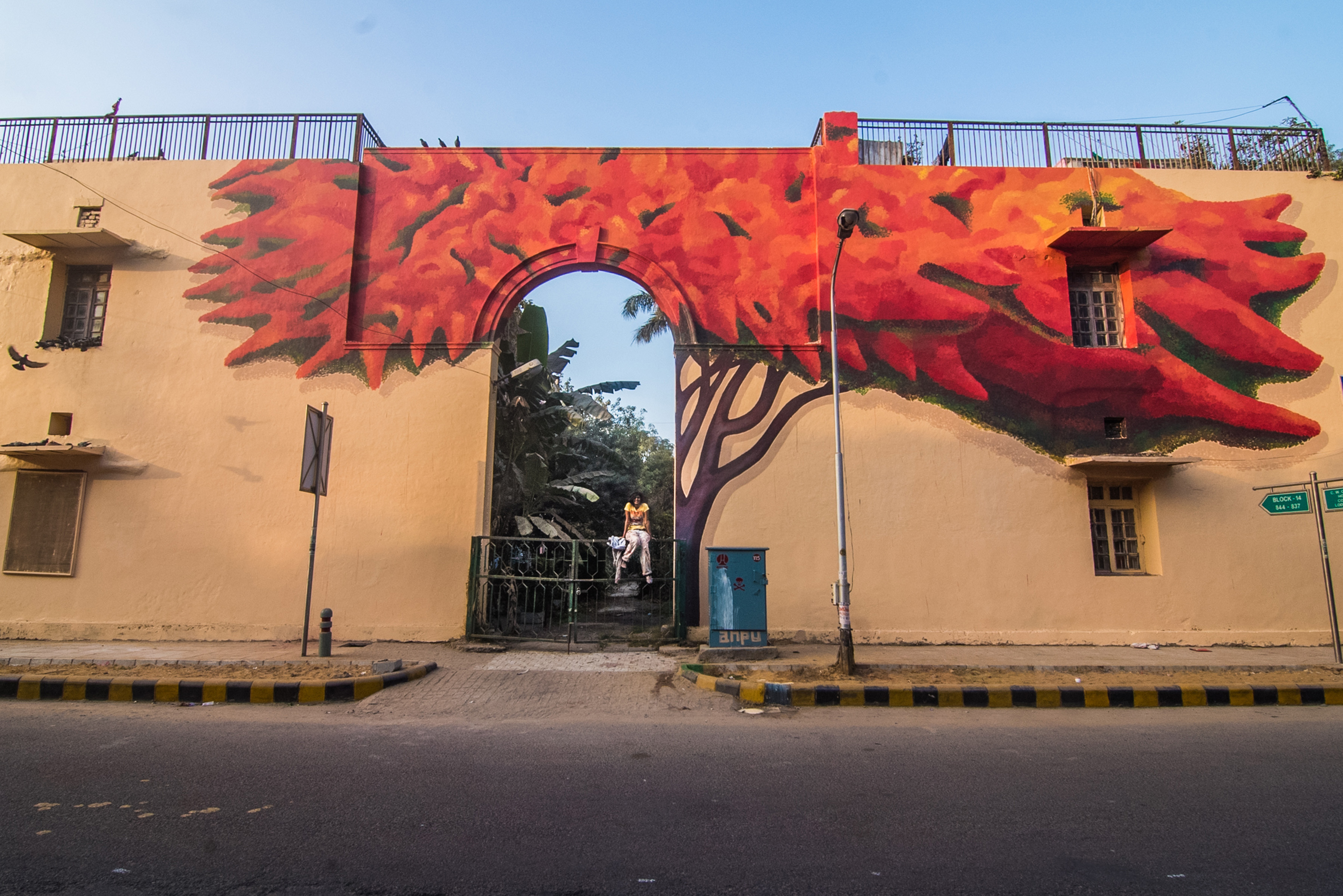
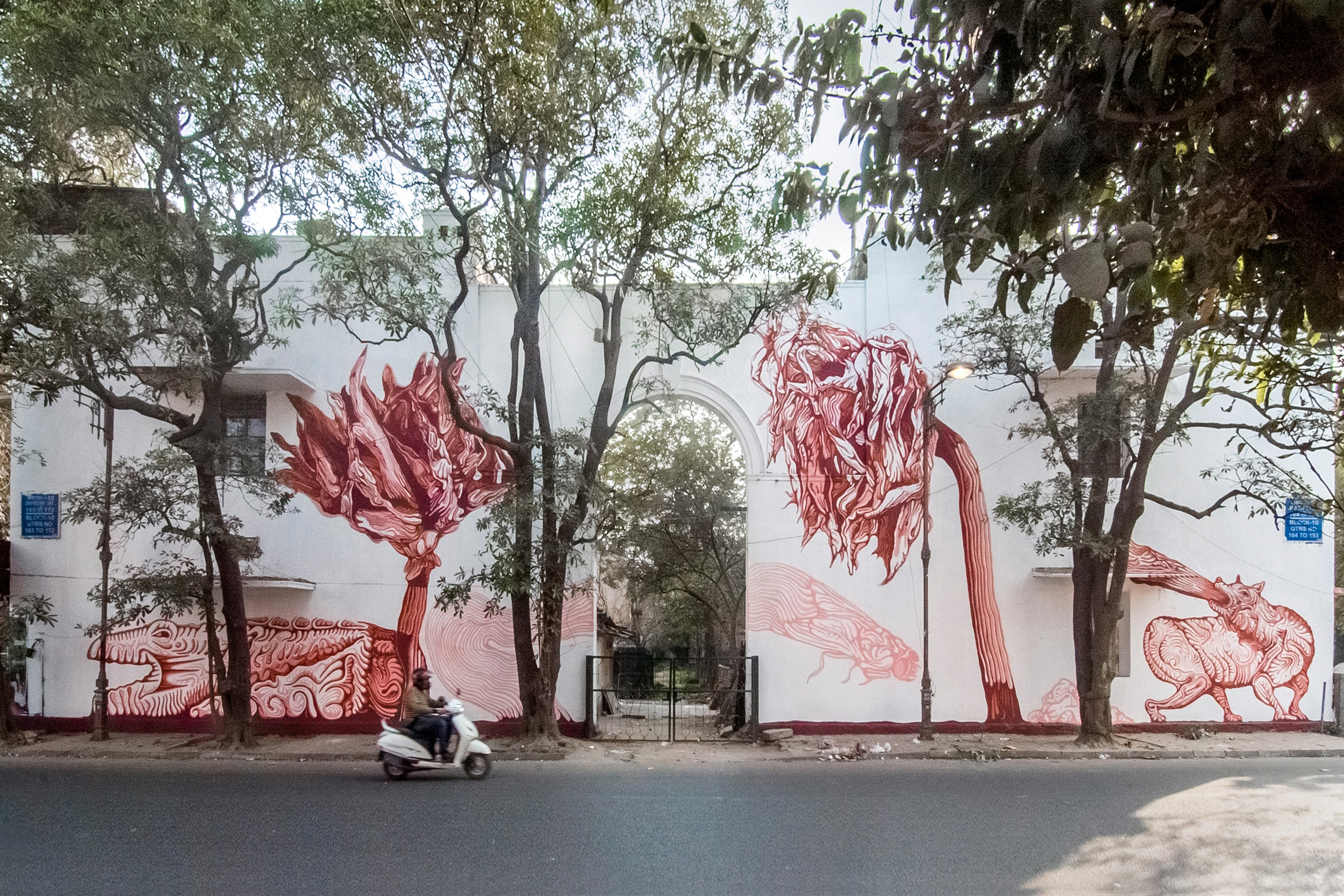
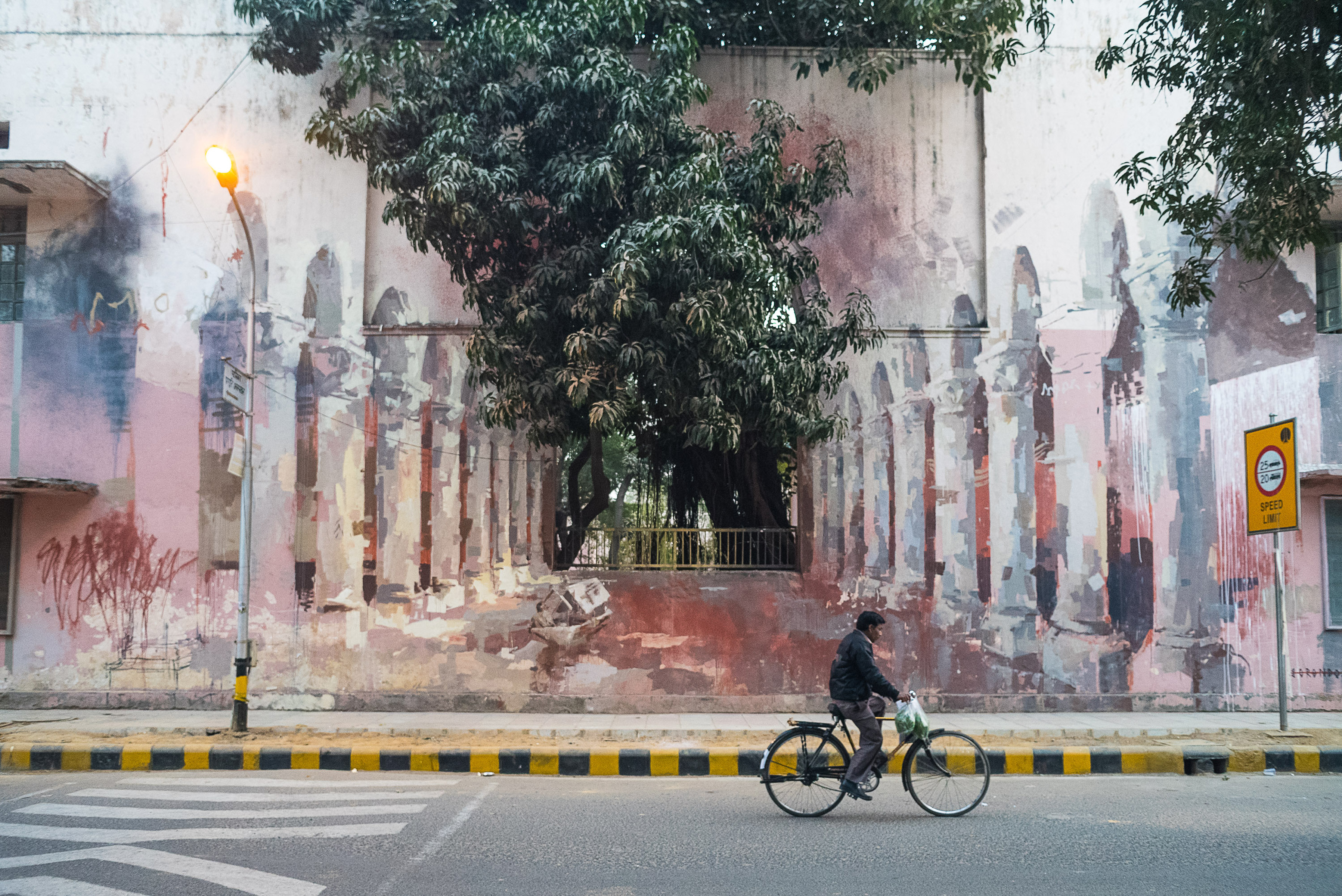
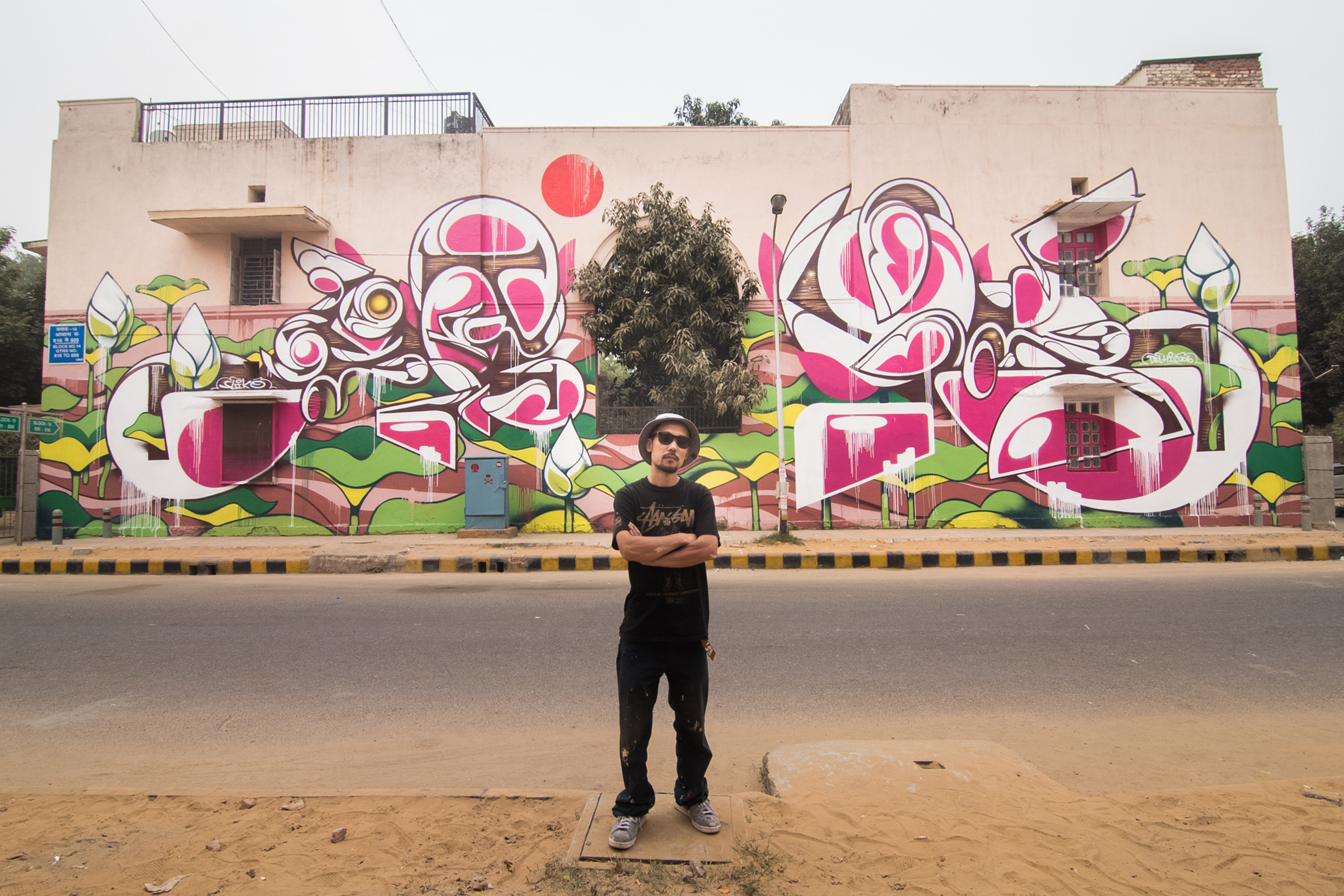
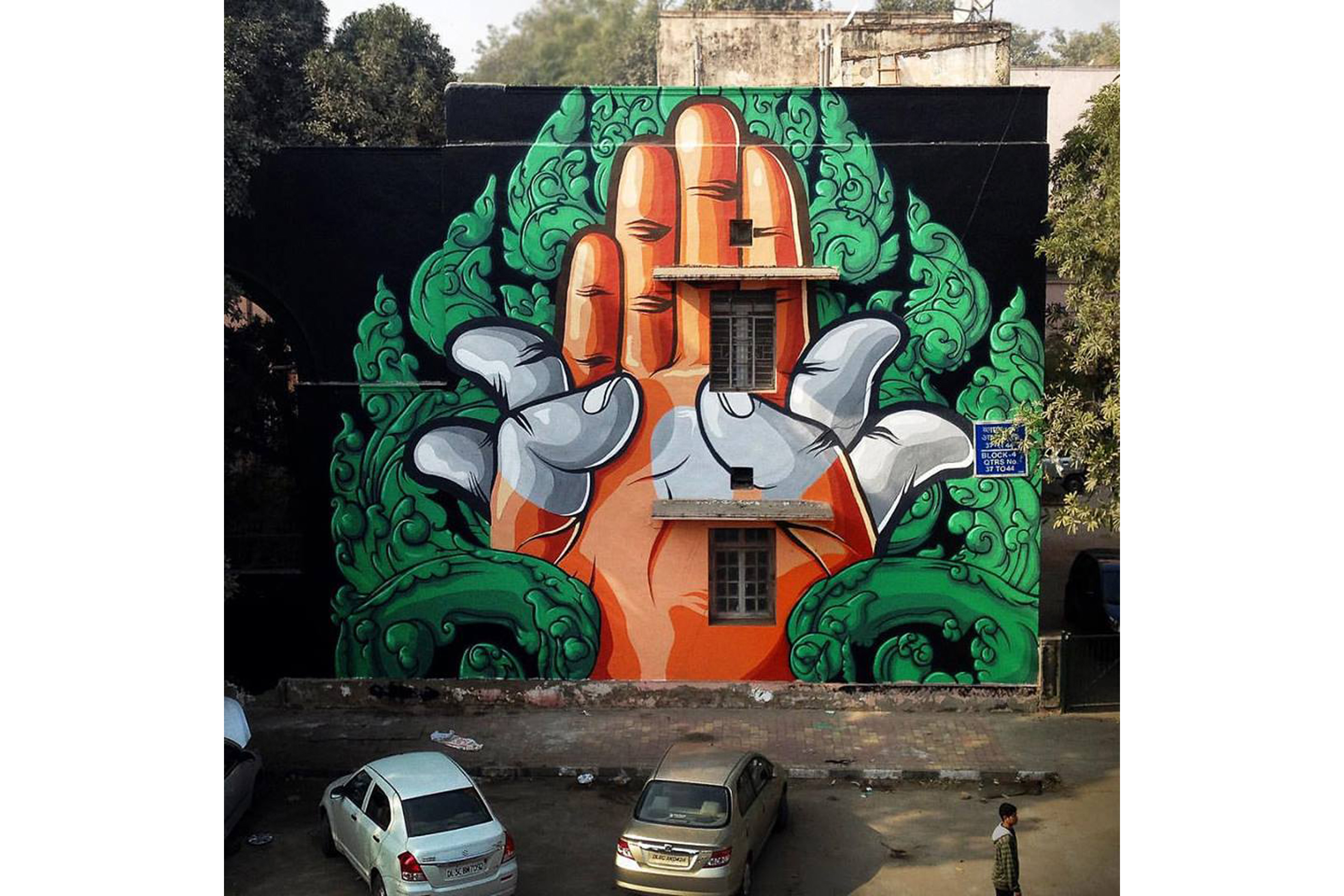
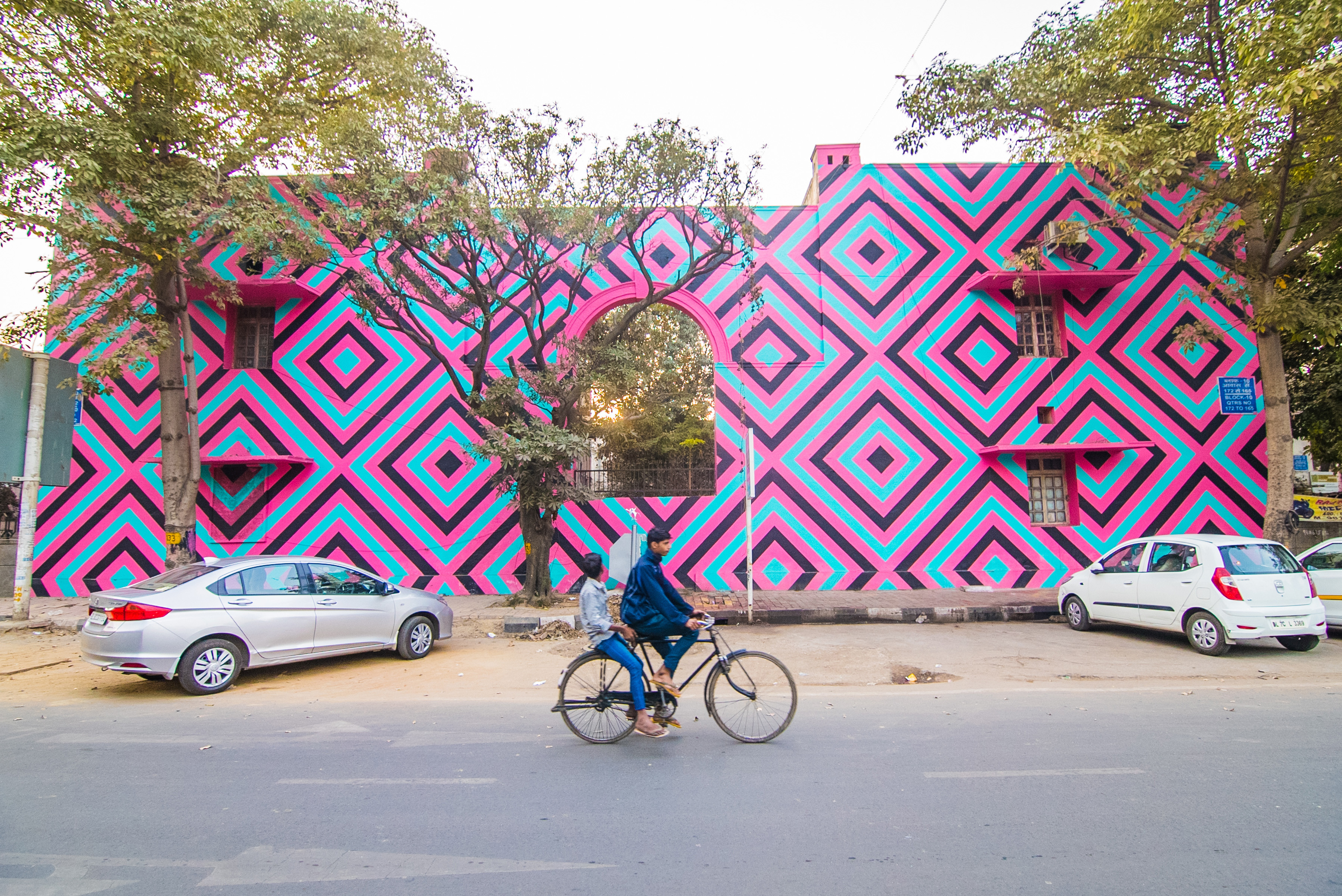
Having been acquainted with the enormous potential of Lodhi Colony in 2016, works continued to be added to the art district in the following years.
In 2017, we invited Brazilian duo Bicicleta Sem Freo, who usually work together, to simultaneously yet individually paint two walls, facing each other. Canadian artist, Aaron Li-Hill also created a call for action by depicting the local realities of climate change in India and Canada.
In 2018, artist Saner used his observations from his first visit to Old Delhi to create a piece that blends Indian and Mexican imagery. He depicted diverse flora and fauna in the mural to give expression to his belief that the natural world connects us together by giving us a spiritual understanding of life.
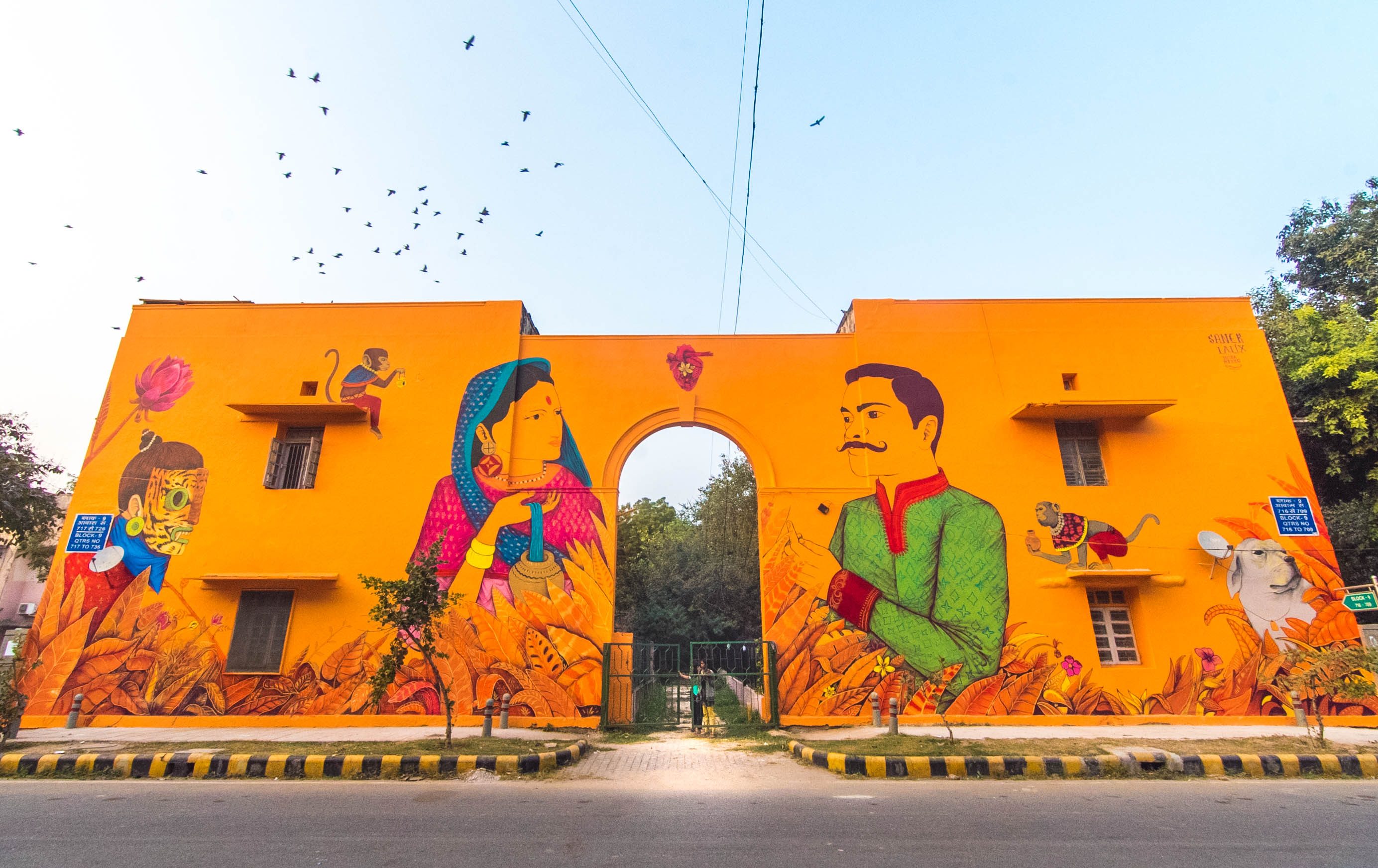
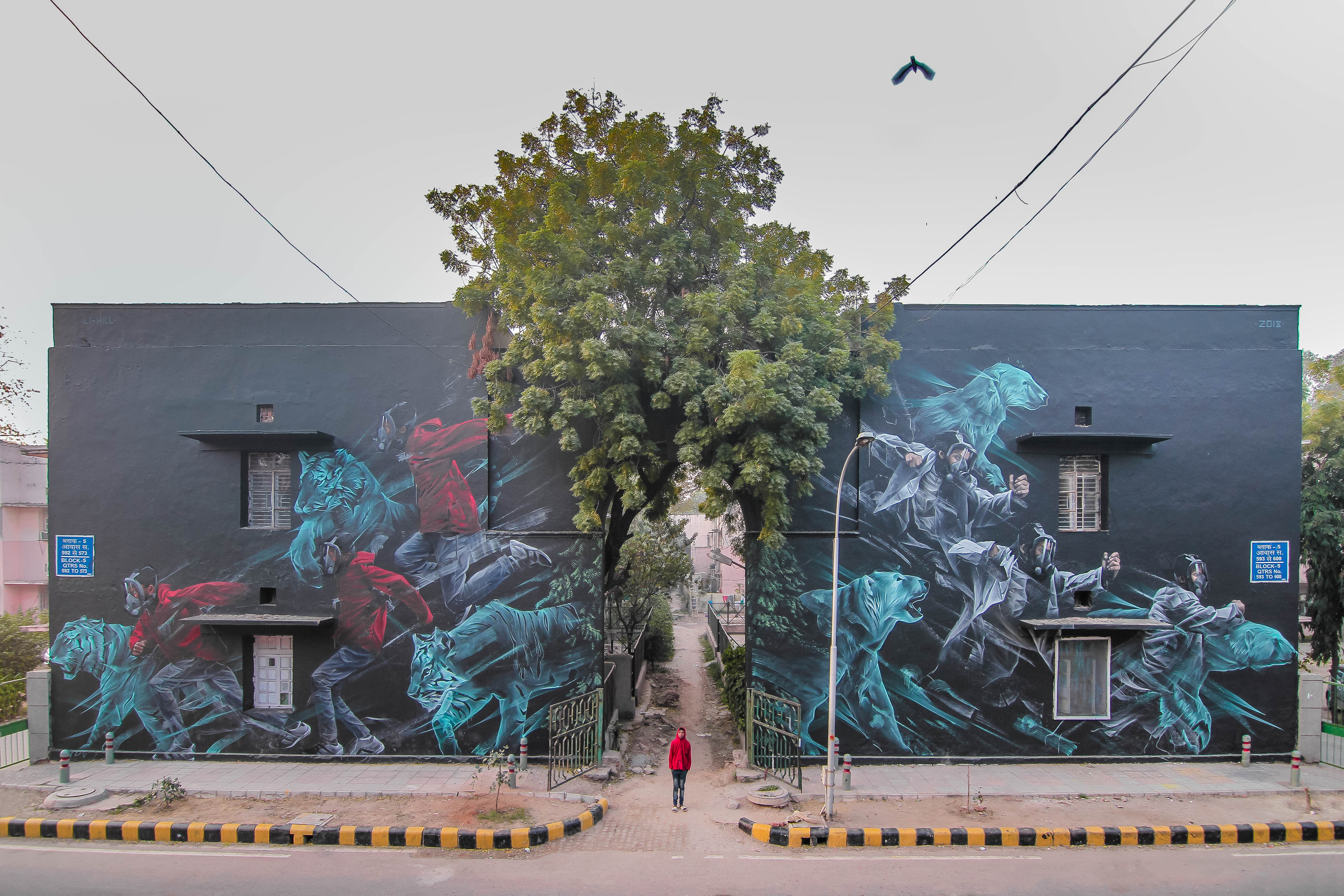
Artworks added during St+art Delhi 2019 contributed significantly to shaping the district’s present form. In 2019 the Lodhi Art District had 56 murals made by artists from 25 countries. A diverse artist representation ensured that concepts driving the artworks were equally varied to give us a peek into the present global zeitgeist.
On their maiden visit to the country and the neighbourhood, many international artists found themselves filled with wonder, encountering a world that was vastly different from theirs. India’s, especially New Delhi’s and Lodhi’s, myriad sights, smells, and histories inspired these artists’ pieces, who translated them into vibrant murals on the walls of the colony, representing their interpretation of our country’s culture.
Artists also incorporated architectural elements exclusive to the walls in Lodhi to fashion their artworks accordingly, or to highlight particular aspects of their piece. German artist Bond was so impressed by the nuances of Lodhi Colony’s walls that he painted his signature in synergy with their texture. Art collective Majlis Art Forum used the trees in front of their wall to convey a powerful message through their artwork, made in tandem with the trees.
To draw attention to a pertinent problem of the day, many artists chose to depict present ecological realities, not only of New Delhi but of cities across the world in their respective pieces.
The 2019 festival also witnessed the addition of augmented reality pieces in a public space for the first time. While reimagining public spaces, these pieces sought to engage their audience using the most contemporary forms of media. Several other pieces attempted to incorporate socially relevant themes like women empowerment, gender injustice, disappearing traditions, and the growing reach of social media in their conceptualisation and execution.
This mural culminated on 8th March 2019 with a special program on this street featuring diverse voices to speak about and celebrate womanhood at large. The female folk singers of Kathputli Colony opened the event with songs about strength and freedom, while artist Sonia Khurana in conversation with curator Myna Mukherjee spoke about the role public art plays in amplifying feminist discourse for everyday people.
The same stage was shared by Tomasz Kozlowski, Ambassador of the European Union to India
and Lakshmi Puri, former Assistant Secretary-General at the UN and former Deputy Director of UN Women who joined in this celebration which was proudly supported by the European Union.
This vibrant program was attended by all - from government dignitaries to the local hawkers who work on this street every day - showcasing the perfect example of how public spaces can be utilised for public causes.
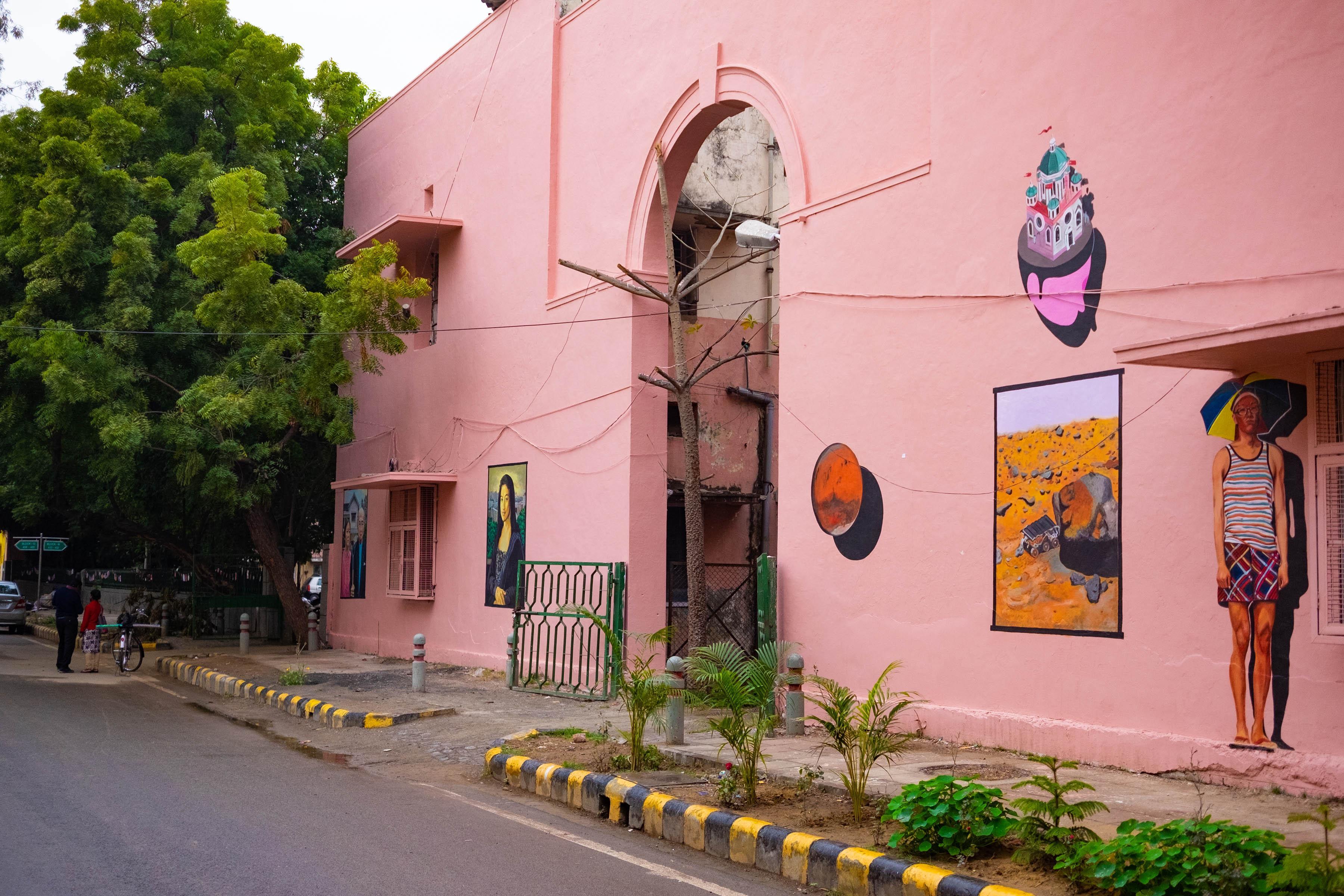

From 2015 to the present, art and territory have established a relationship of interdependence and synergy in the Lodhi Art District. Art drew inspiration from the context and acted as a binding factor becoming an integral part of the social infrastructure. After various participatory activities conducted over the years, in 2018 St+art began a vertical to involve the Lodhi community through different cultural interventions and programmes.
For a month, the St+art team reached Lodhi in the wee hours of the morning to meet the distributor of the daily newspapers and insert informative brochures and questionnaires that reached 7,500 households a few hours later. Soon after, the team went to the neighbouring slums, to distribute the same brochures by hand, as newspapers are not delivered there. The brochures reported information on St+art and its approach to public art, accompanied by questionnaires aimed at creating a database in order to structure tailor-made activities for different age groups, according to the interests of the inhabitants.
Based on the feedback received, St+art planned a series of events and workshops that led the inhabitants to rediscover their territory, collaborate with each other and become an active part of Lodhi's cultural ecosystem for the next three months. Workshops of painting, dancing, poetry and many others enlivened the people and their spaces, culminating in a two-day celebration in which the inhabitants exhibited their works and performed songs and dances.
The participatory mural remains a testimony of this process. Designed by the artist and typographer Dattarji, the piece wraps the wall with the words "Saath Saath" in Hindi, which translates to "together". Painted by close to one hundred residents led by the artist, the work includes some of the keywords that emerged from the questionnaires about what was fundamental for the community. Water, air, safety, art, education, are just some of the words painted over the large letters of "Together". A manifesto of sorts, to remind us what common resources are, and how we can think and act collectively to preserve them.
To extend the Lodhi Art District experience beyond its borders, St+art initiated curated tours that still have wide participation and a diverse audience. With the NGO Access for all the St+art motto "Art for all" has been synergically implemented in guided tours dedicated to visually impaired people. Walking from wall to wall, participants enjoy the work thanks to tactile and braille illustrative panels
Beyond the walls
The streets of Lodhi have often been transformed into open platforms for free concerts, dance shows and performances, ranging from traditional forms such as puppeteers and snake charmers to varied contemporary experiments. The latter have often been organized on the occasion of cultural events where the art world is buzzing also with plenty of international guests but strategically connecting with the city.
This is how the “evenings in Lodhi” were born, the first of which united the pioneer and icon of Indian contemporary dance Astaad Deboo with French dancer Ali Salmi, in a dance performance informed by the confluence of two different cultures.
A performance that began in the street, moved inside one of the courtyards, accompanied by a swarm of people, that discovered the space and architecture through an emotional and physical journey guided by the moving bodies of the two dancers. A dance of life, where the stage gave way to stairs, trees, street lamps and balconies. The inhabitants opened their private spaces, rediscovering their value through this experience.
A year later, Ali returned to Lodhi, where he had been fascinated by the market and the bridge that overlooks one of Delhi's main arteries. Recently built, the bridge reflects the scale and features of the new urbanism, detaching itself from the human-scale architecture of Lodhi, yet not escaping the temporary appropriation and conversion of public spaces by private citizens that often characterize the dynamics and portrays the visual panorama of the roads in India. The bridge is in fact used as a giant clothesline by the market laundries. Ali humanized this infrastructure even further with his performance.
The performance was accompanied by a video projection and a rap showcase by two young Indian exponents as these elements are important to make the dance part of the place, the city and the audience. Salmi explains: “The city is alive, we are a part of it and it is a part of us”.
INAUGURATION
The Lodhi Art District was inaugrated as the first public art District in India with some very special guests on 1st March 2019.
Work on the Lodhi Art District began in 2015, when we did a couple of murals in Lodhi, and understood the true potential of the space as a walk-through art district. Since then we have continuously been working here, adding more works, which now have fifty-nine murals made by some of the most prolific Indian and International artists.
Speaking on the association, Shri Prabhakar Singh, Director General, CPWD said, “The CPWD has been supportive of this endeavour of creating India’s first public art district over the last 5 years, we are happy to unveil the Lodhi Art District this year with a special map, as well special focus on community interactions and ownership and share in the vision that Art should be accessible to all”.
Today, Lodhi Art District is widely recognized as the first open-air art district of the country and the reception received by it in terms of footfall, the number of tours and walks being organised, photo and video shoots taking place, and an increased sense of community pride amongst its inhabitants encourage us to build on the district every year. It also beckoned us to create art districts in other cities - the ‘Mahim (E) Art District’ in Mumbai, and the ‘Maqta Art District’ in Hyderabad.
